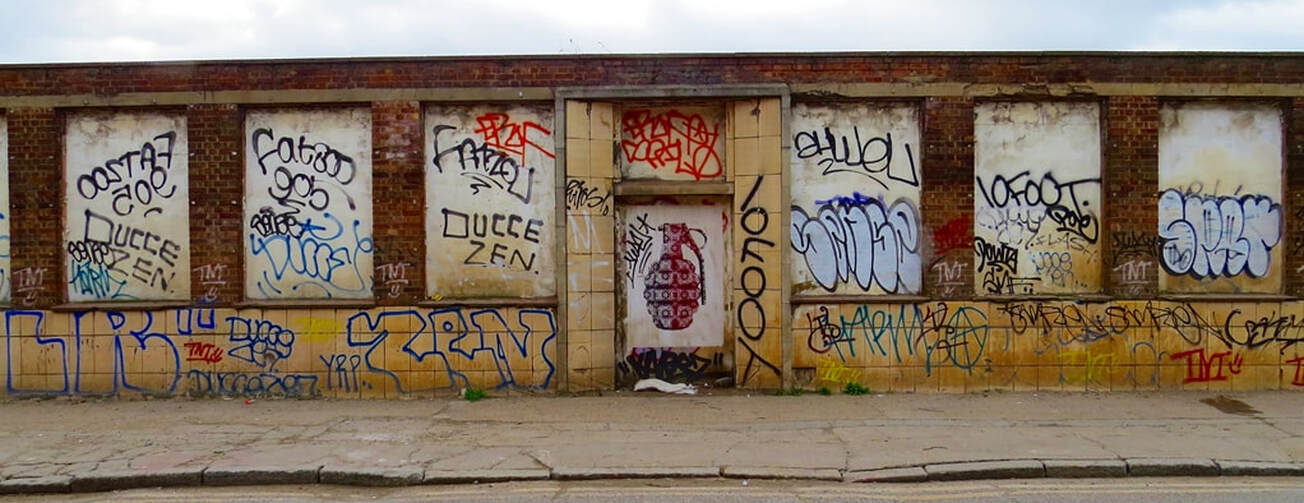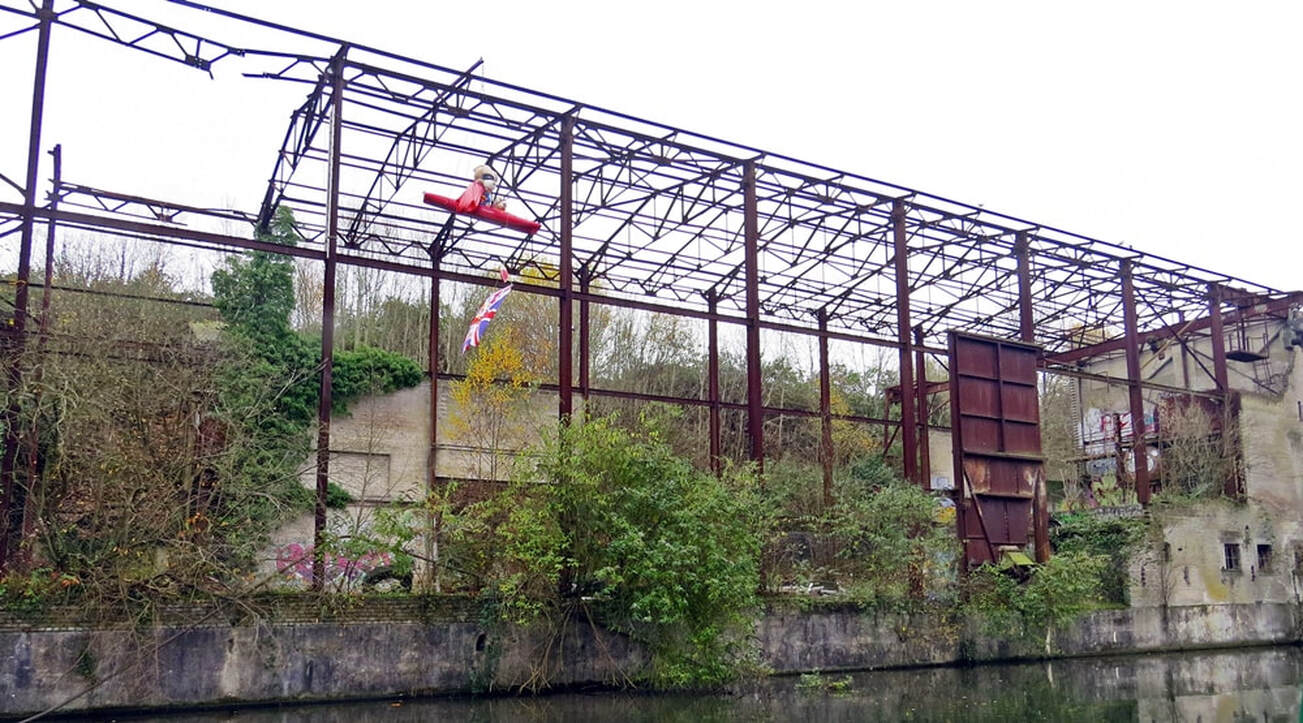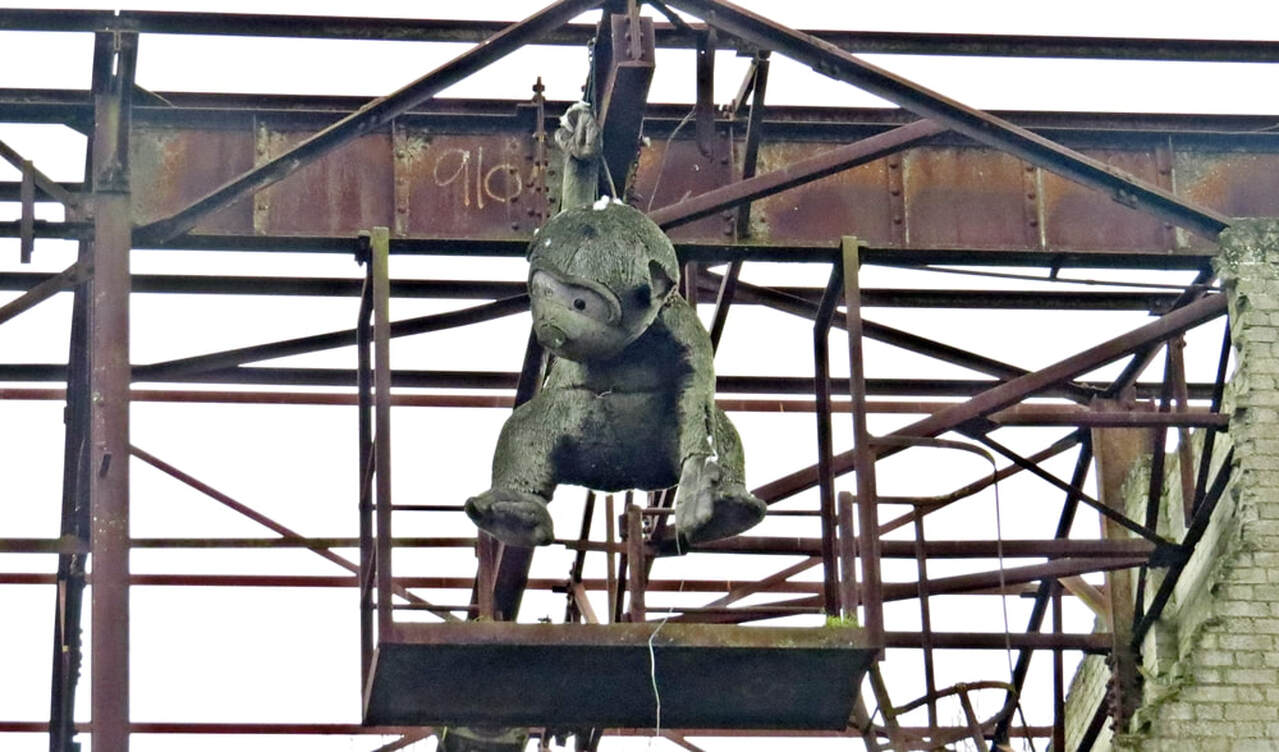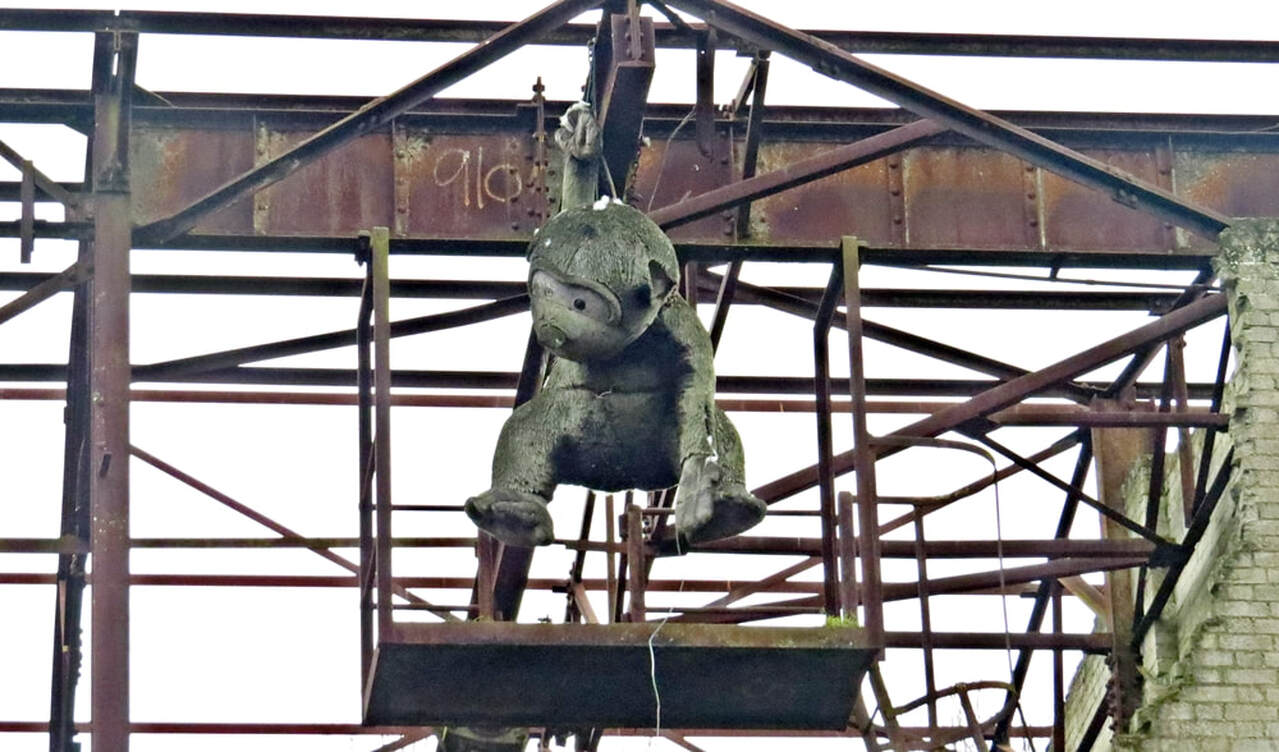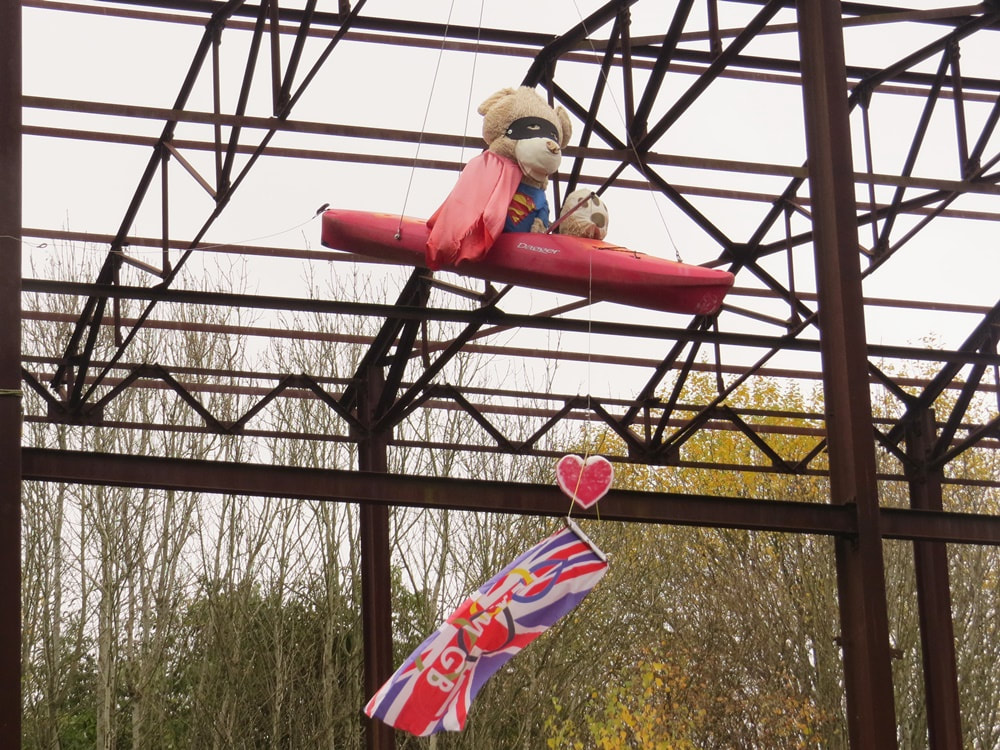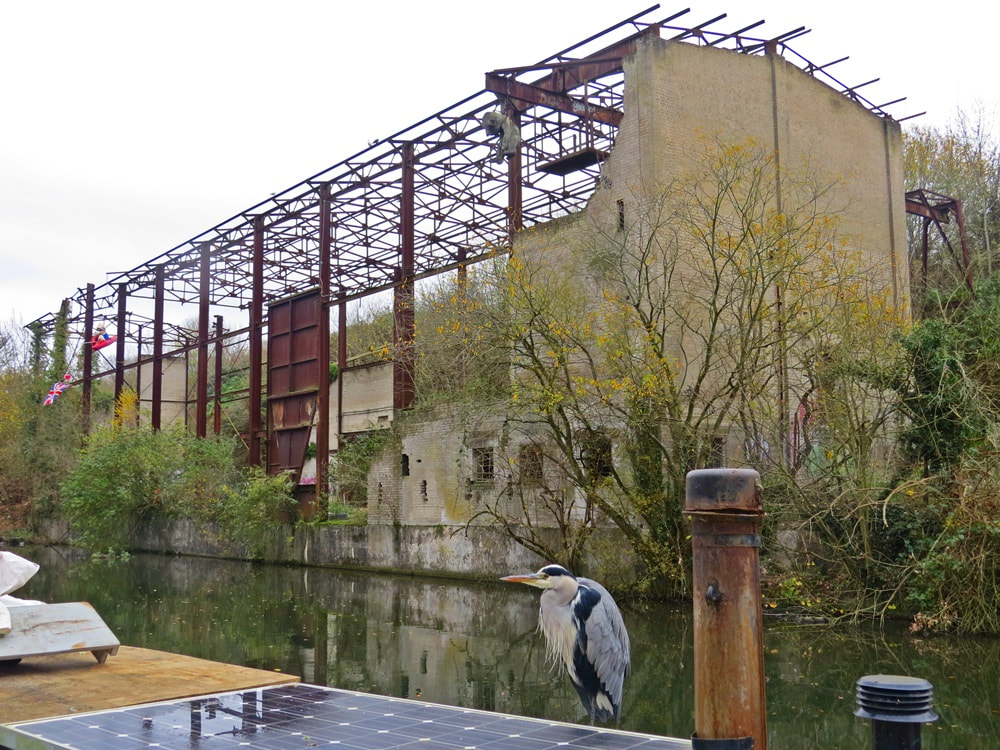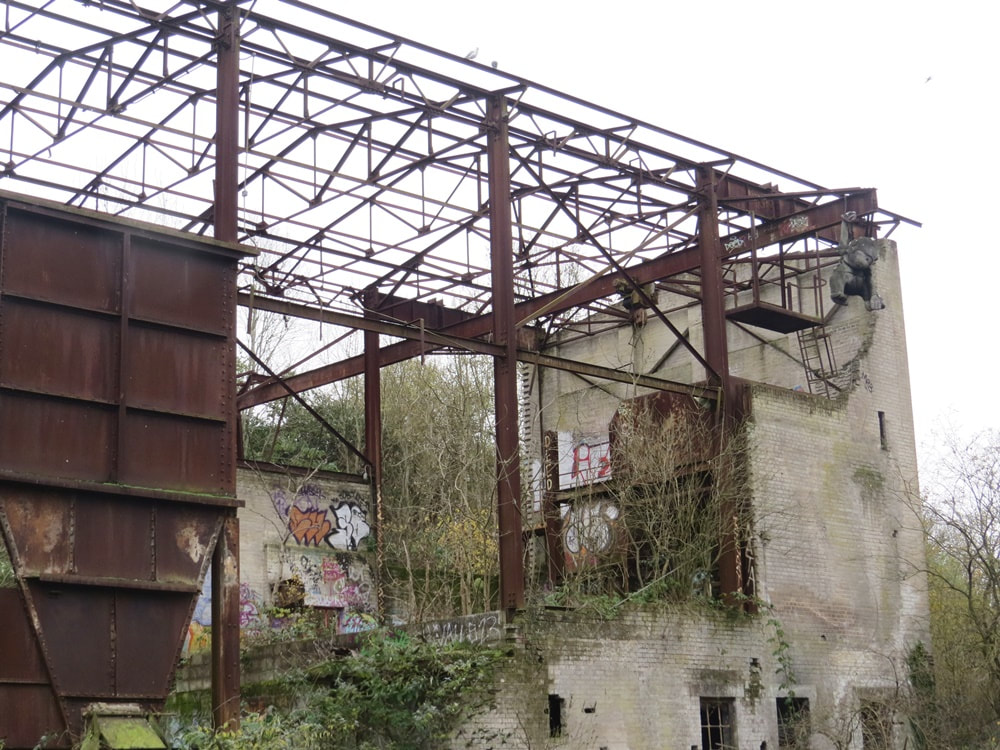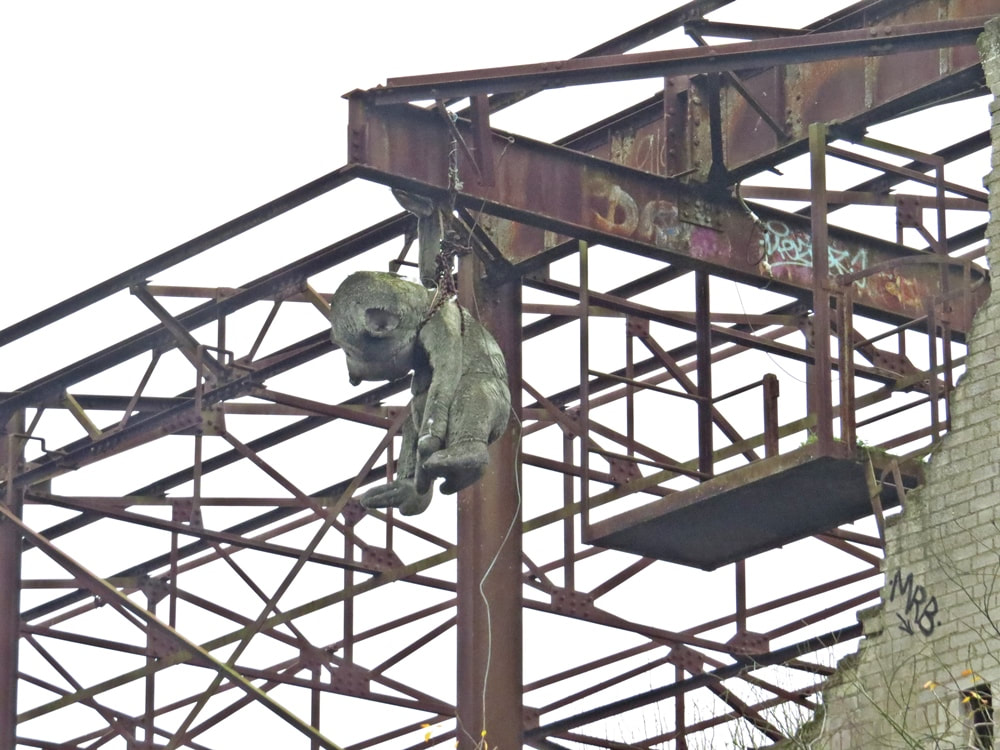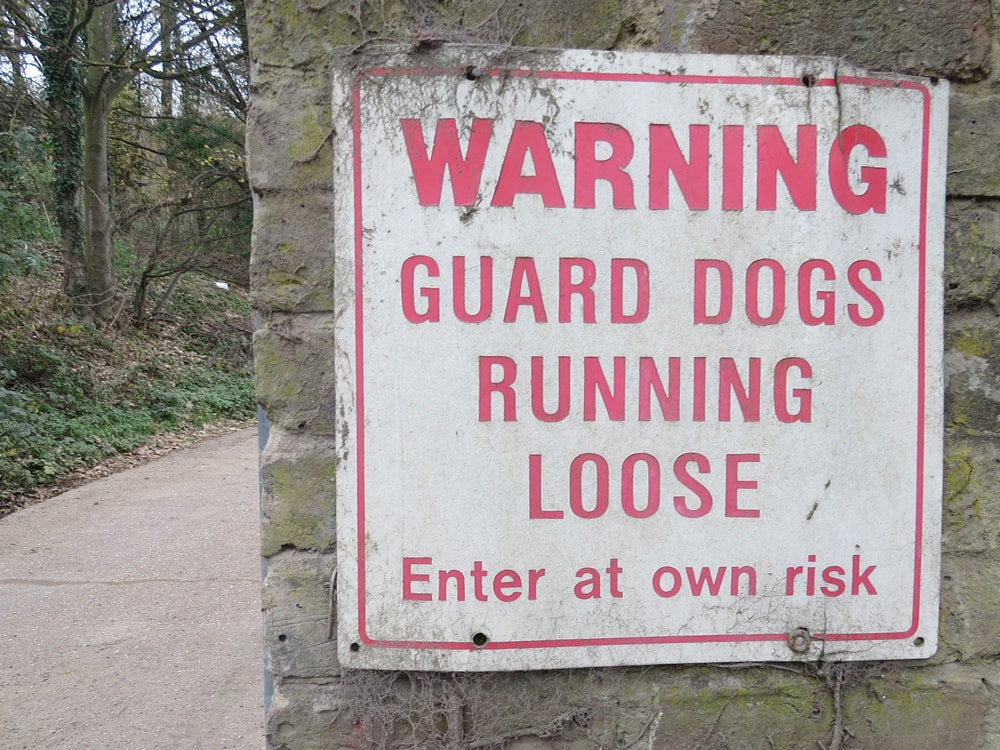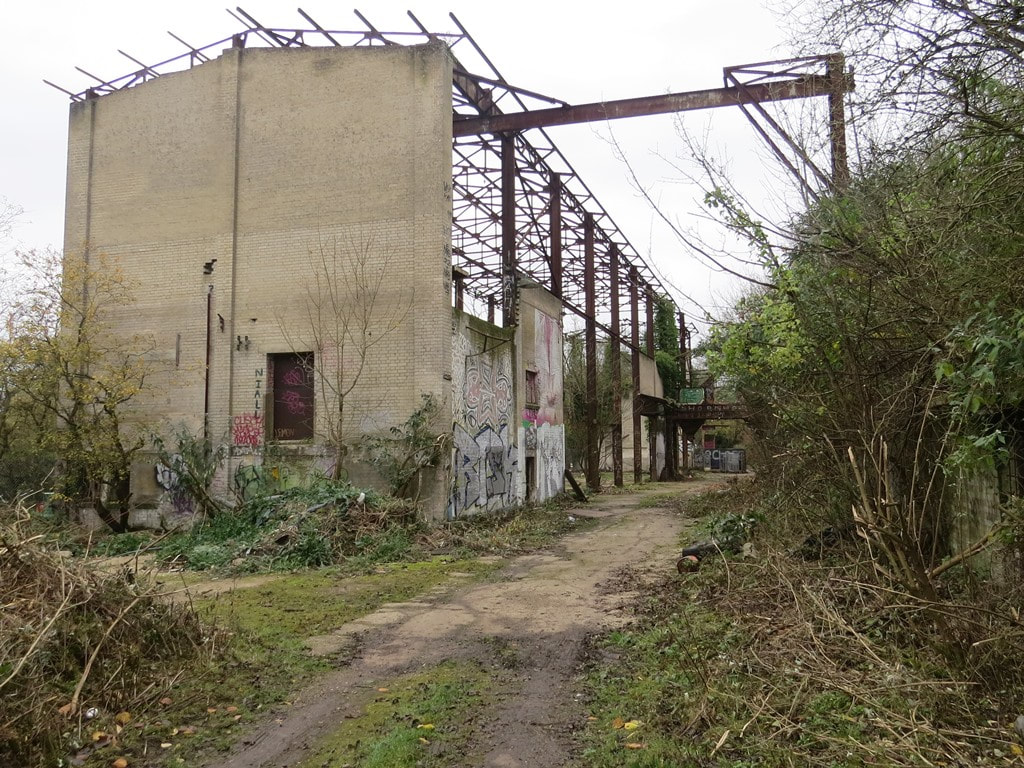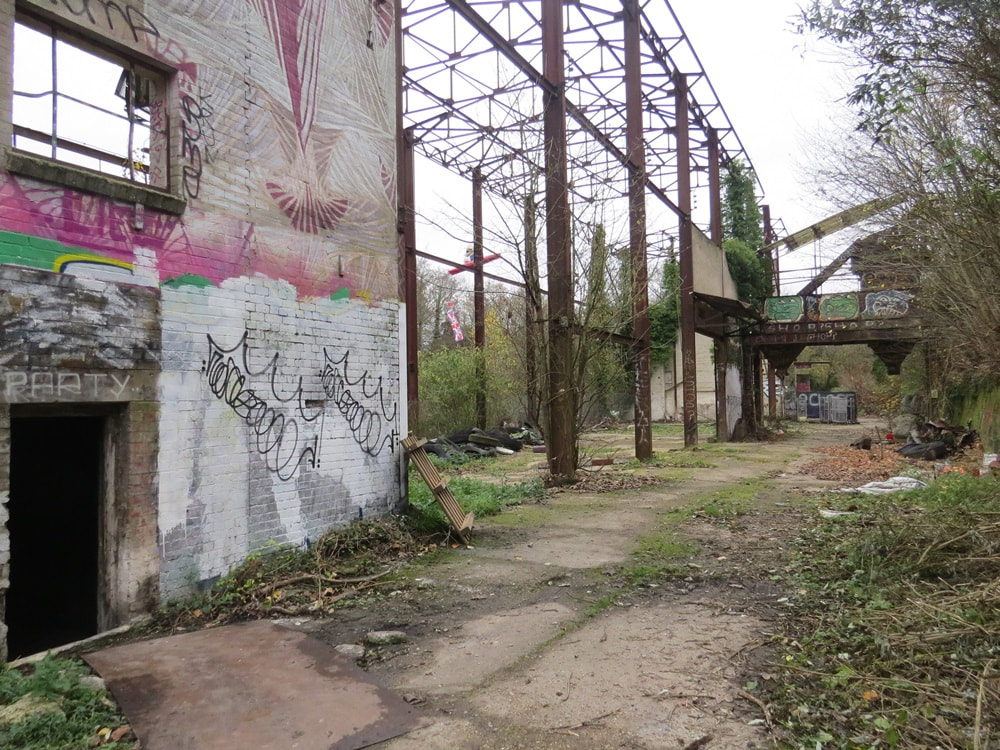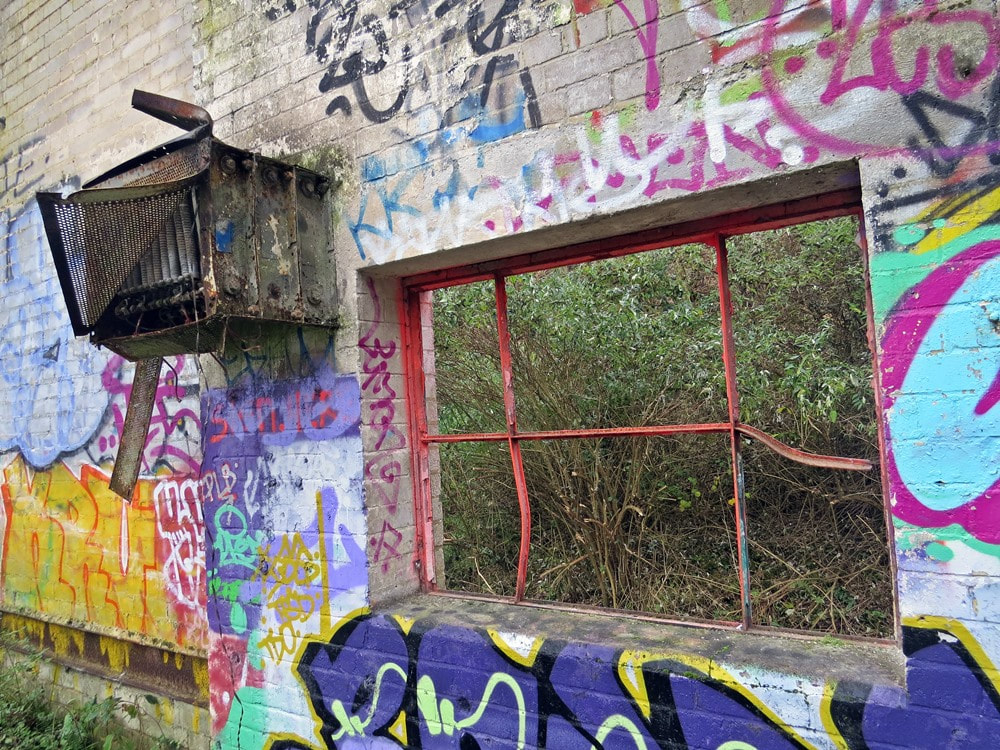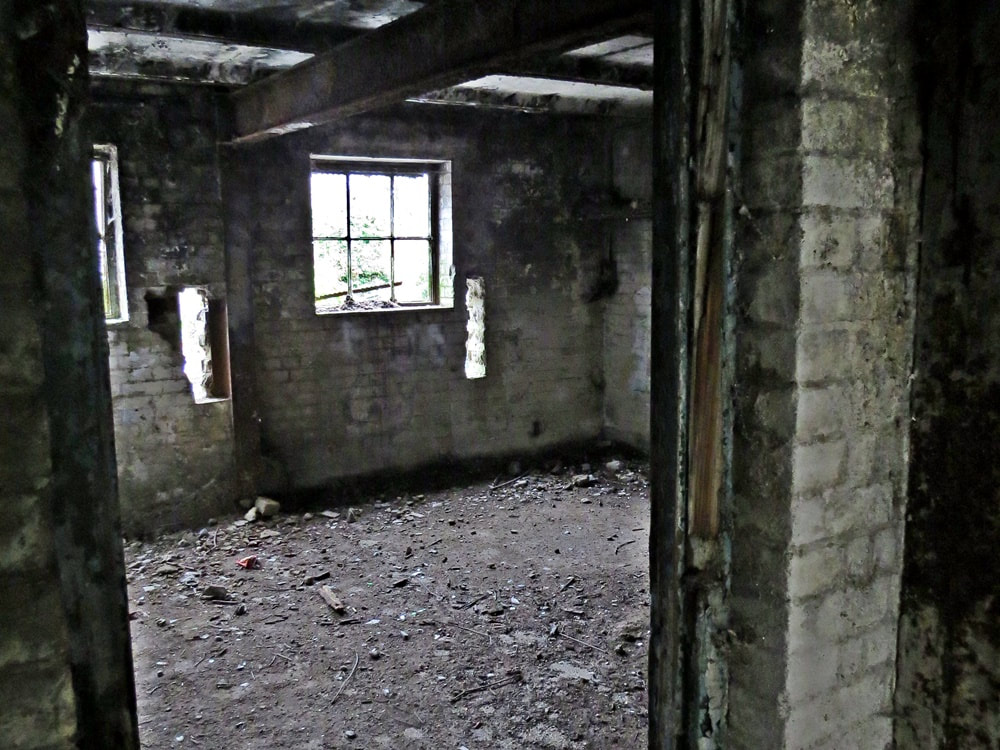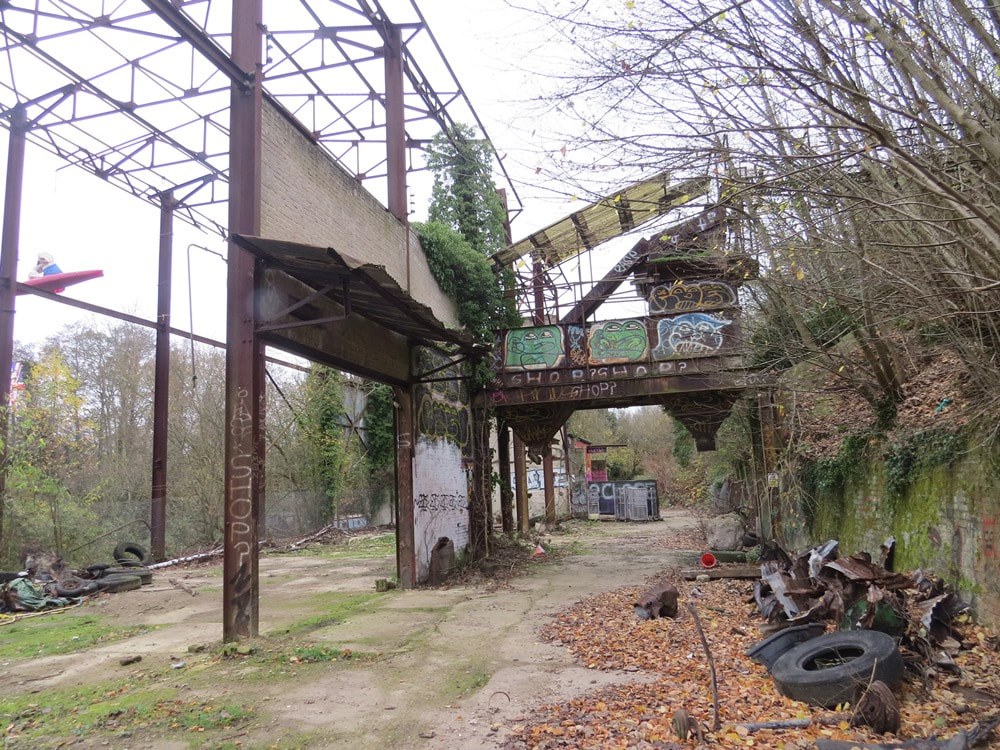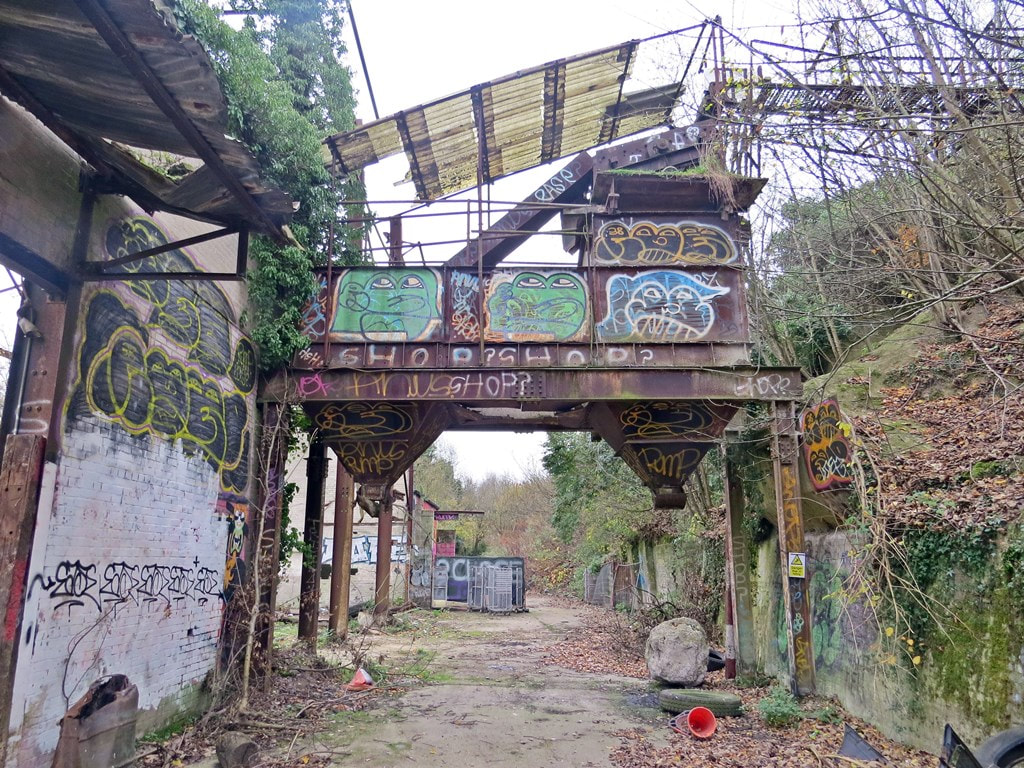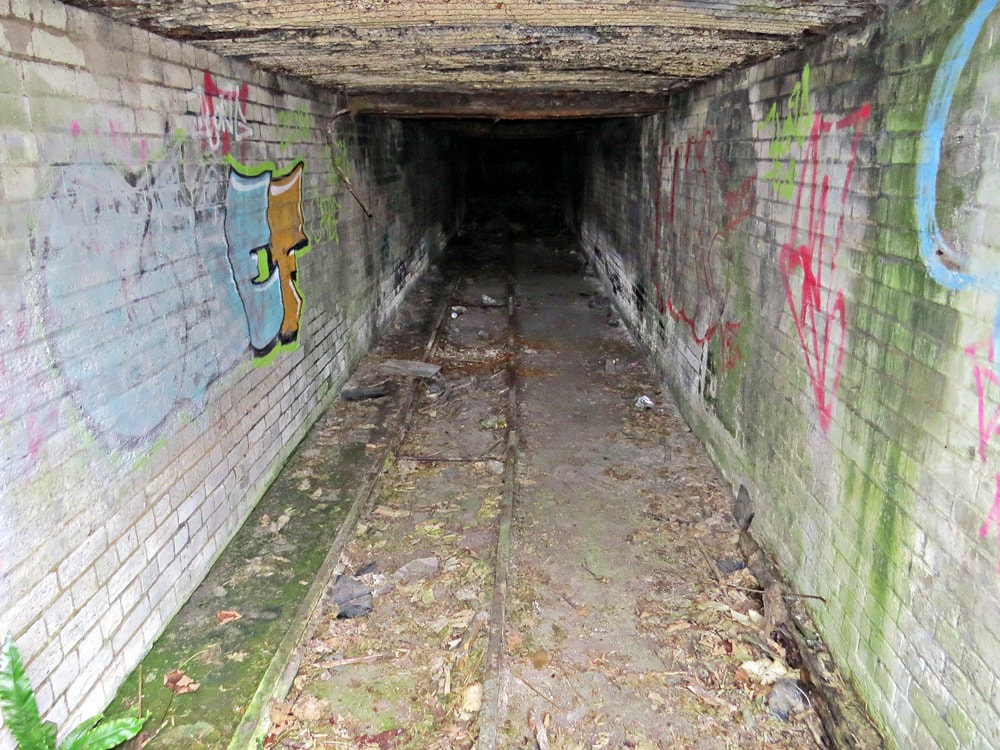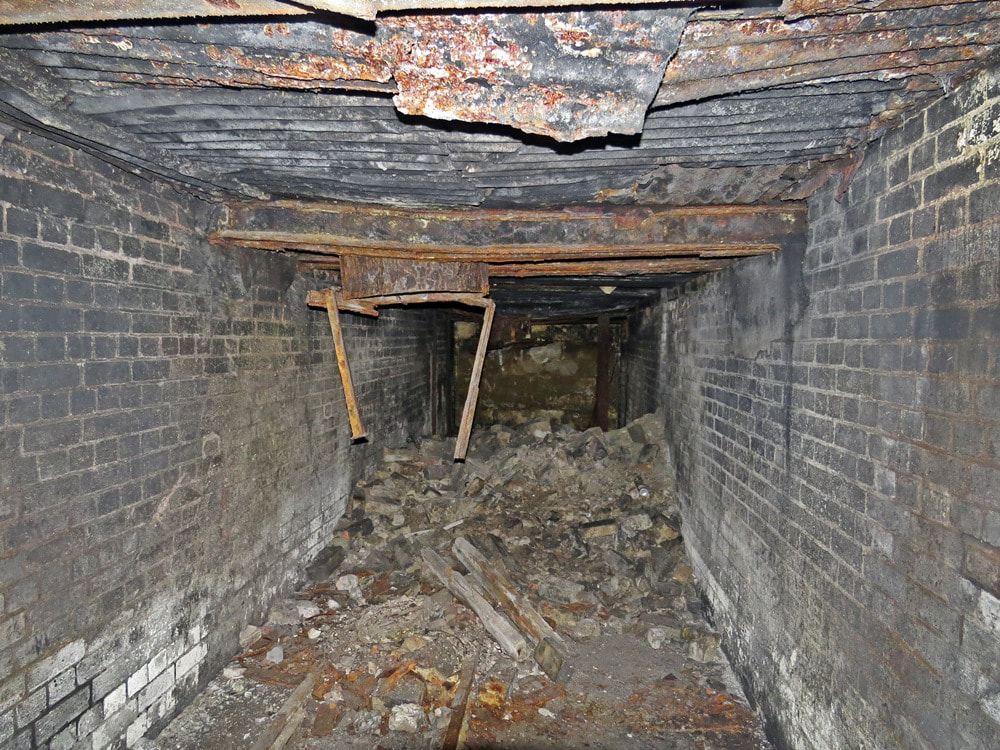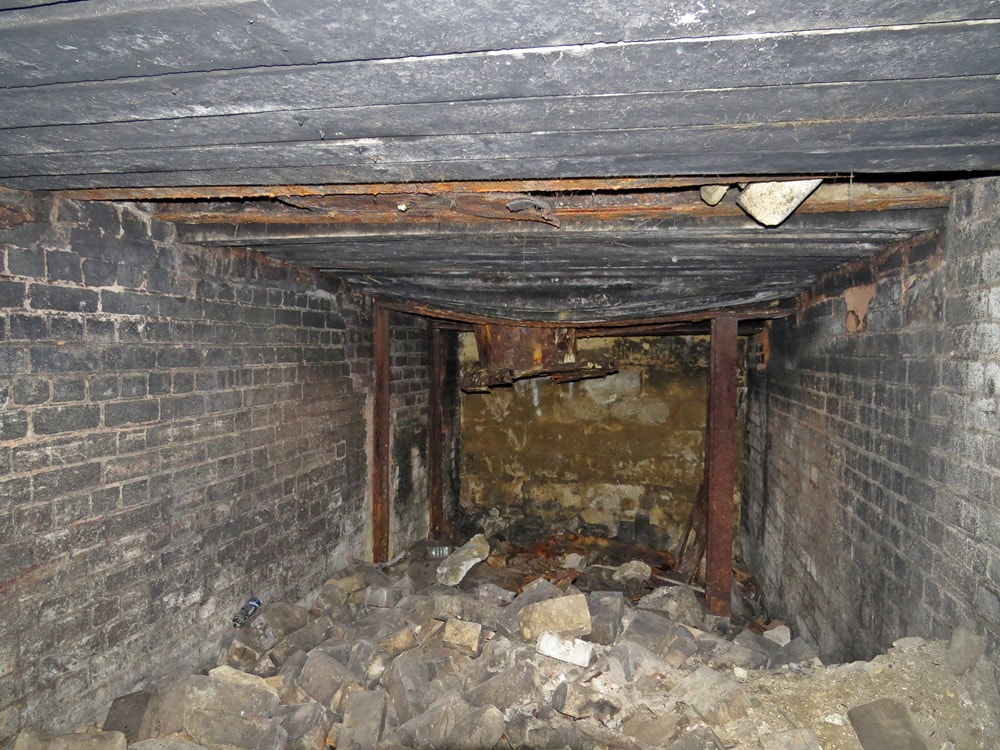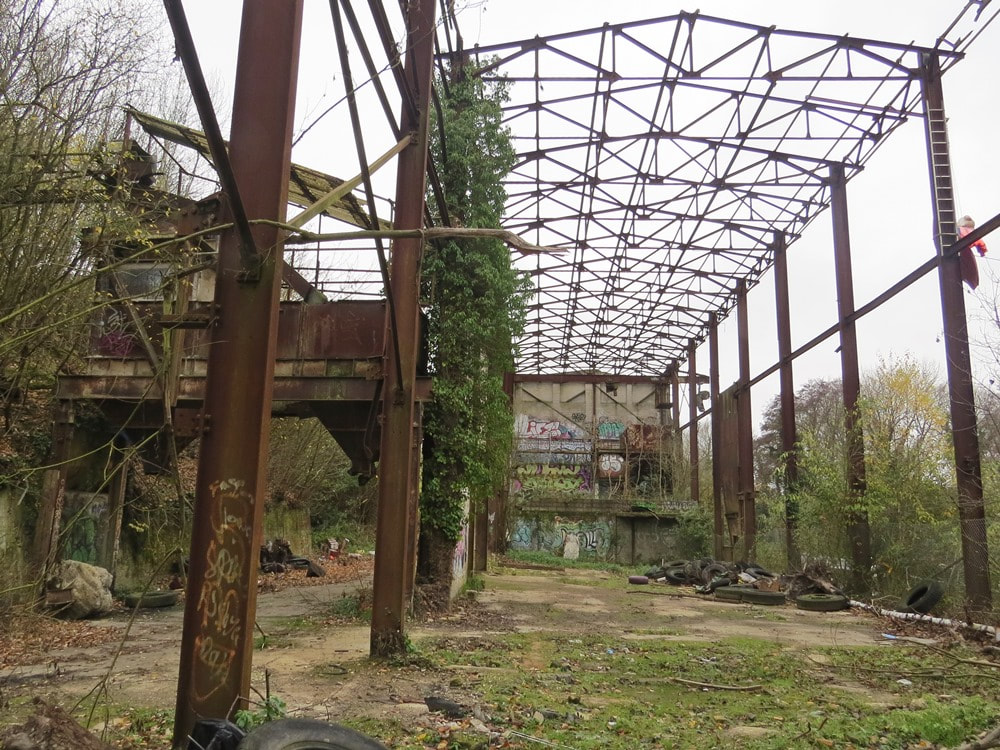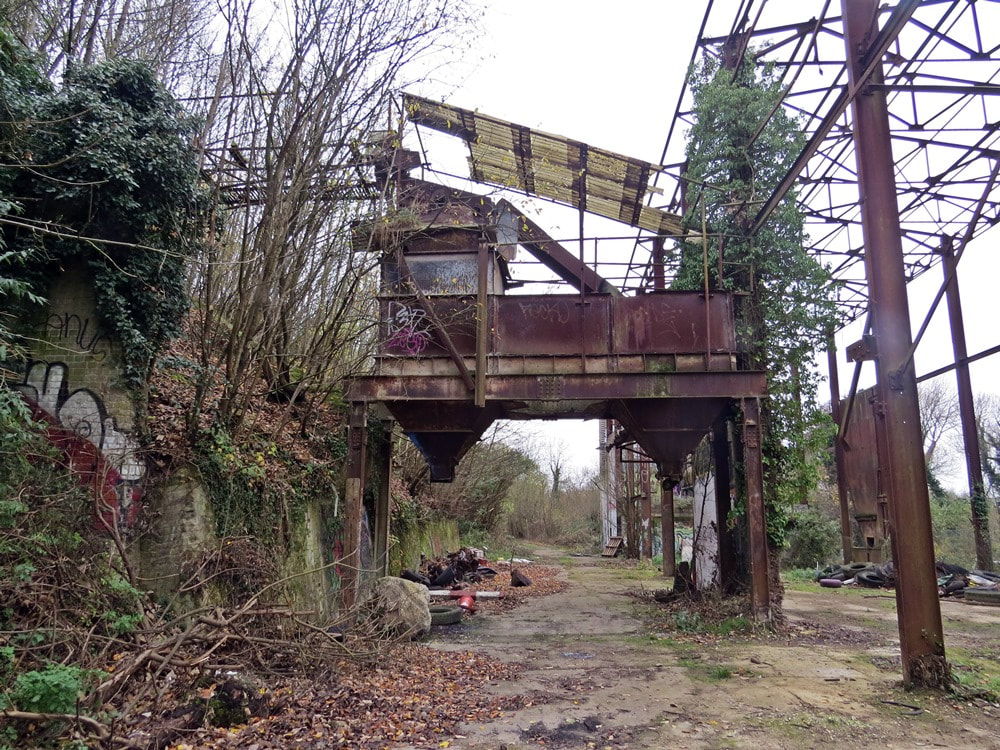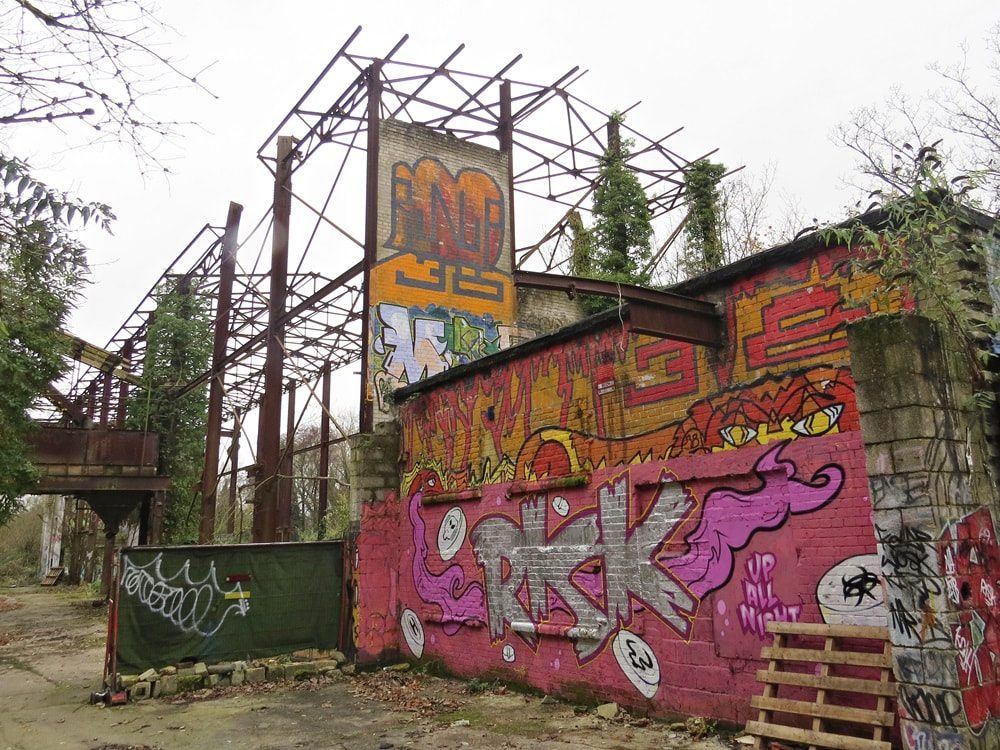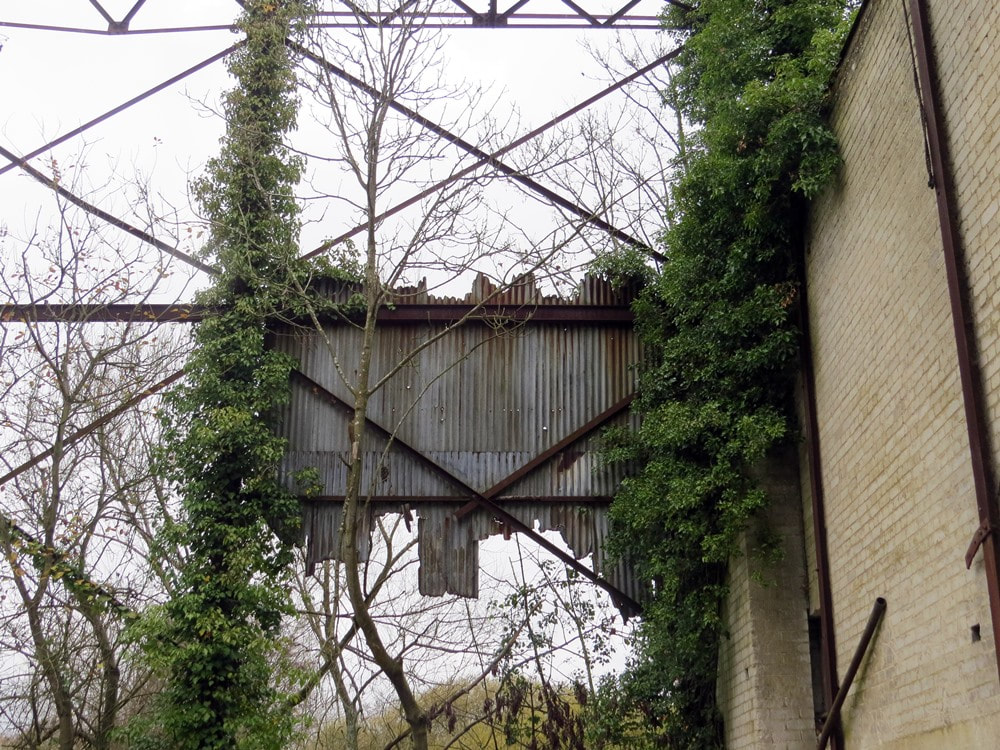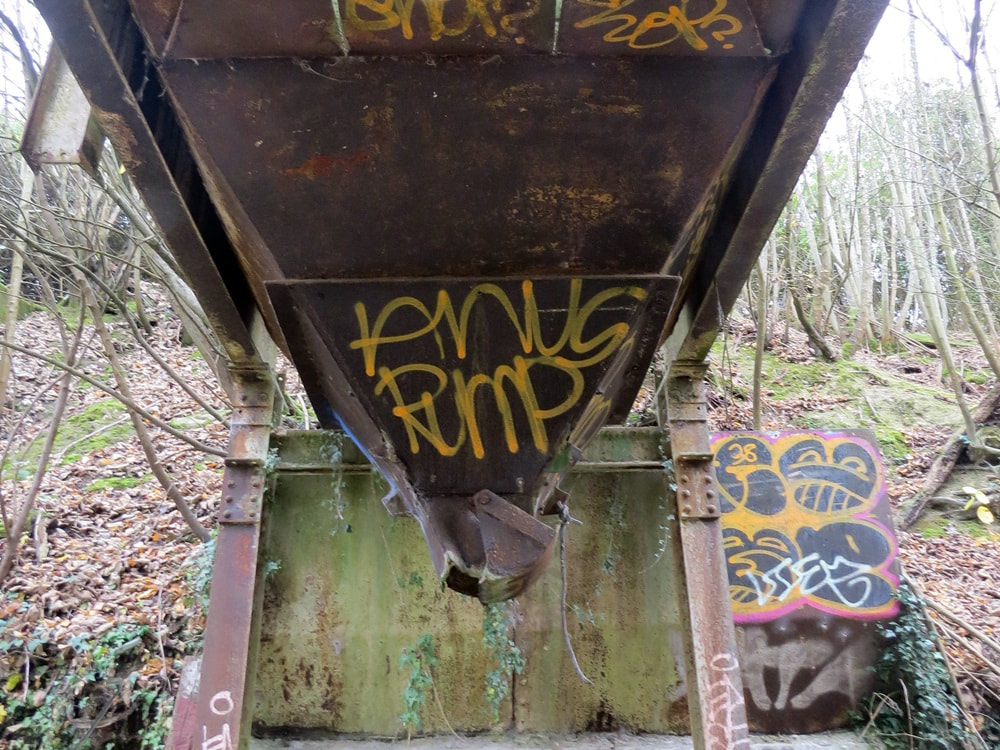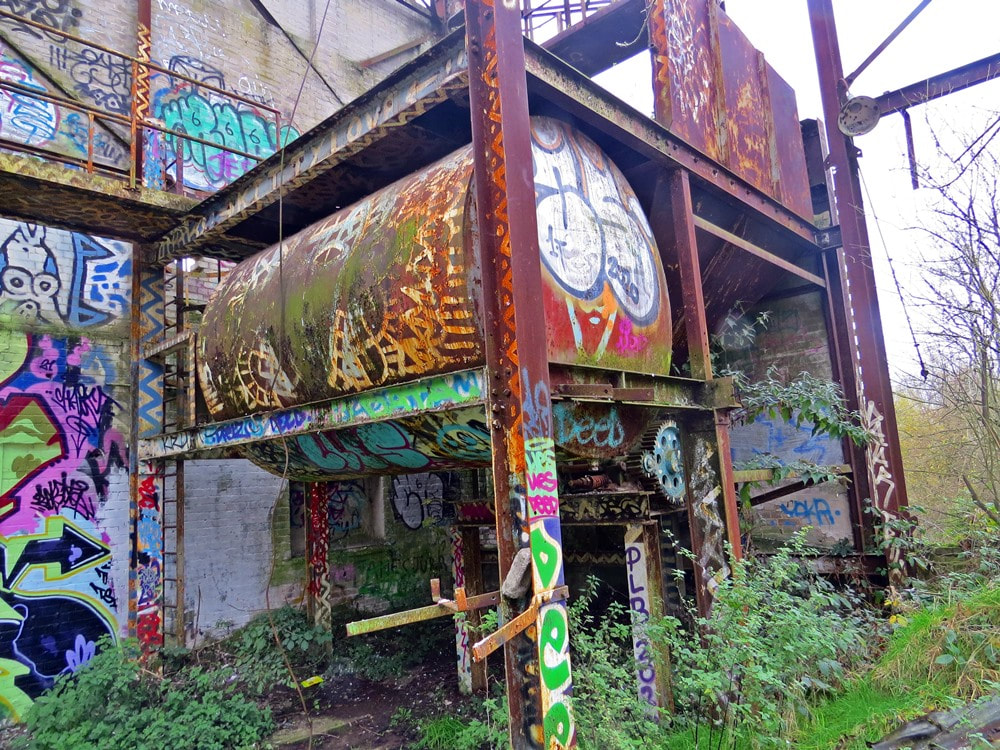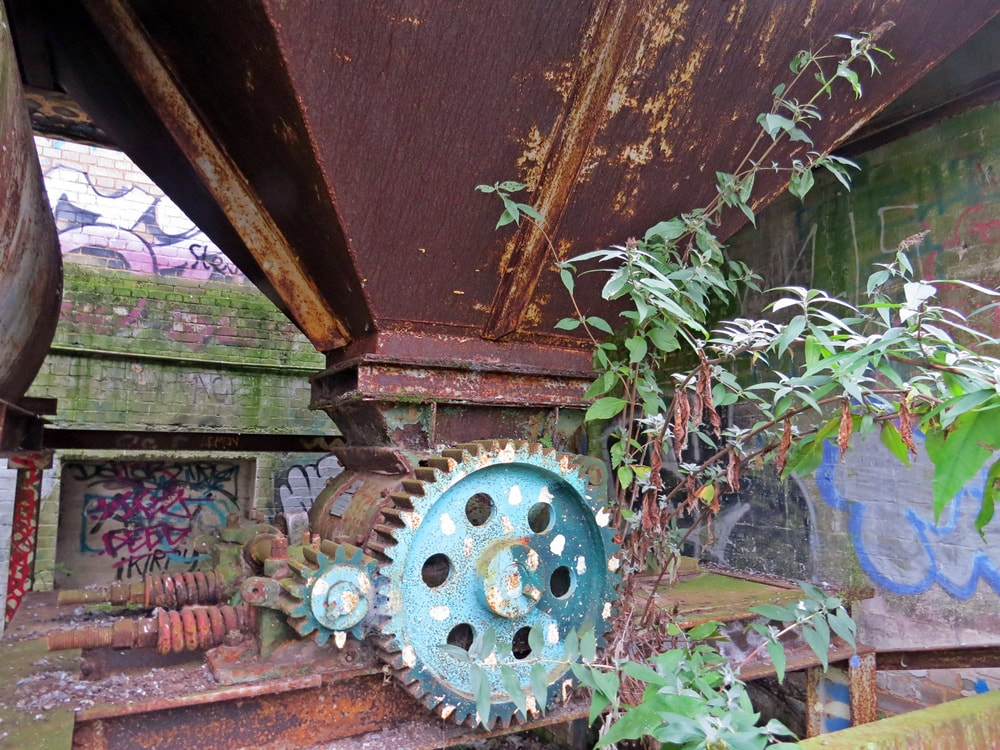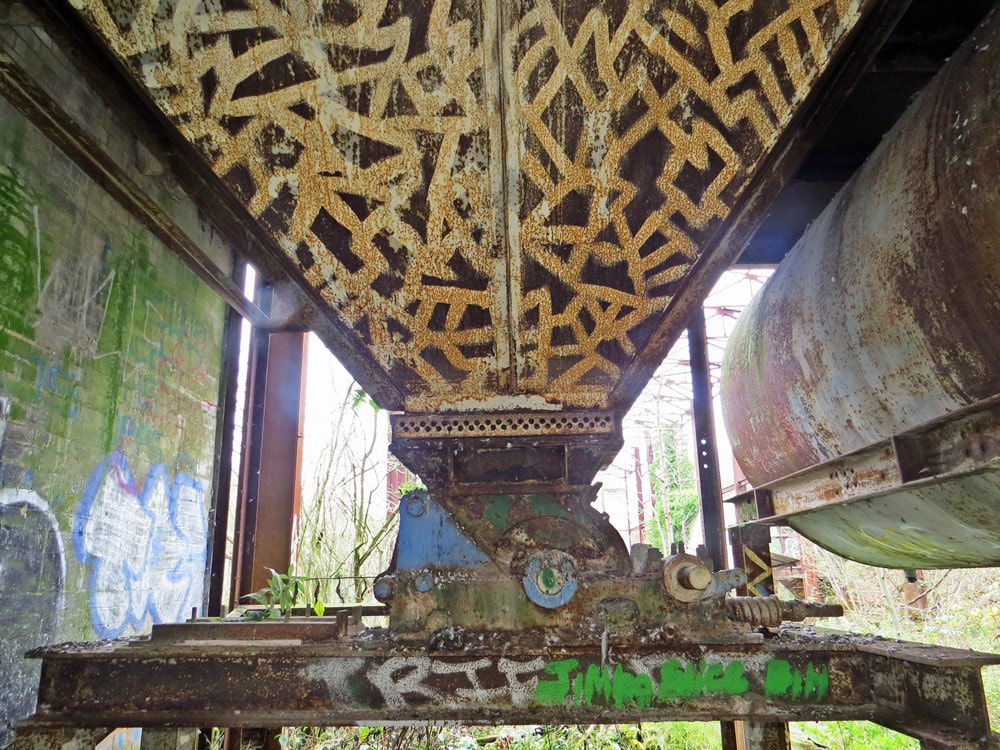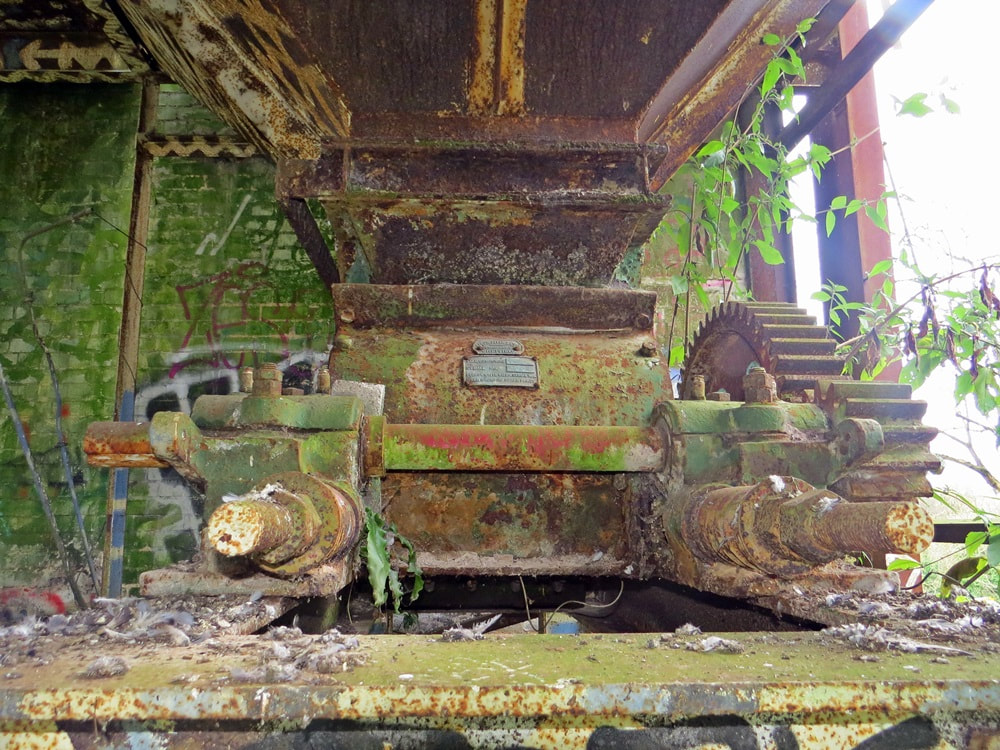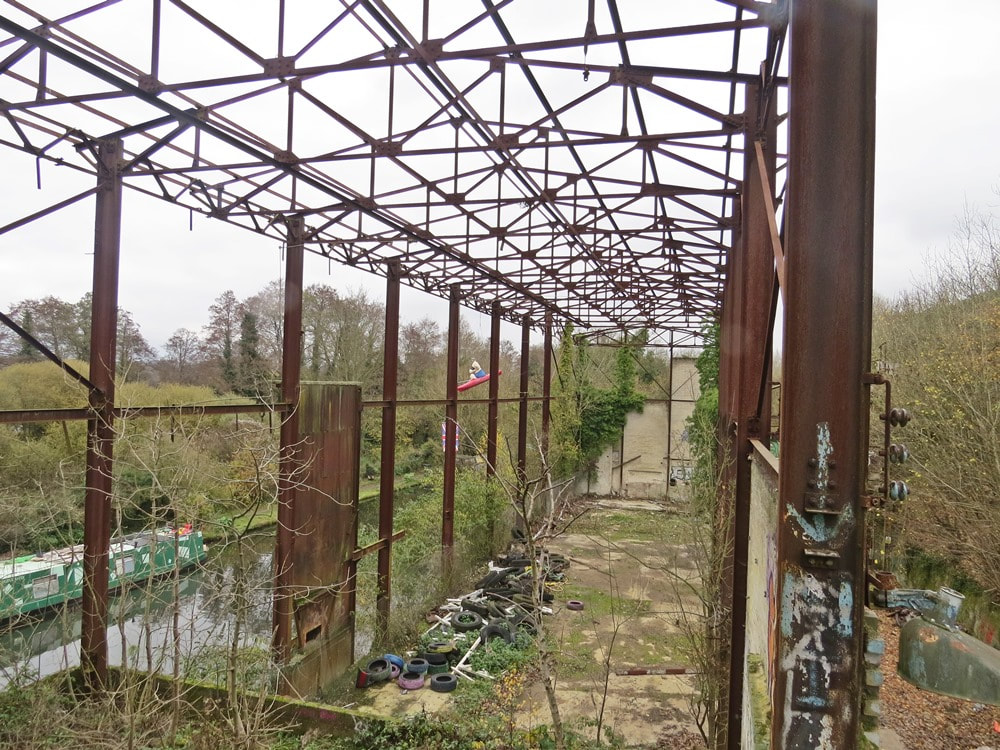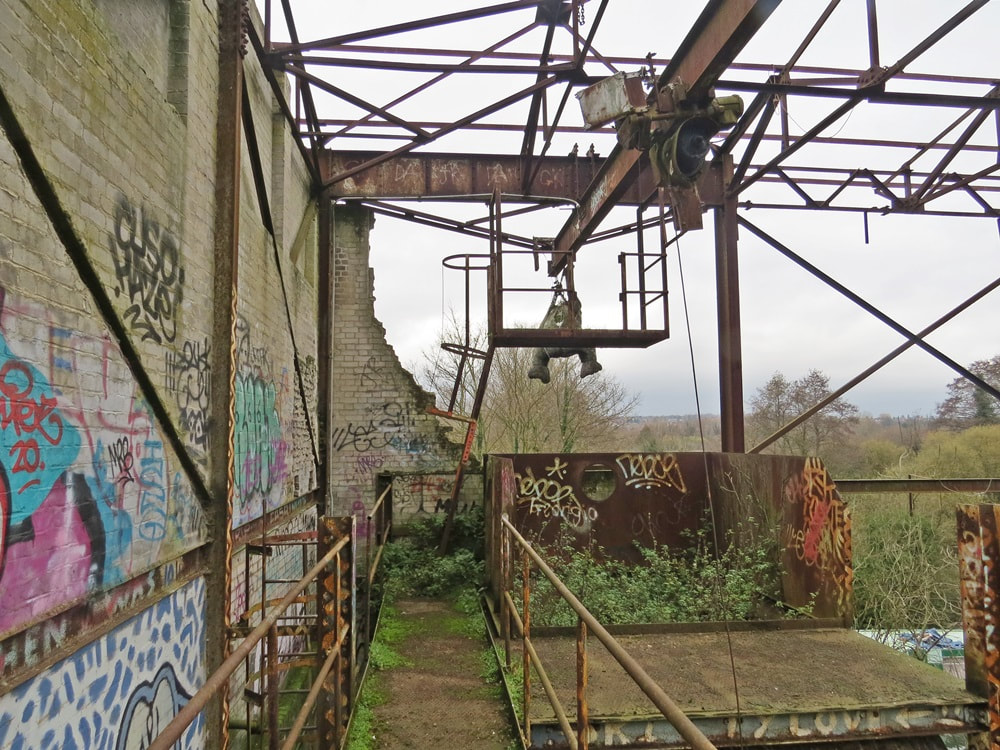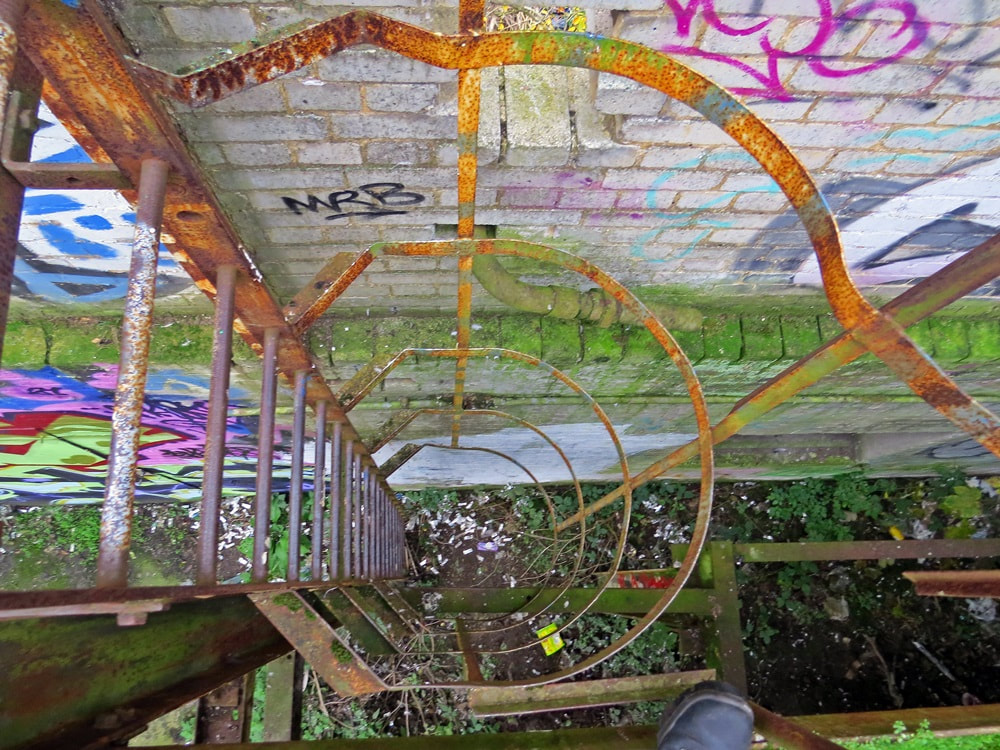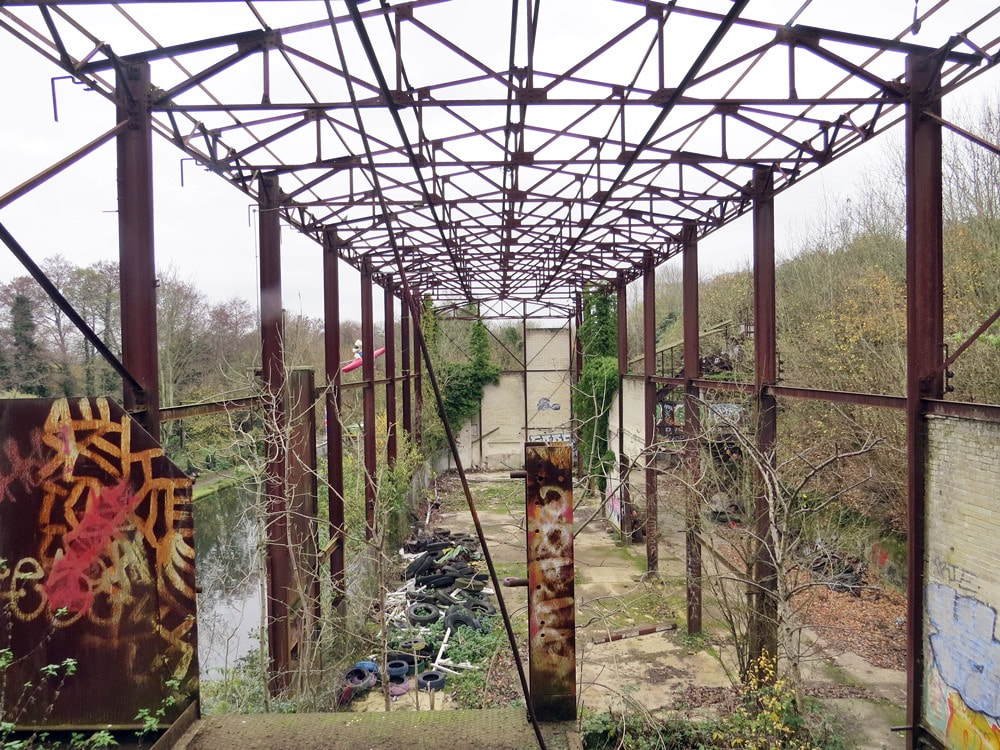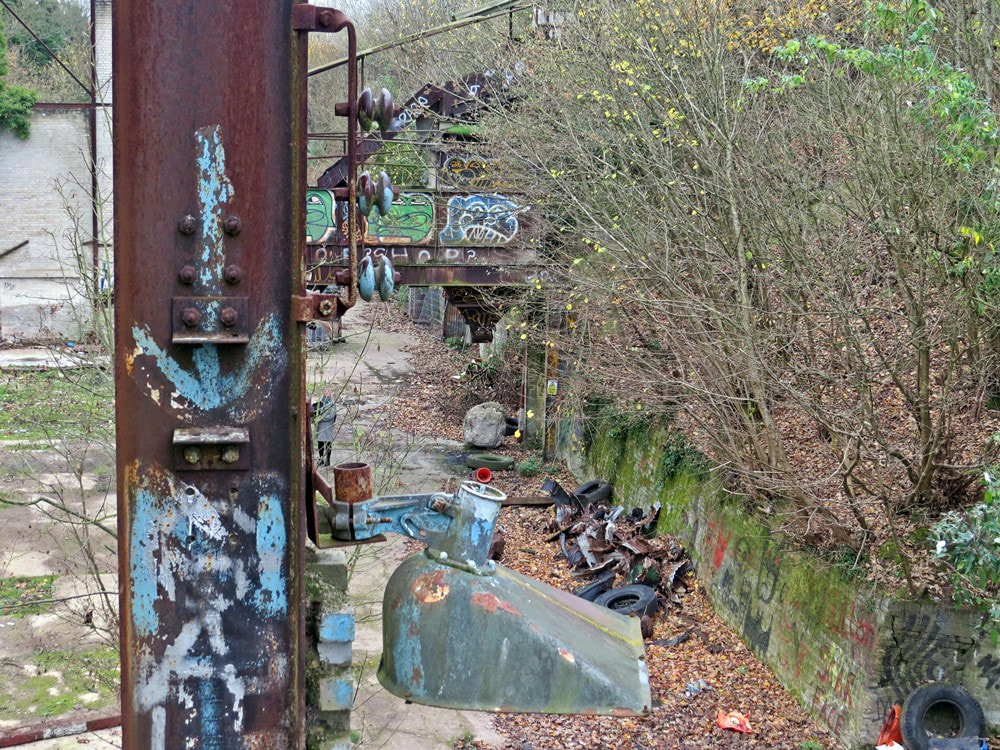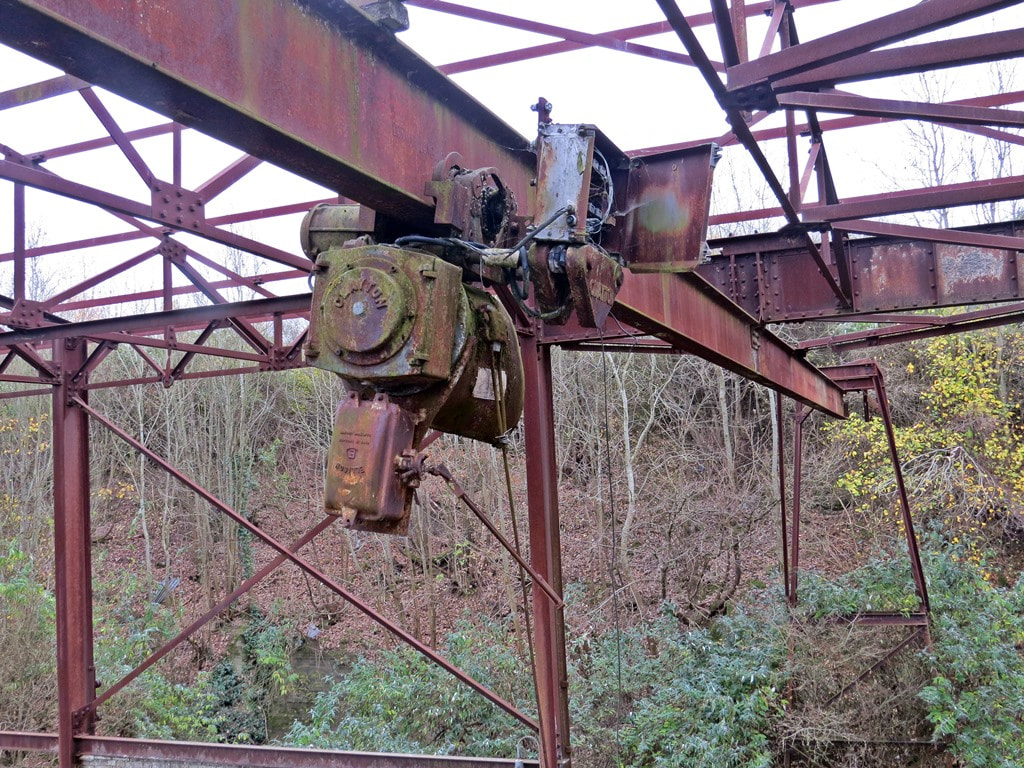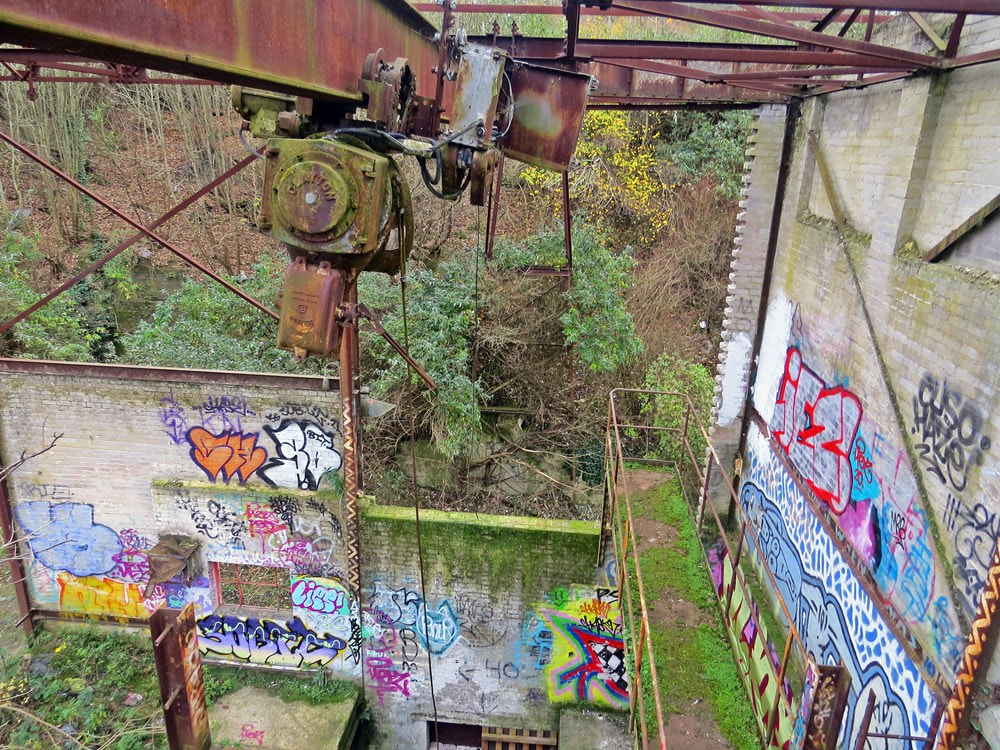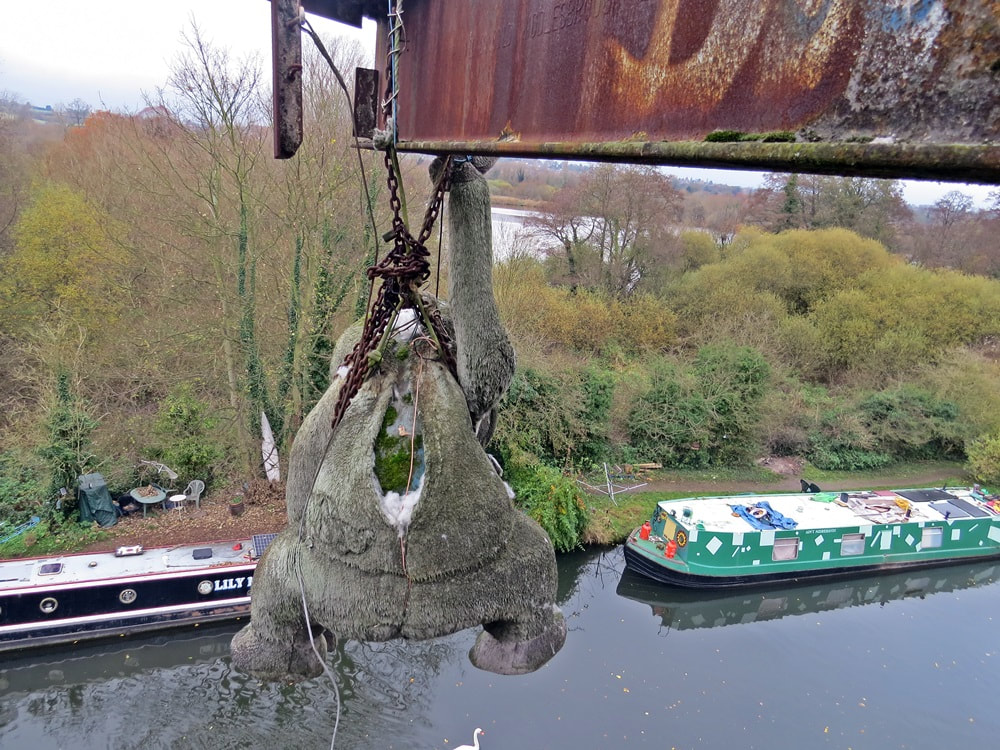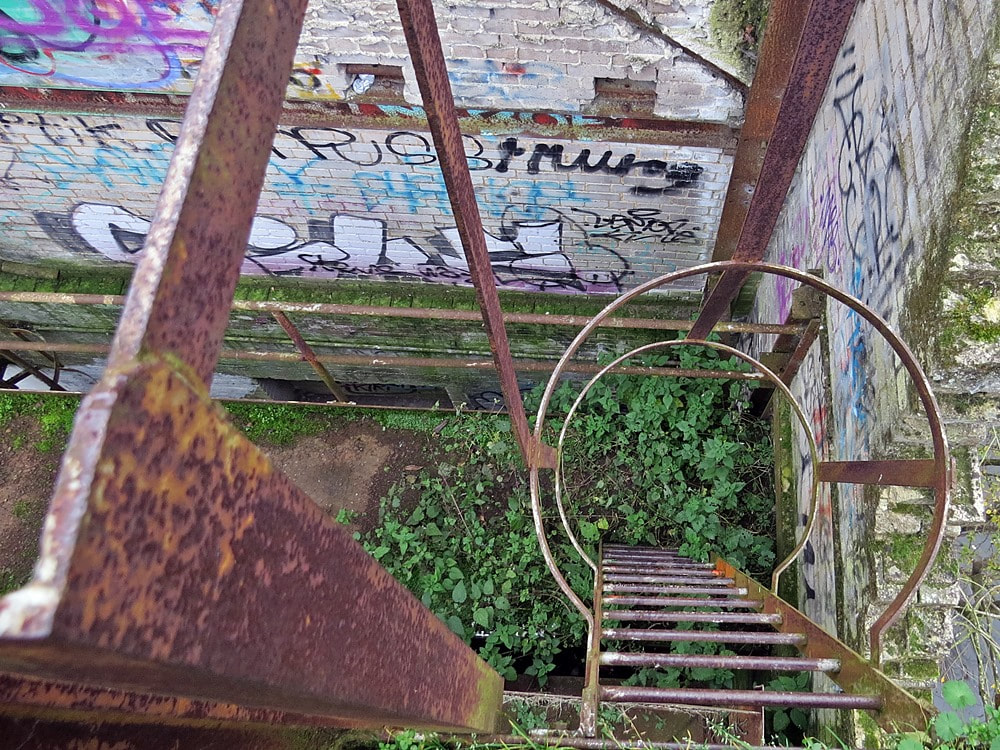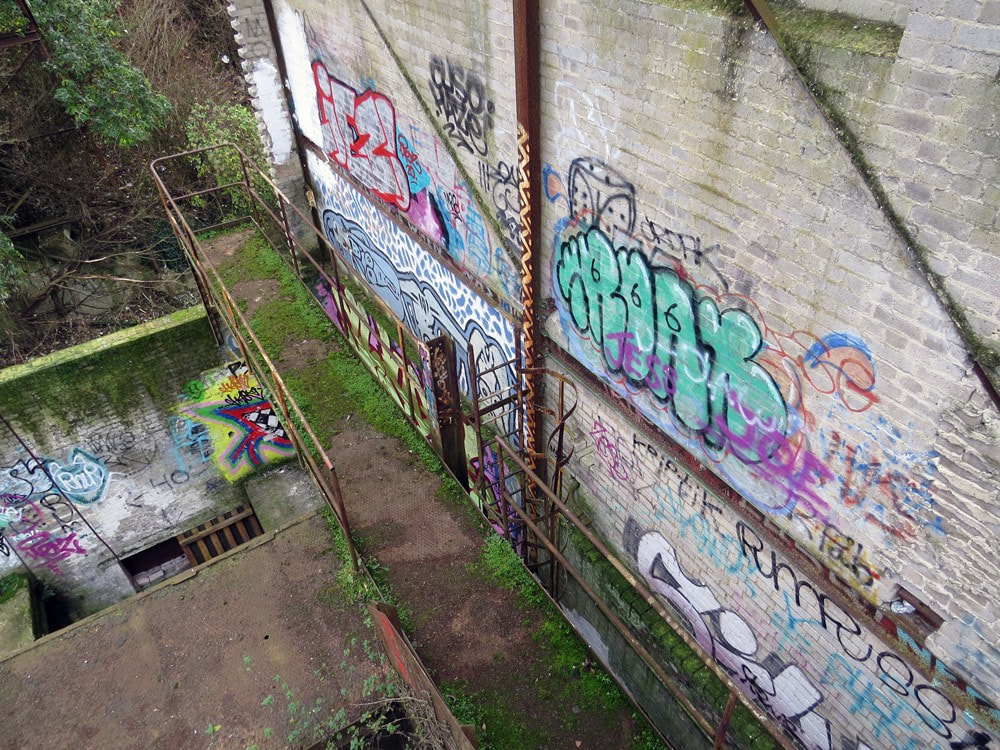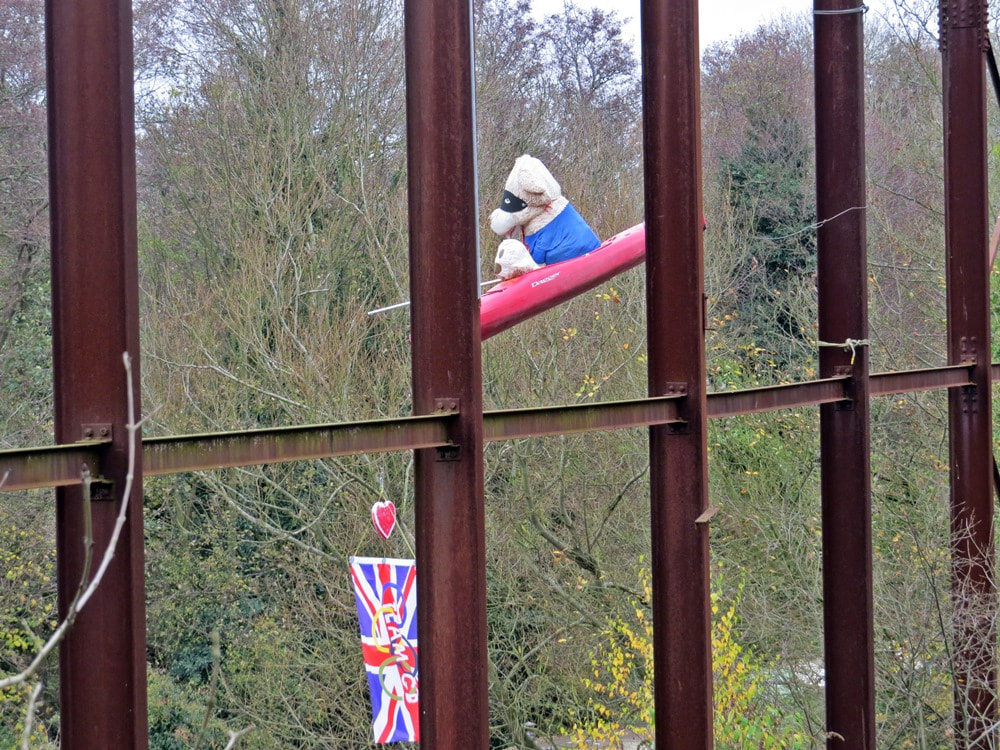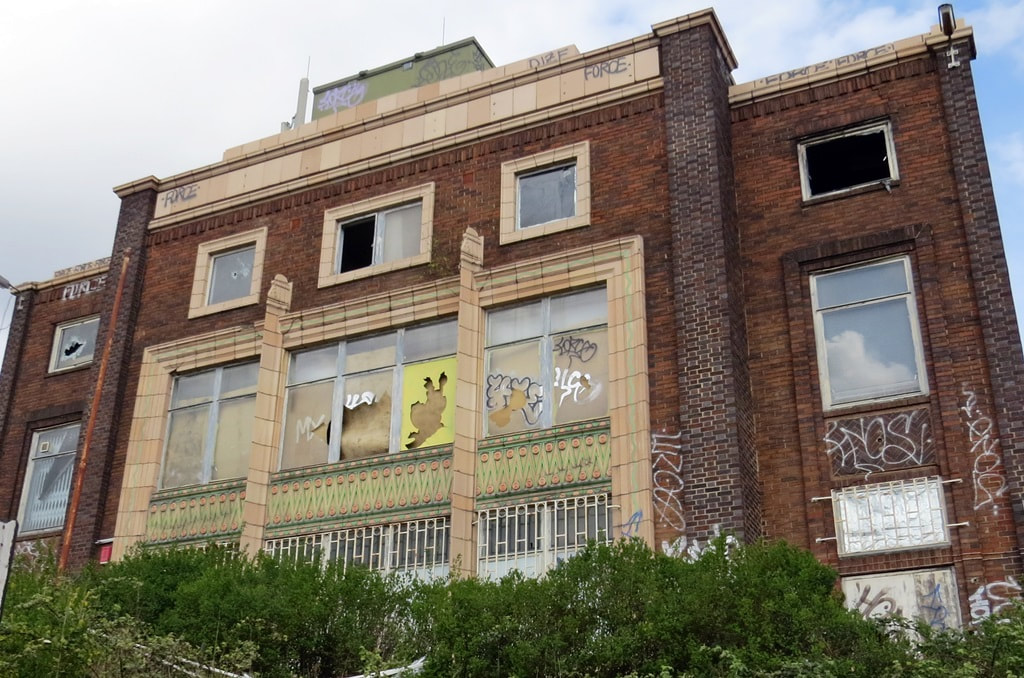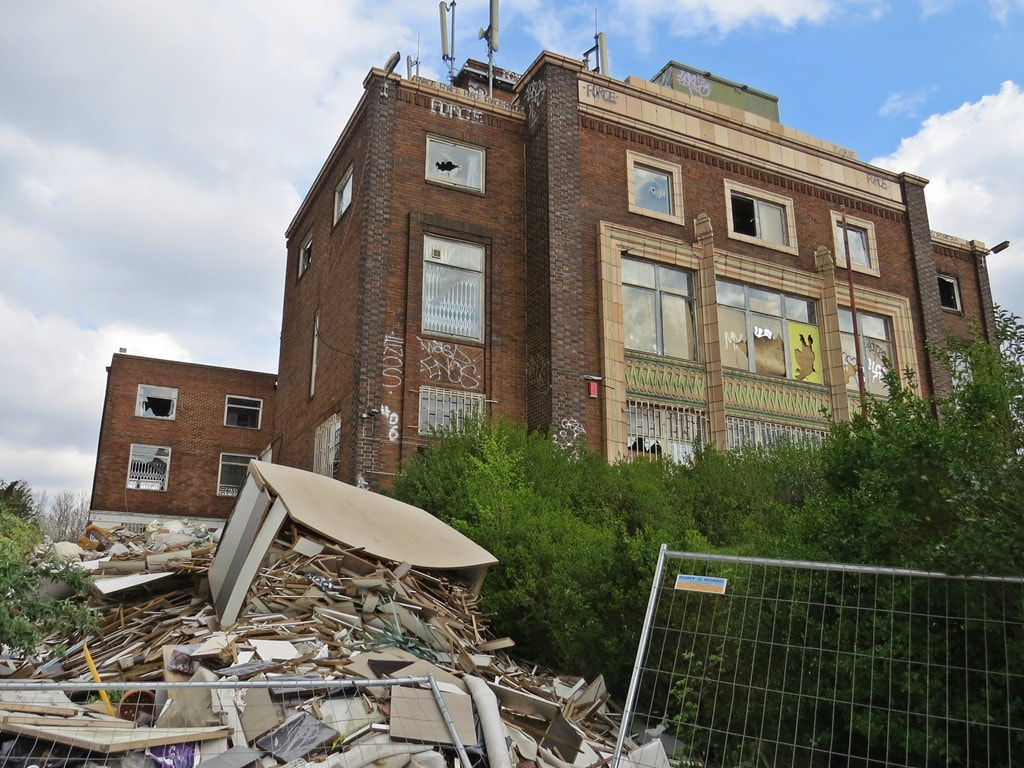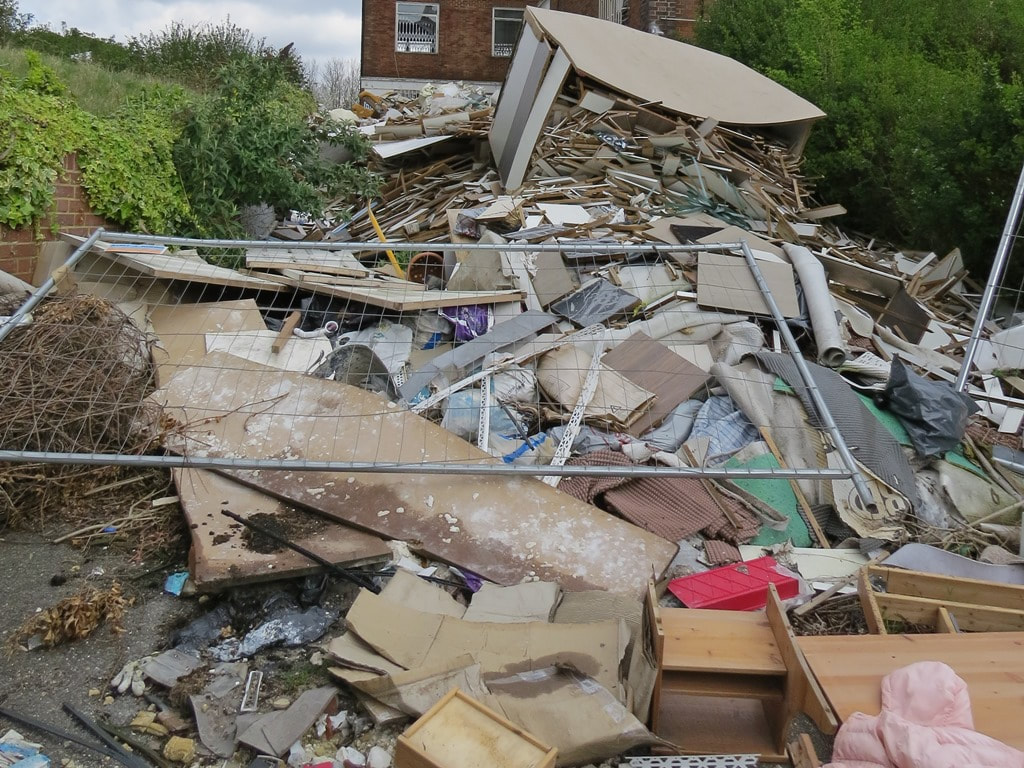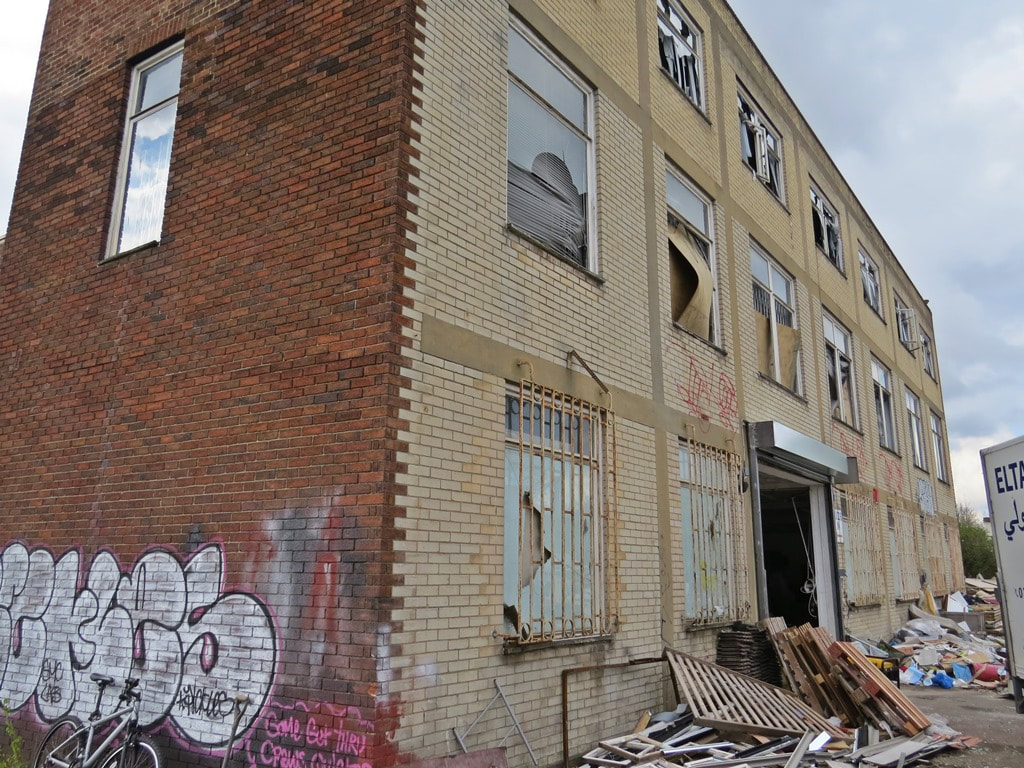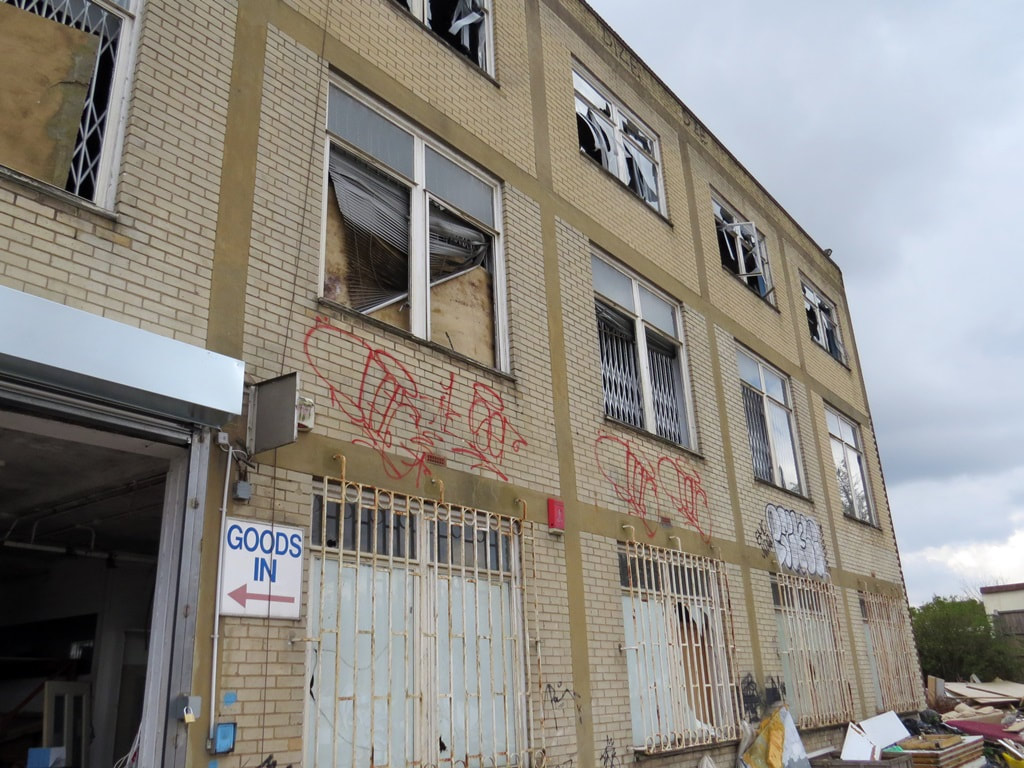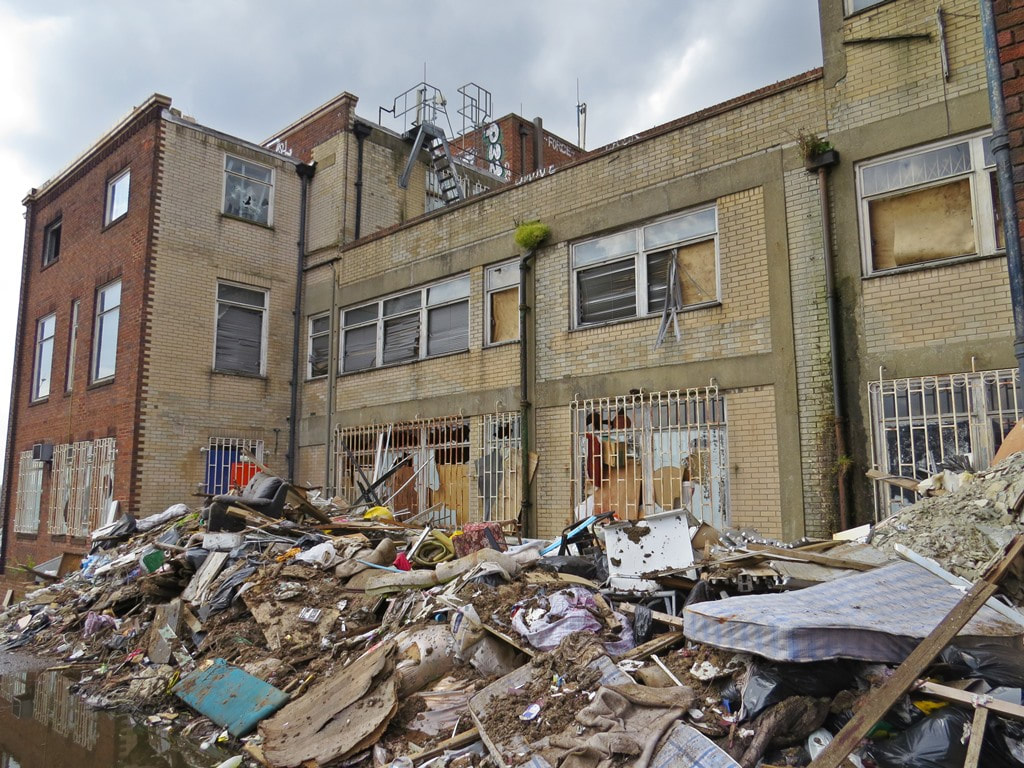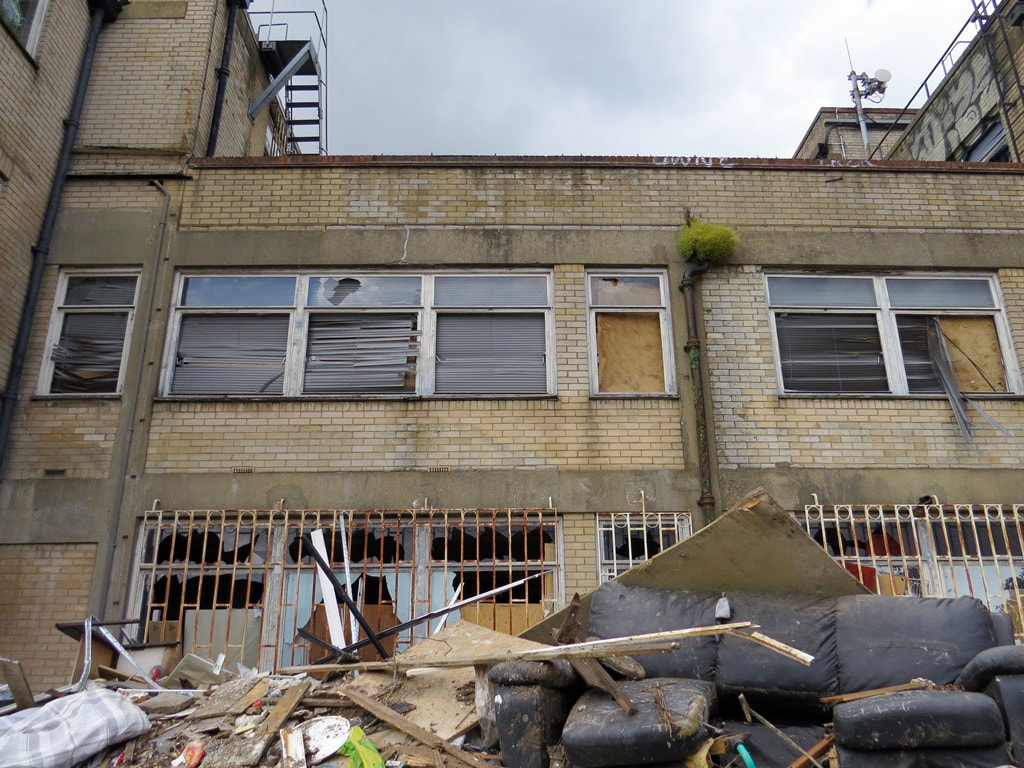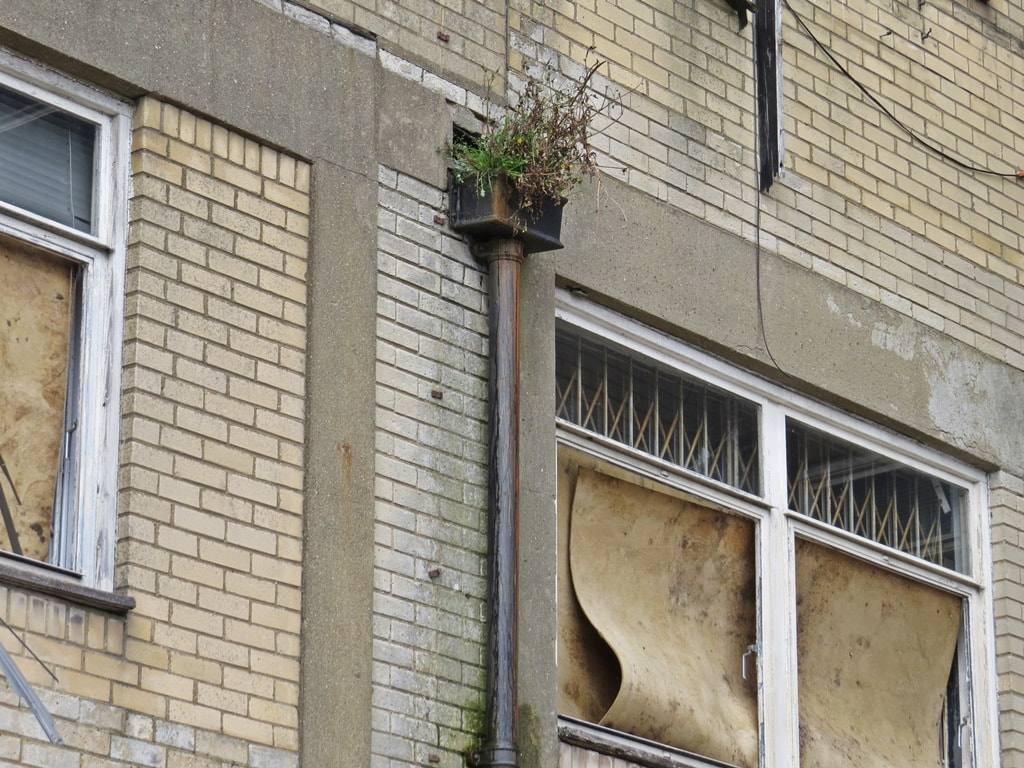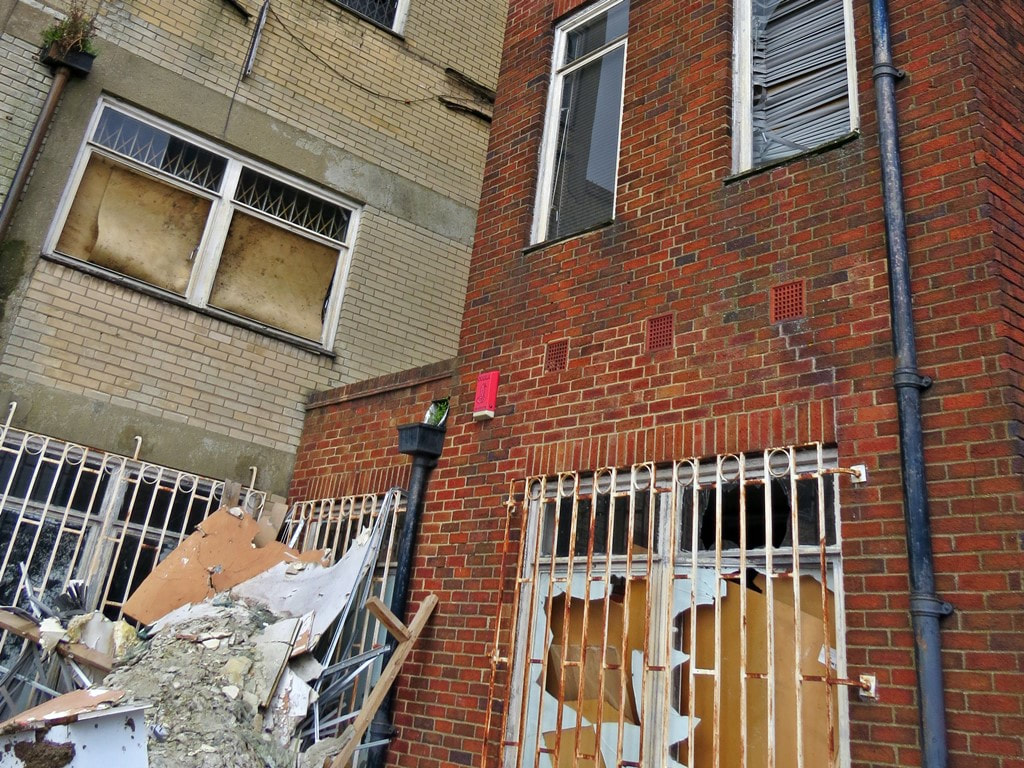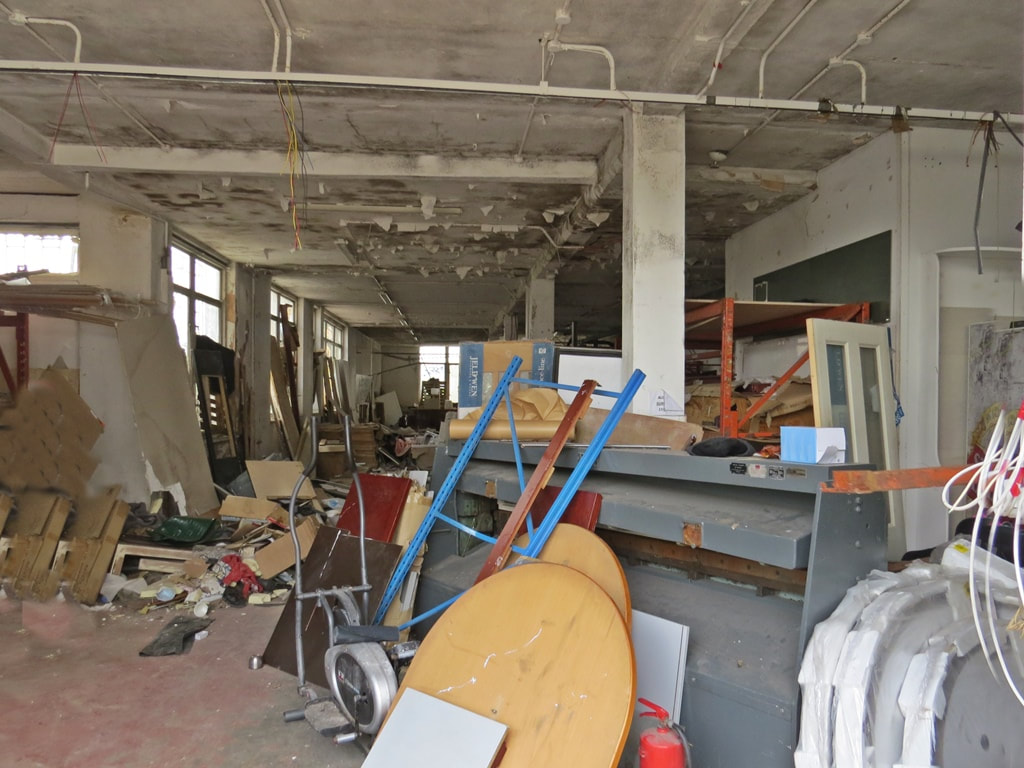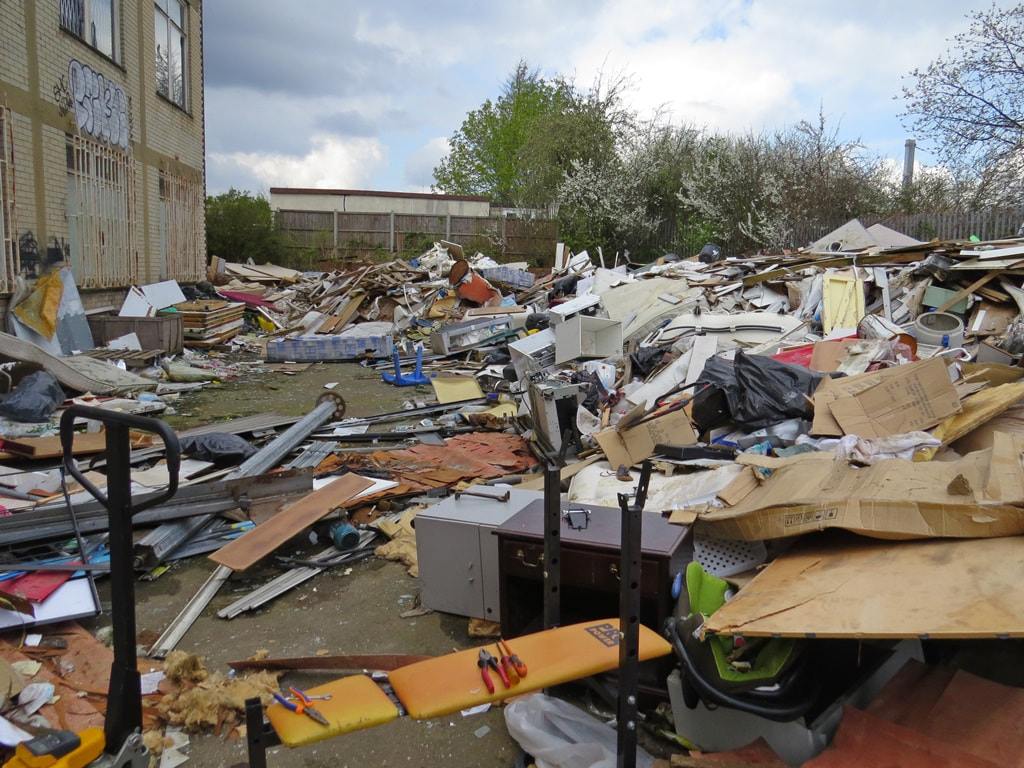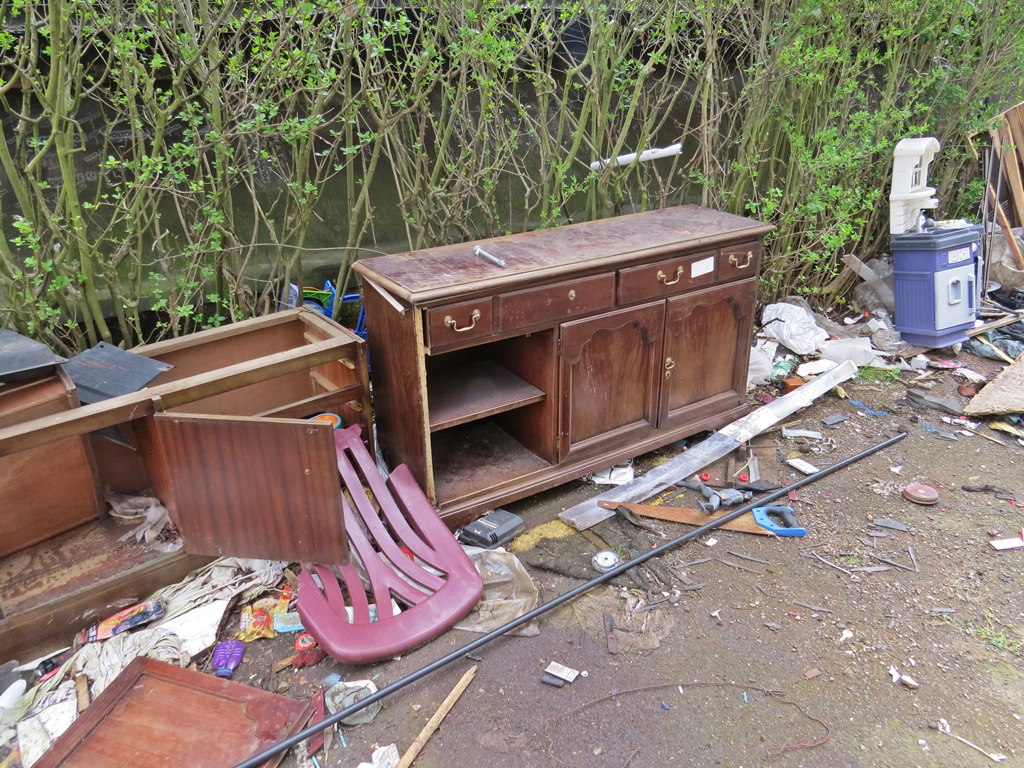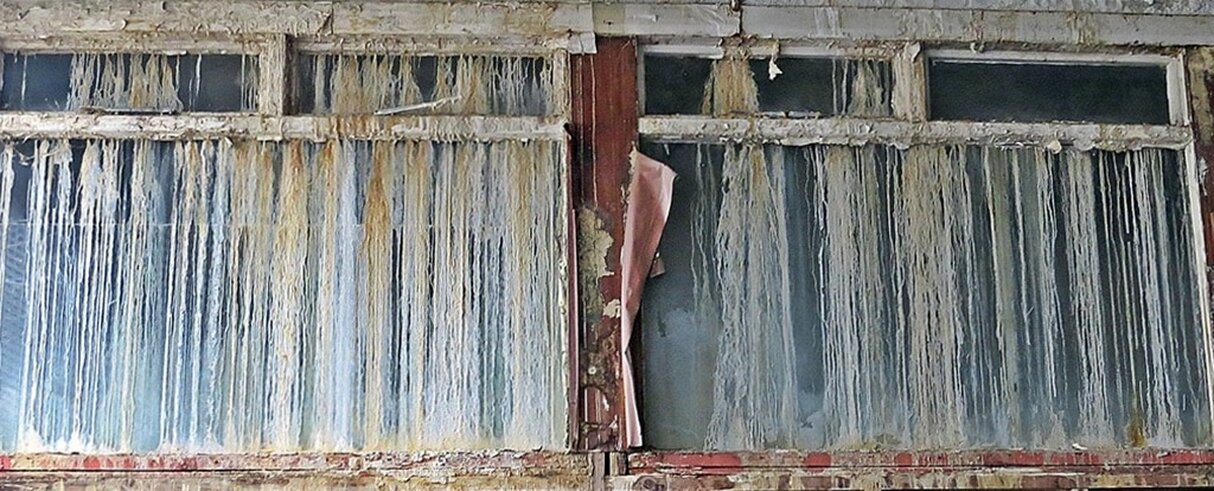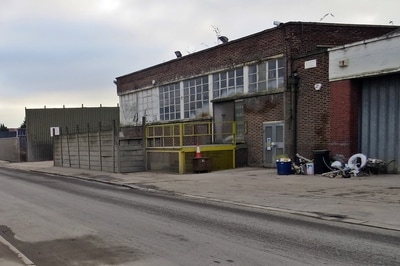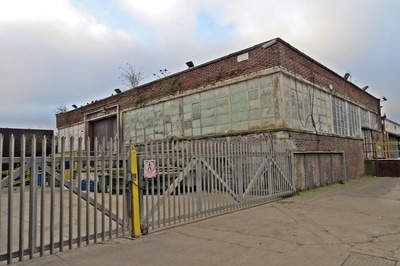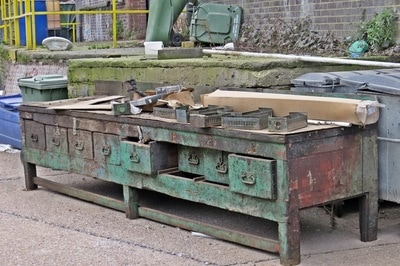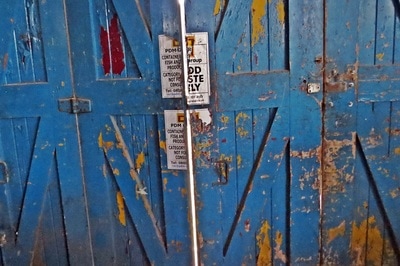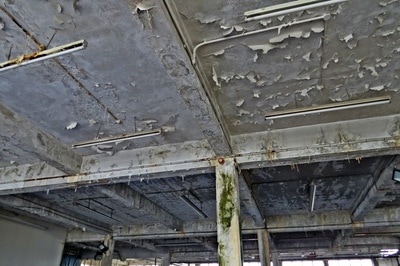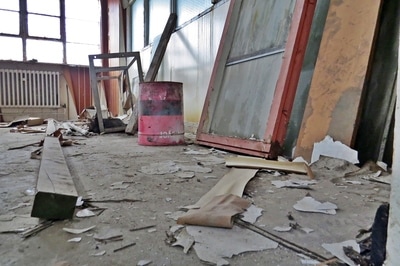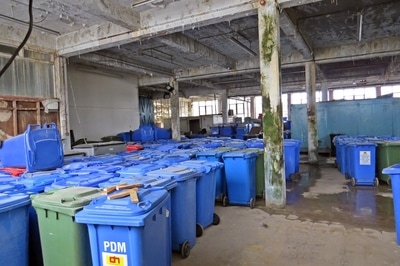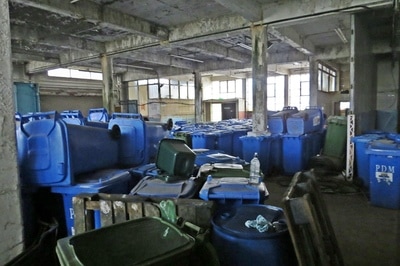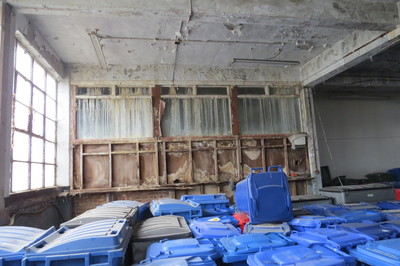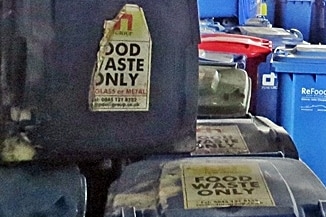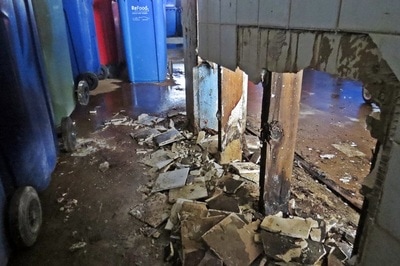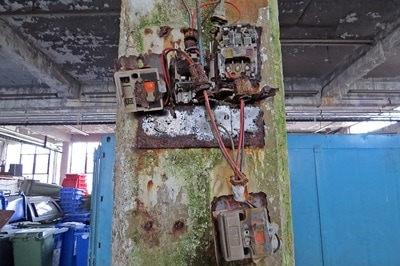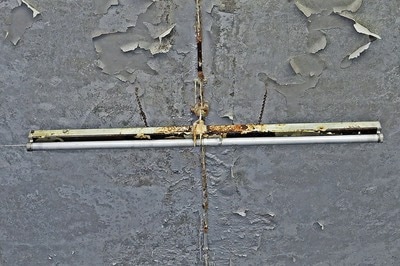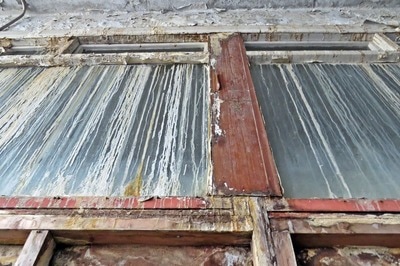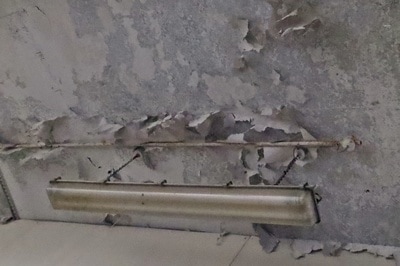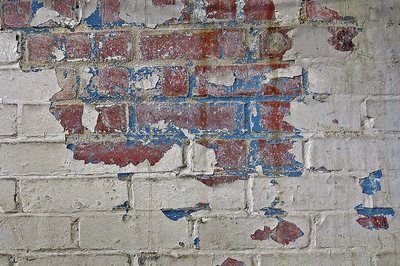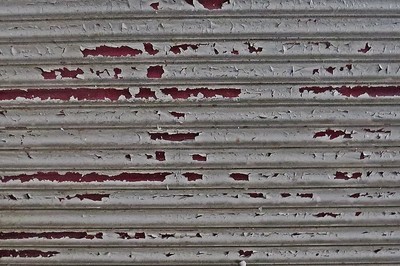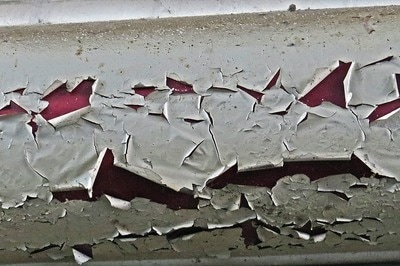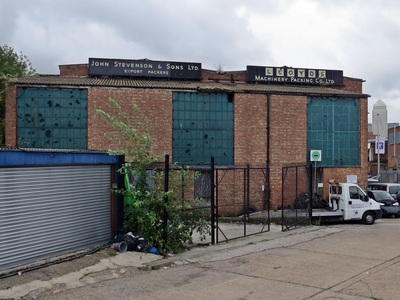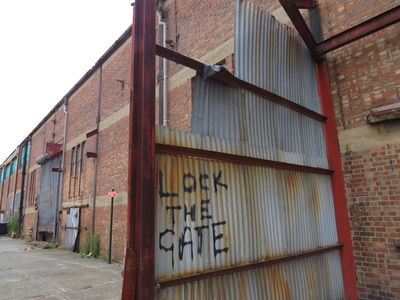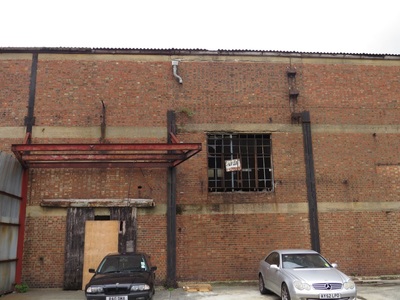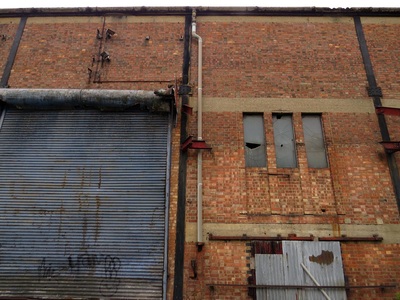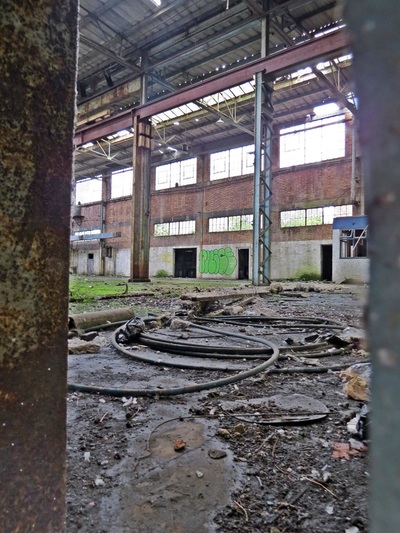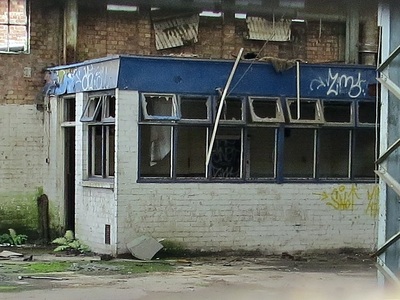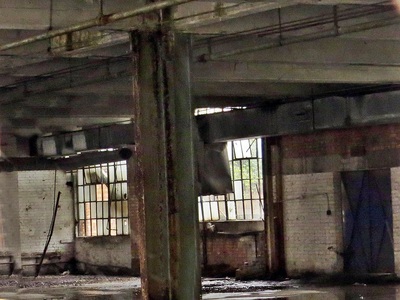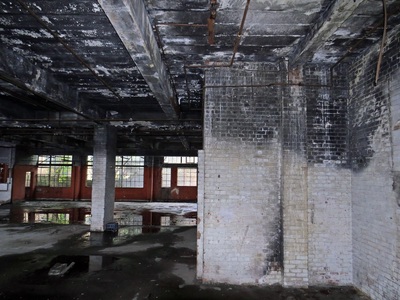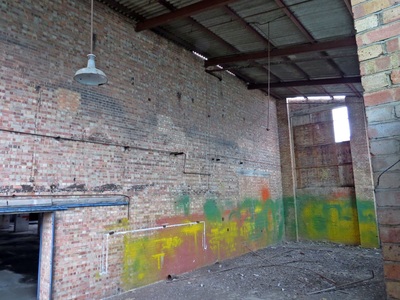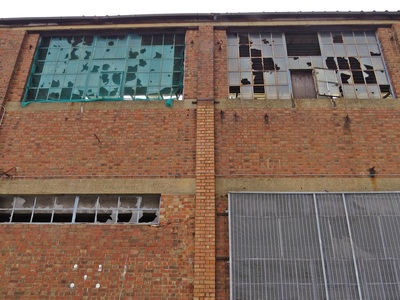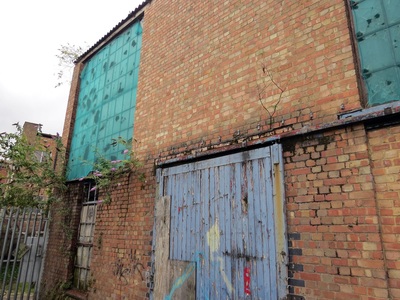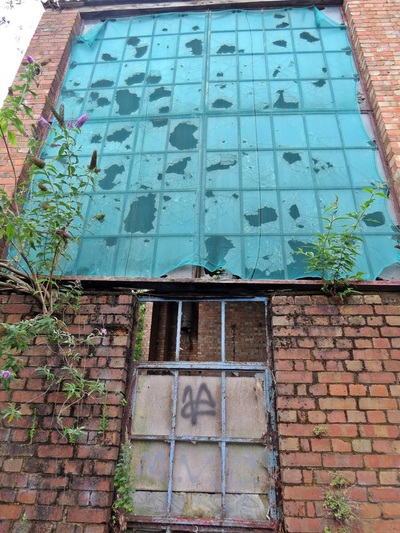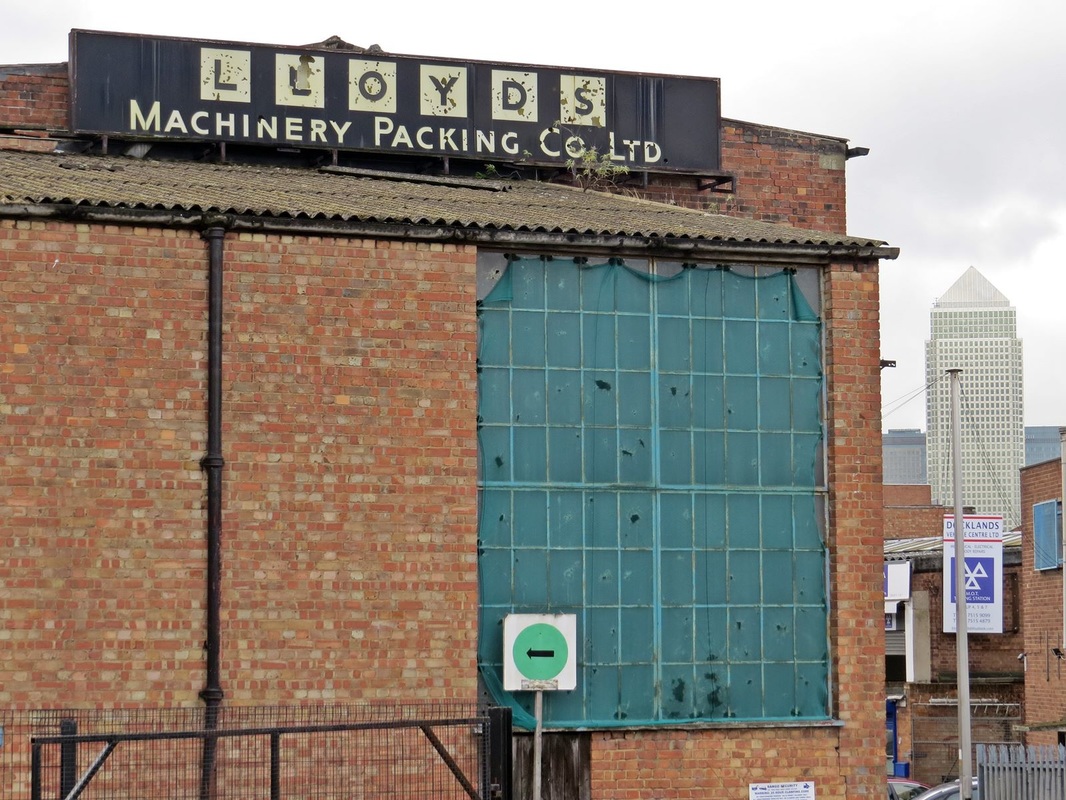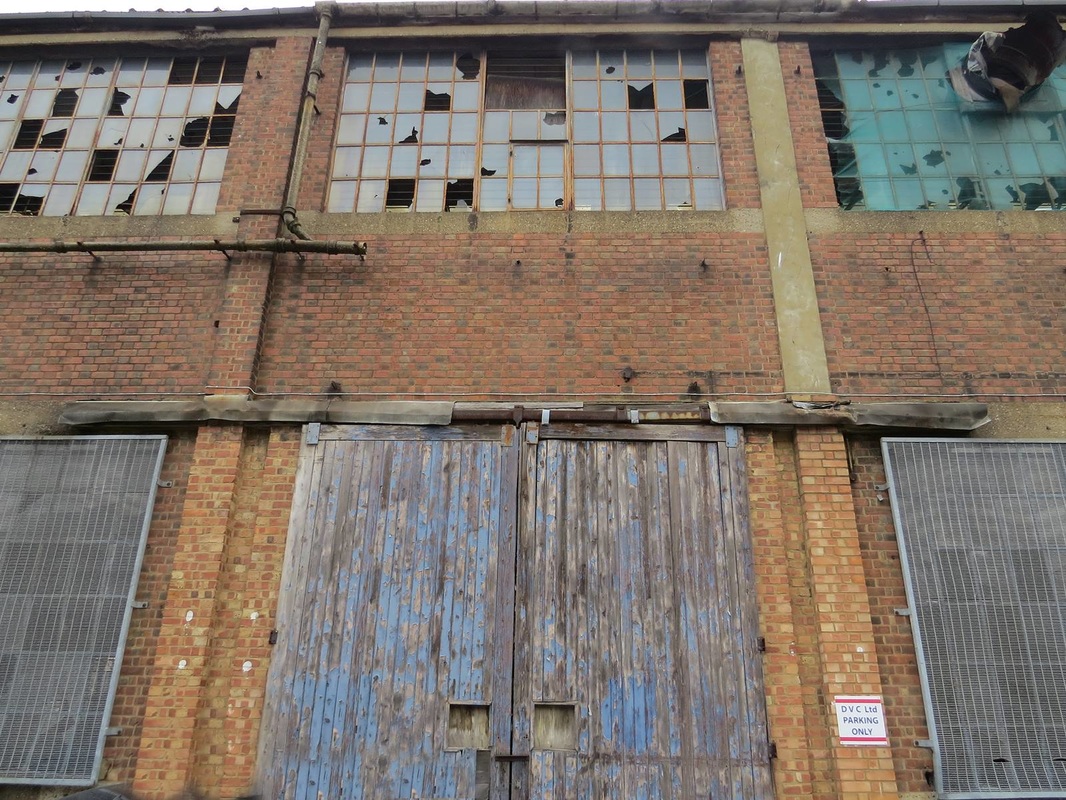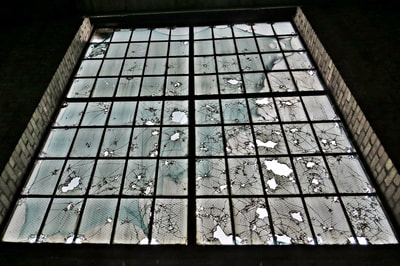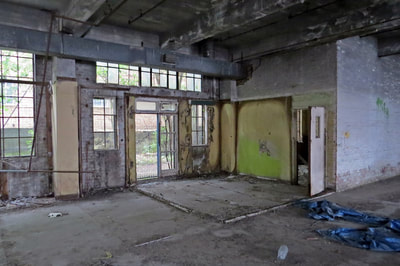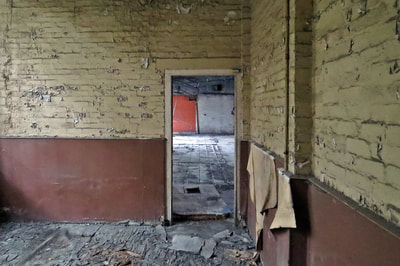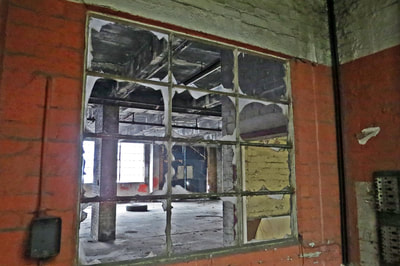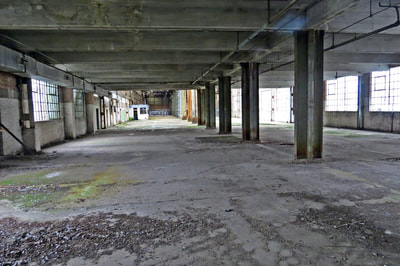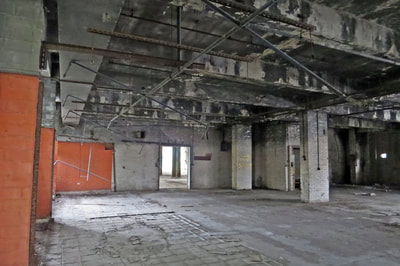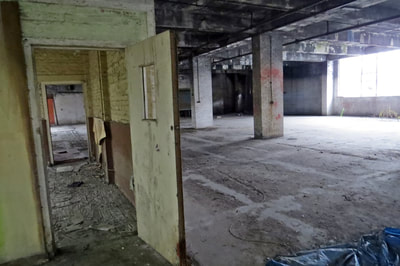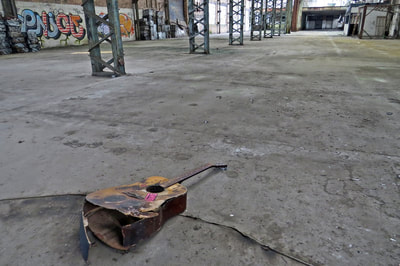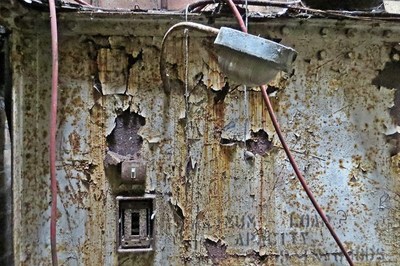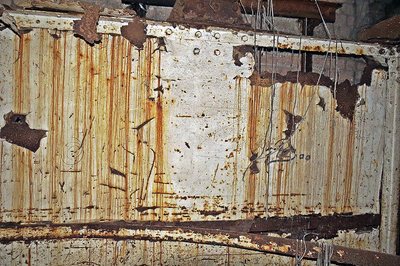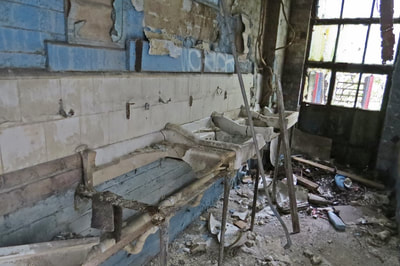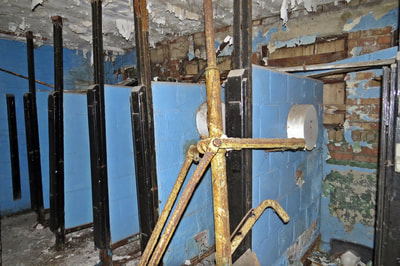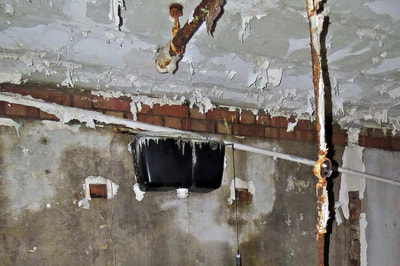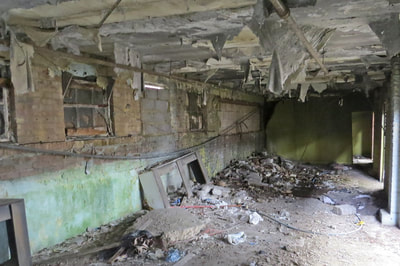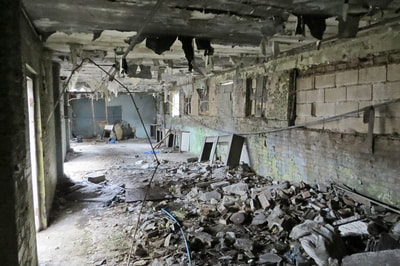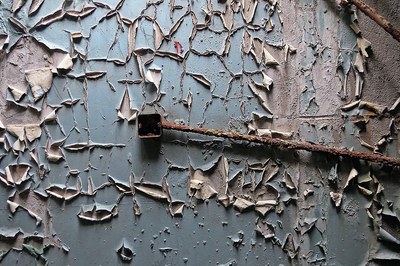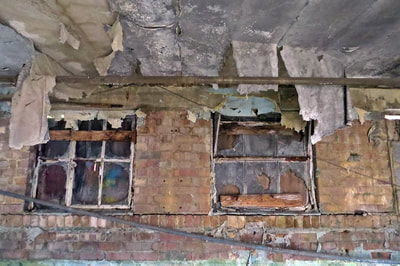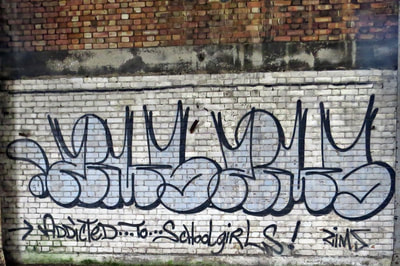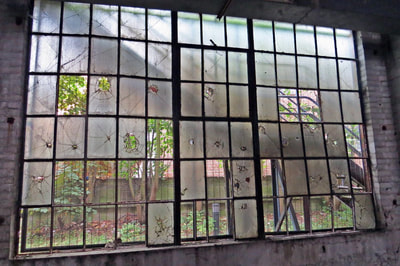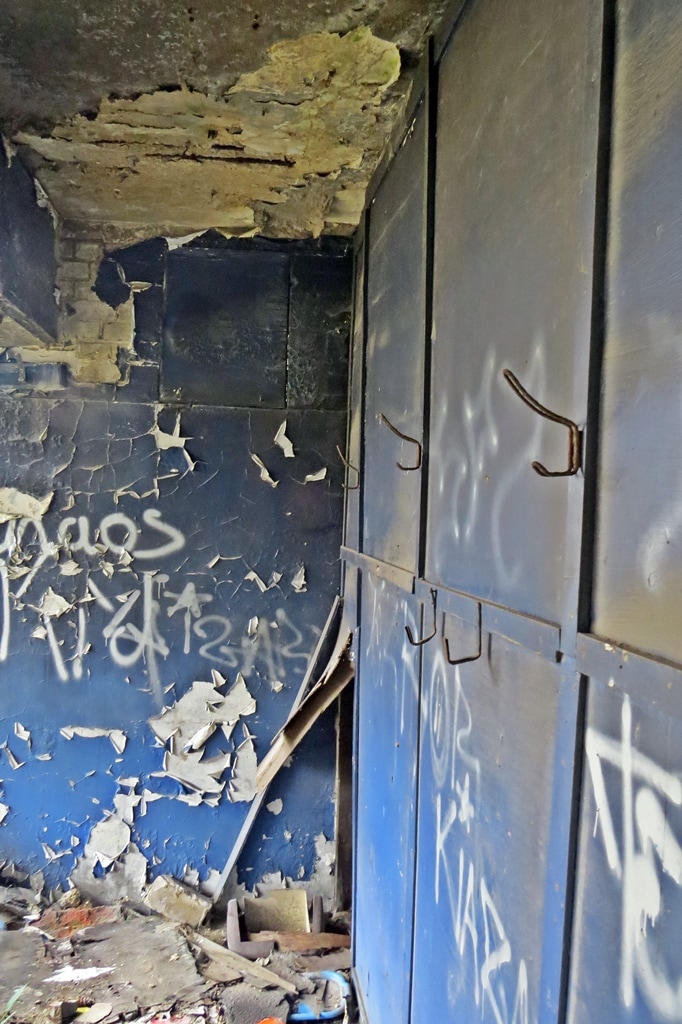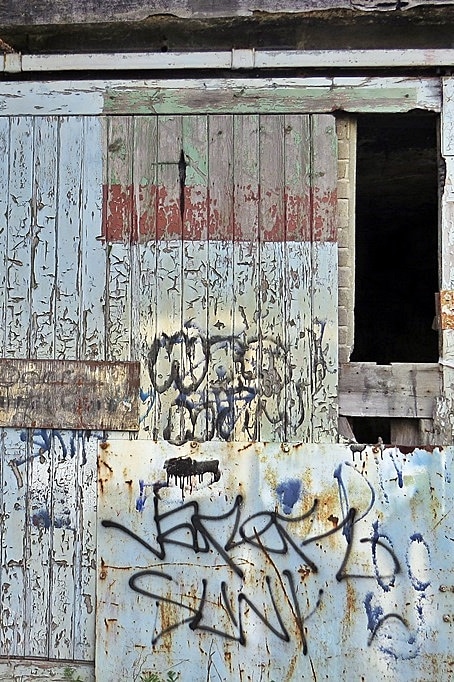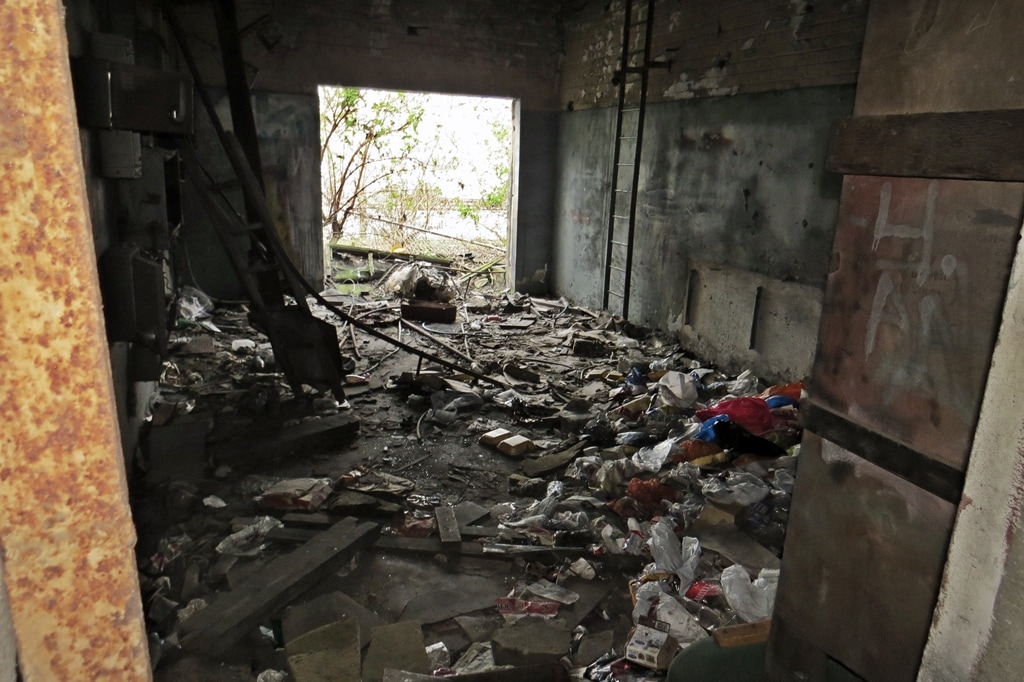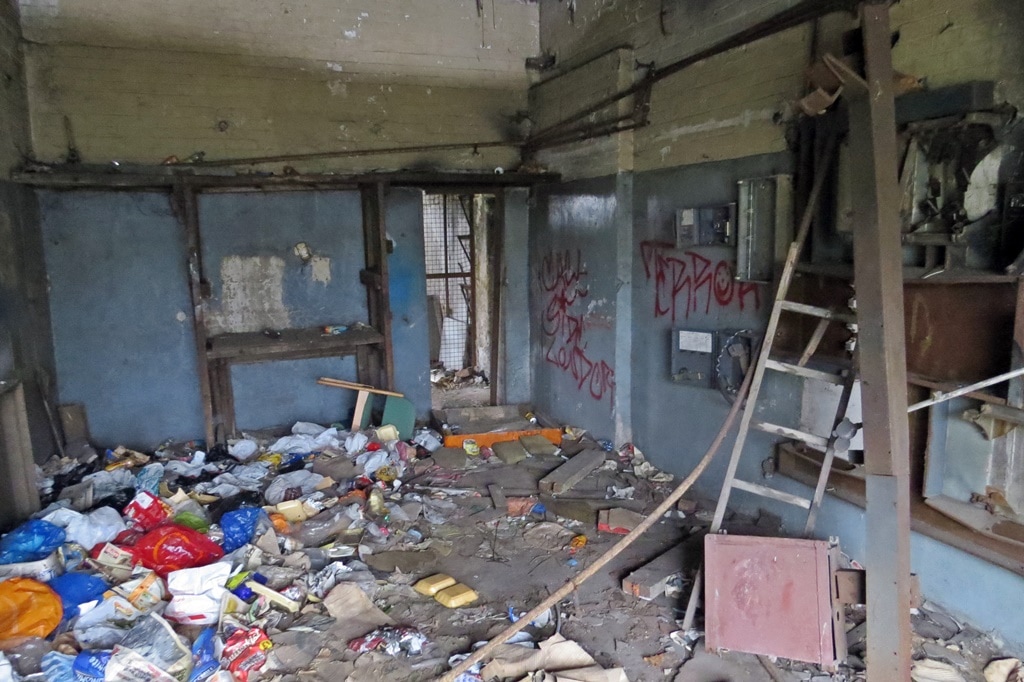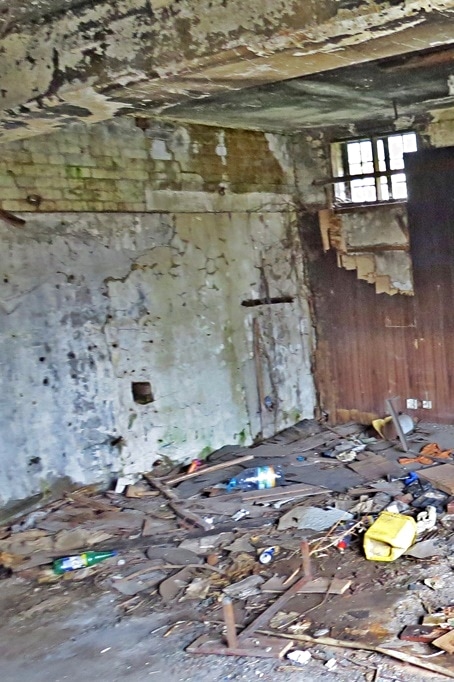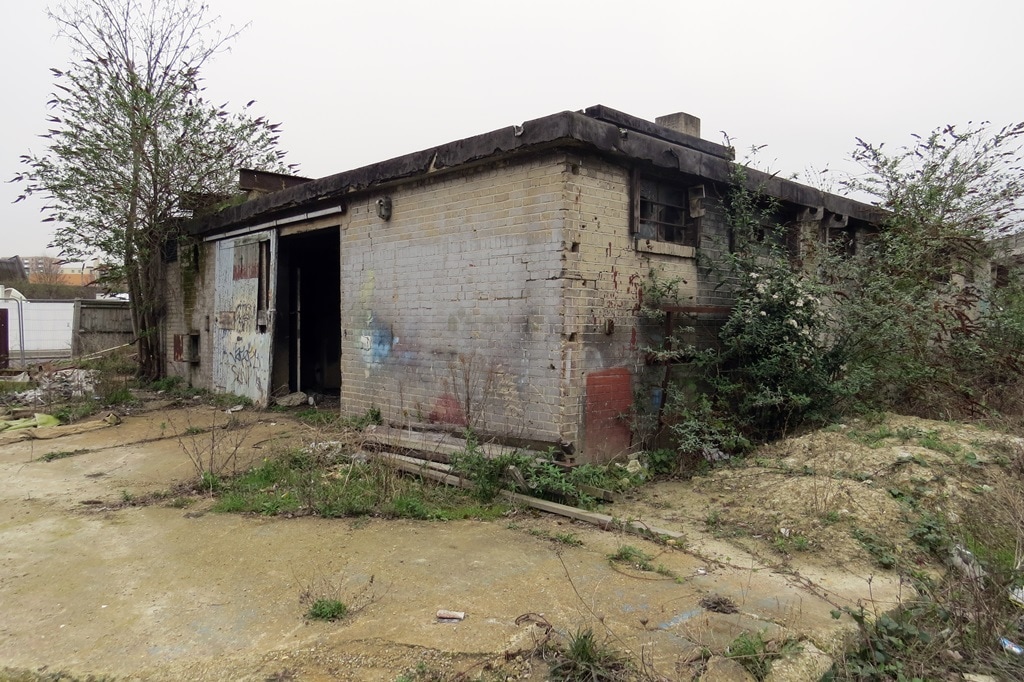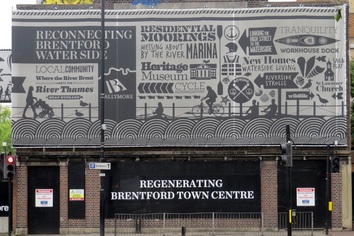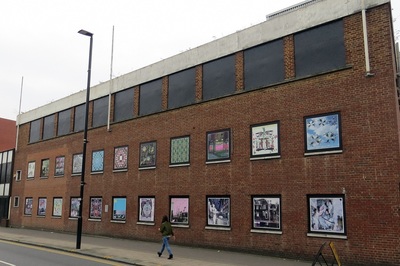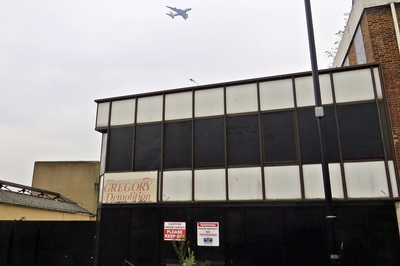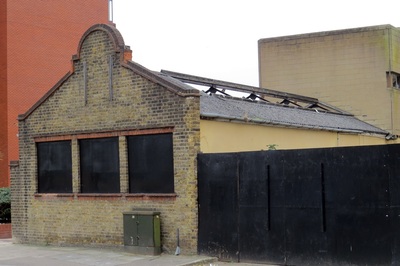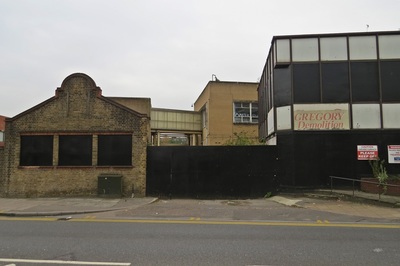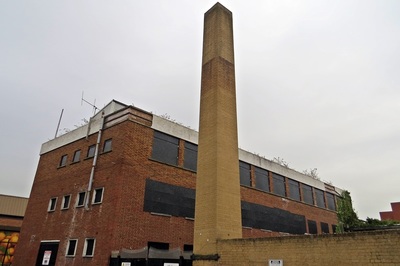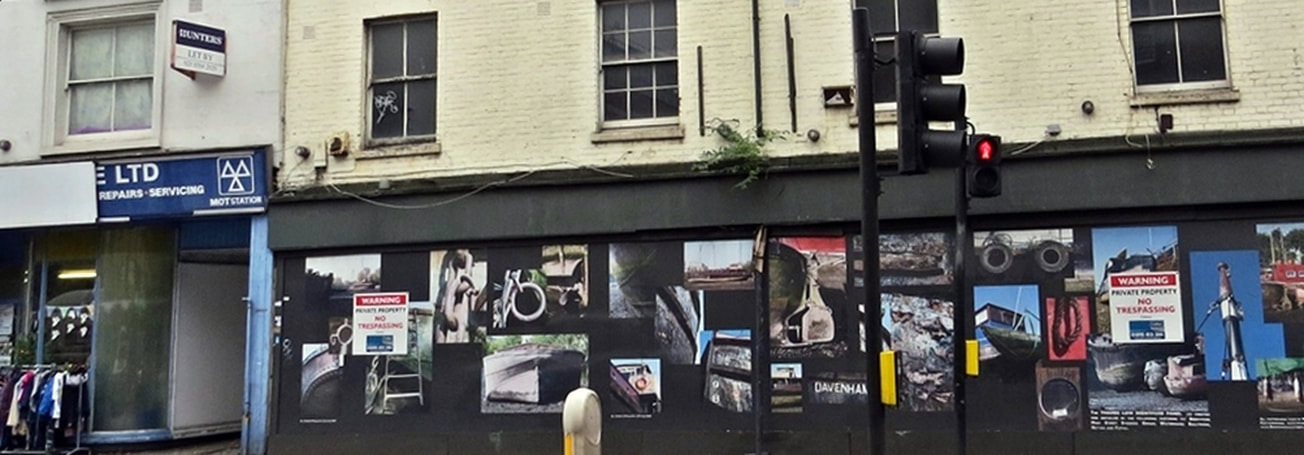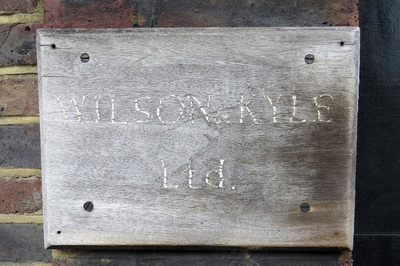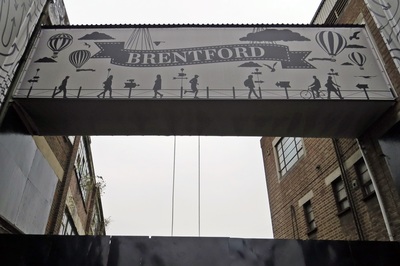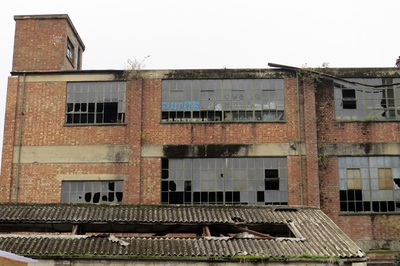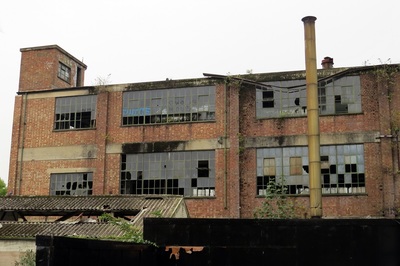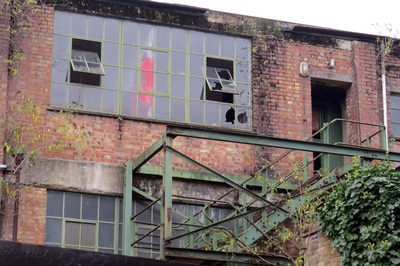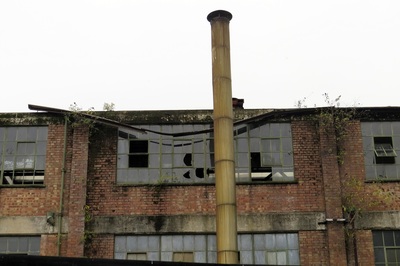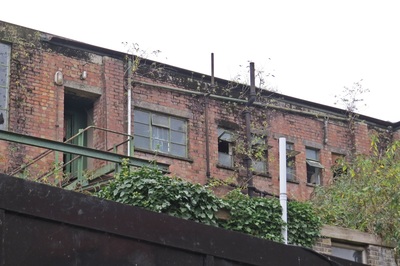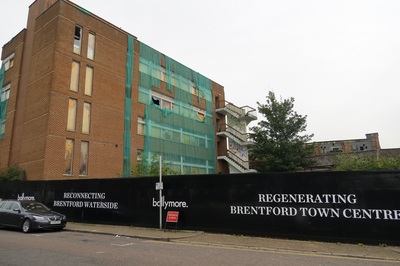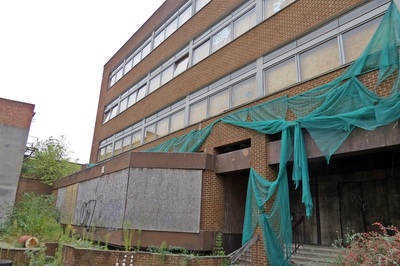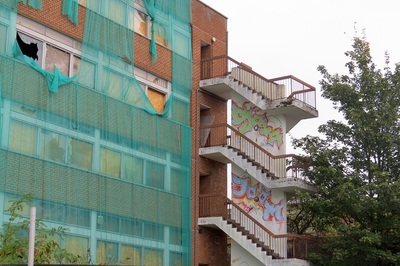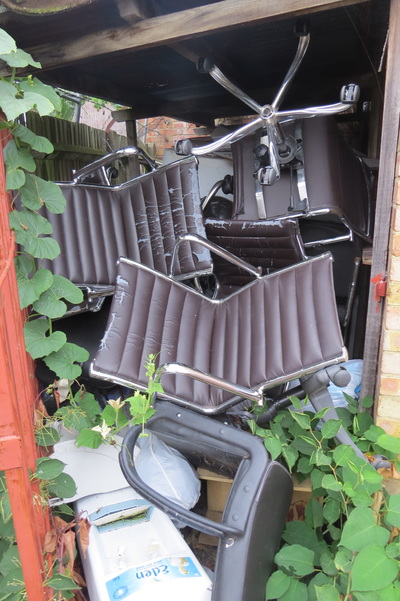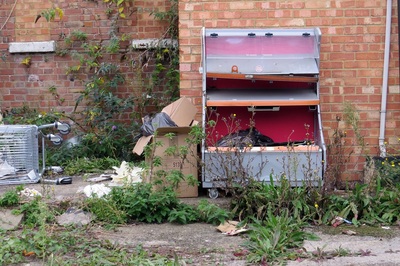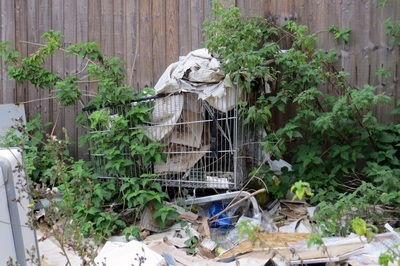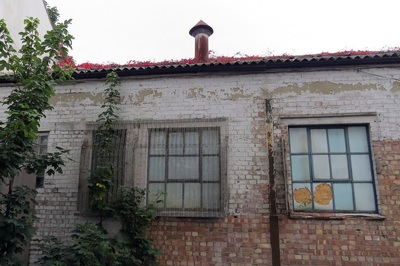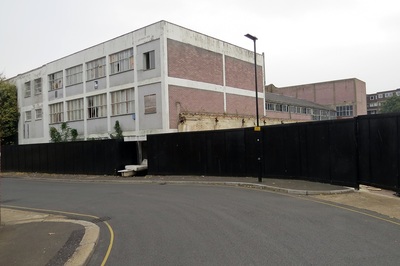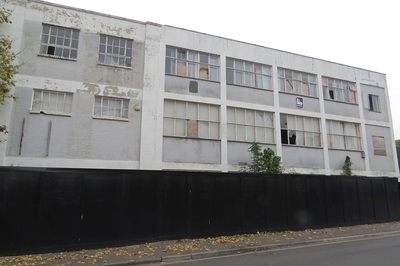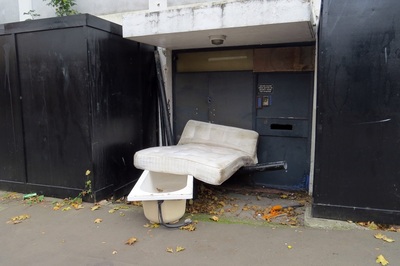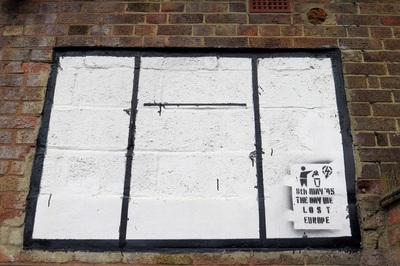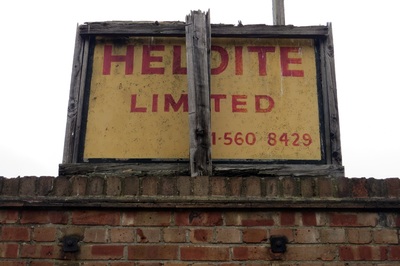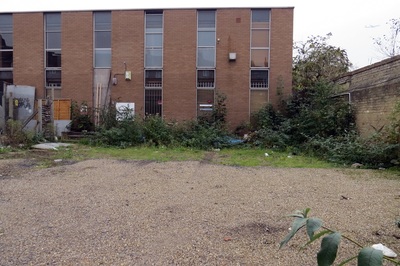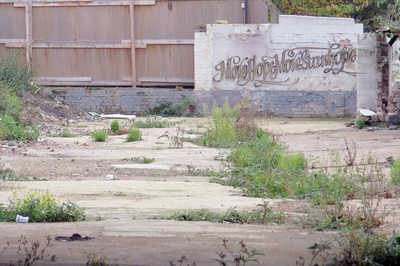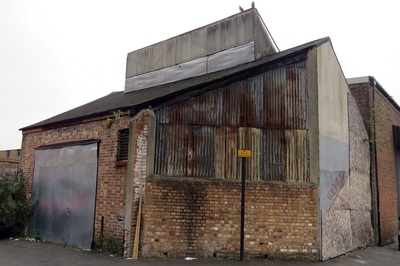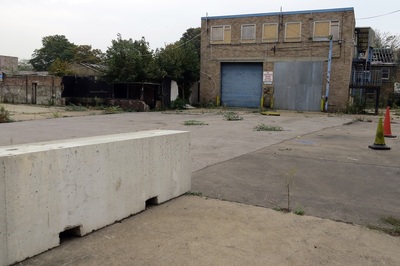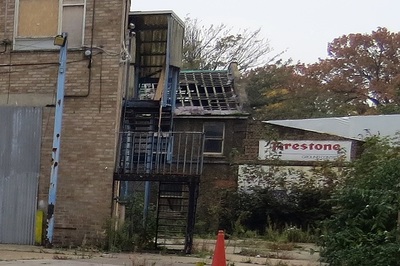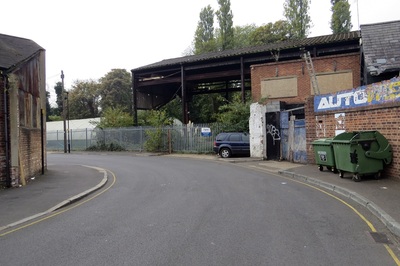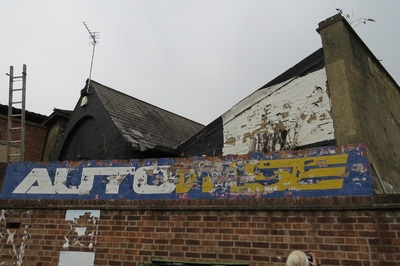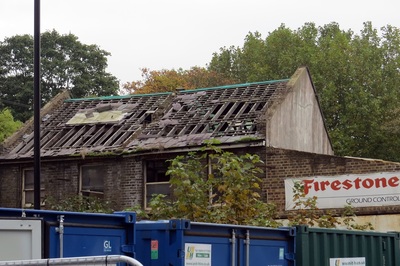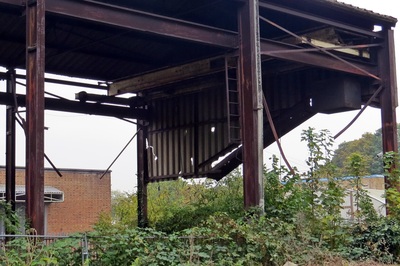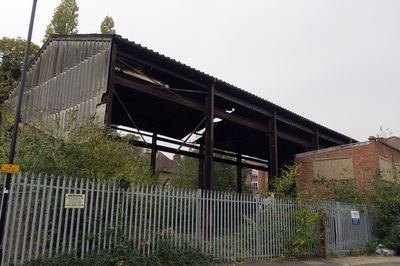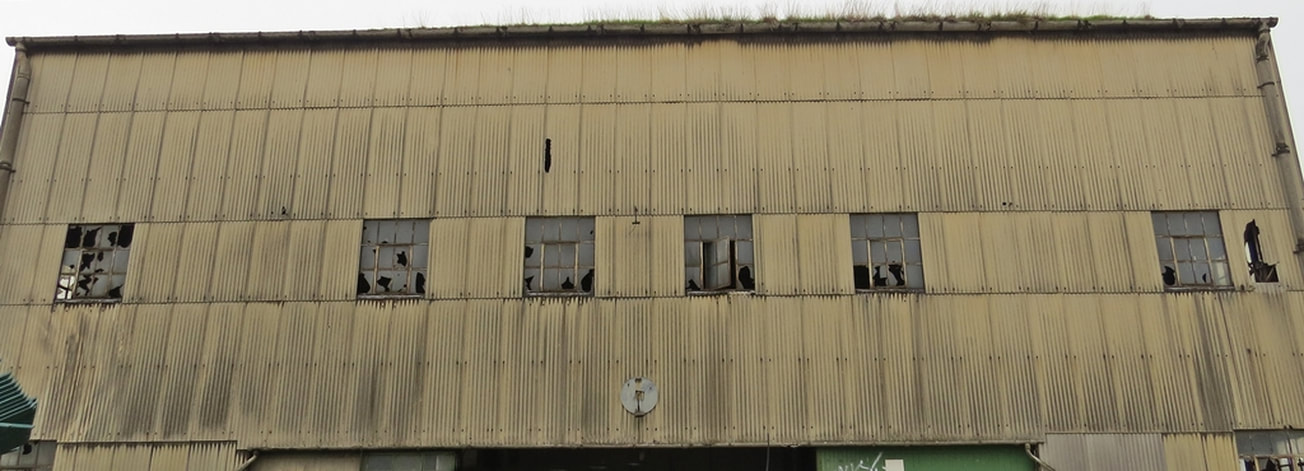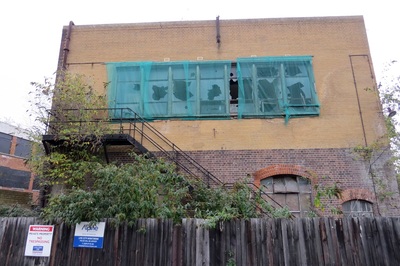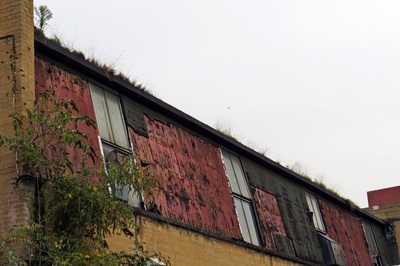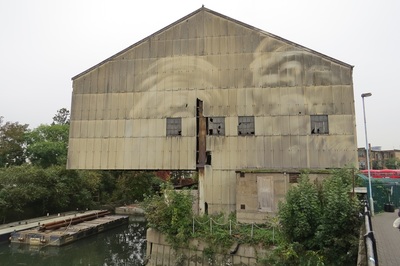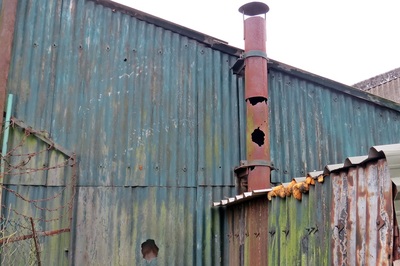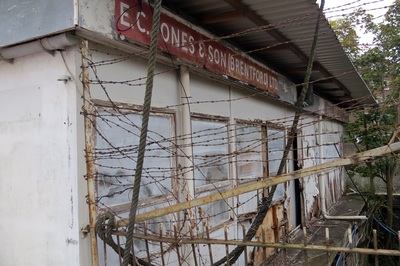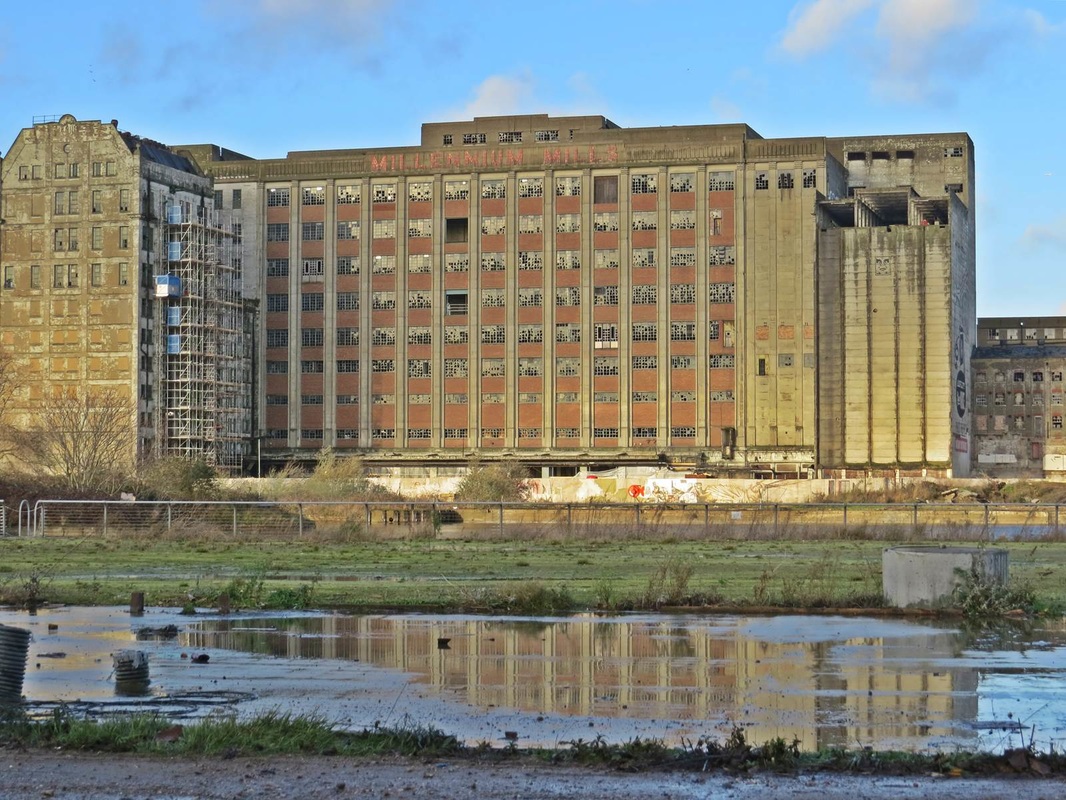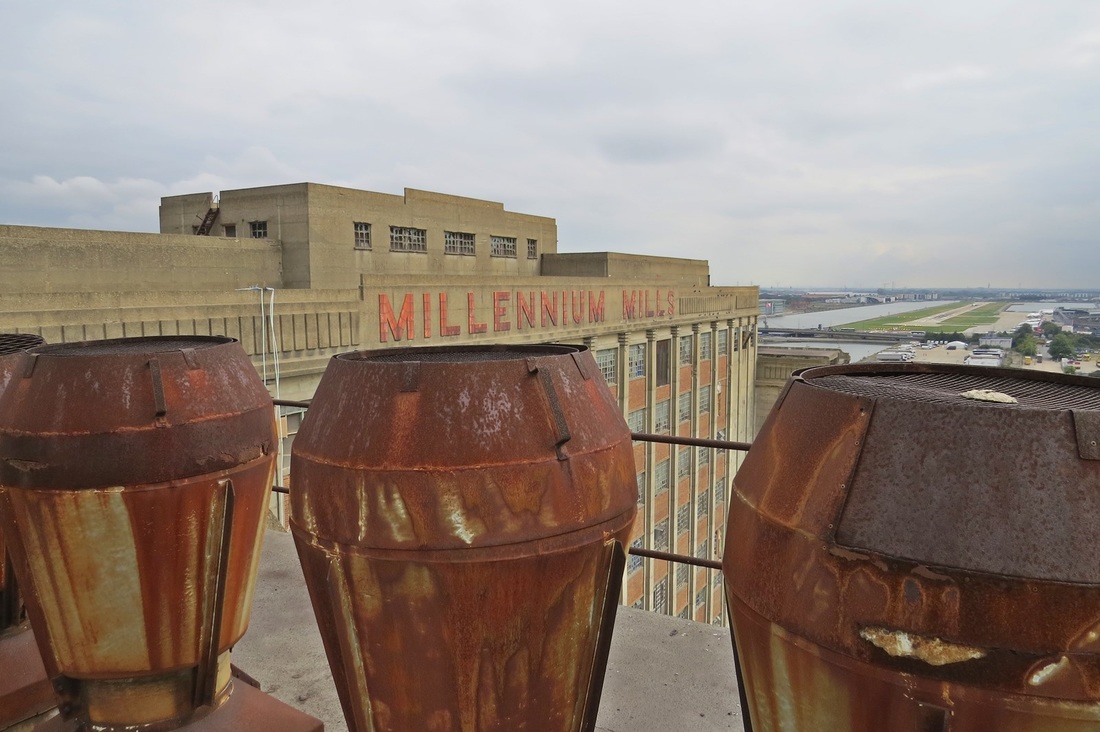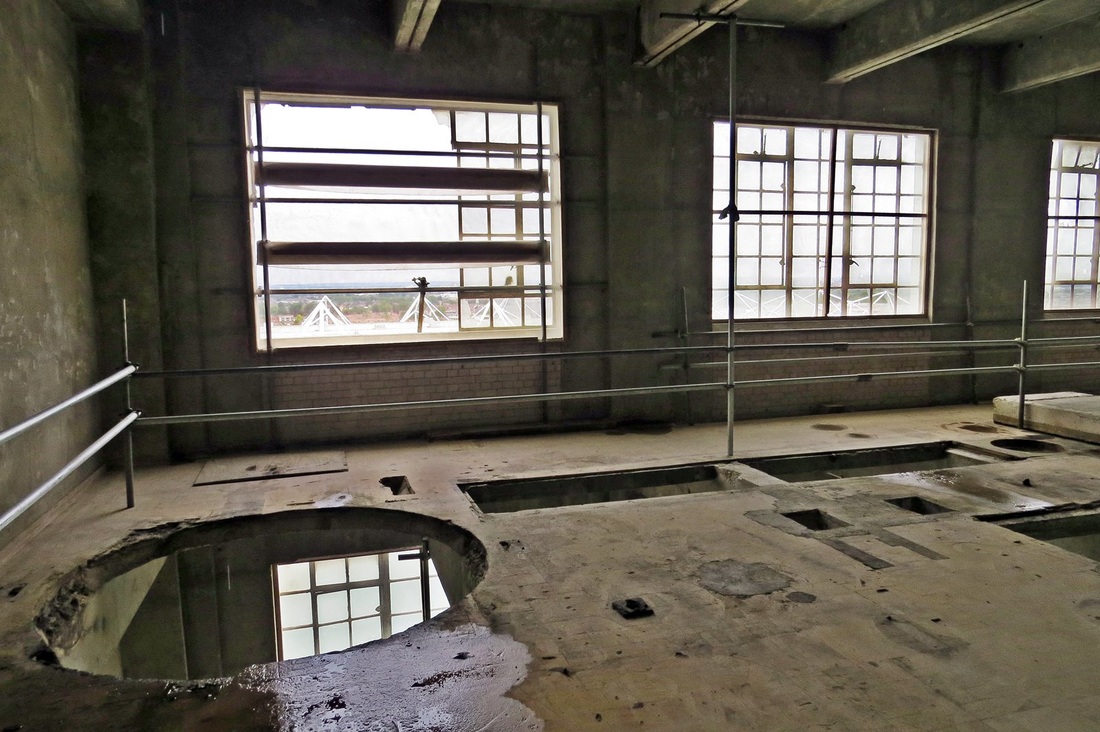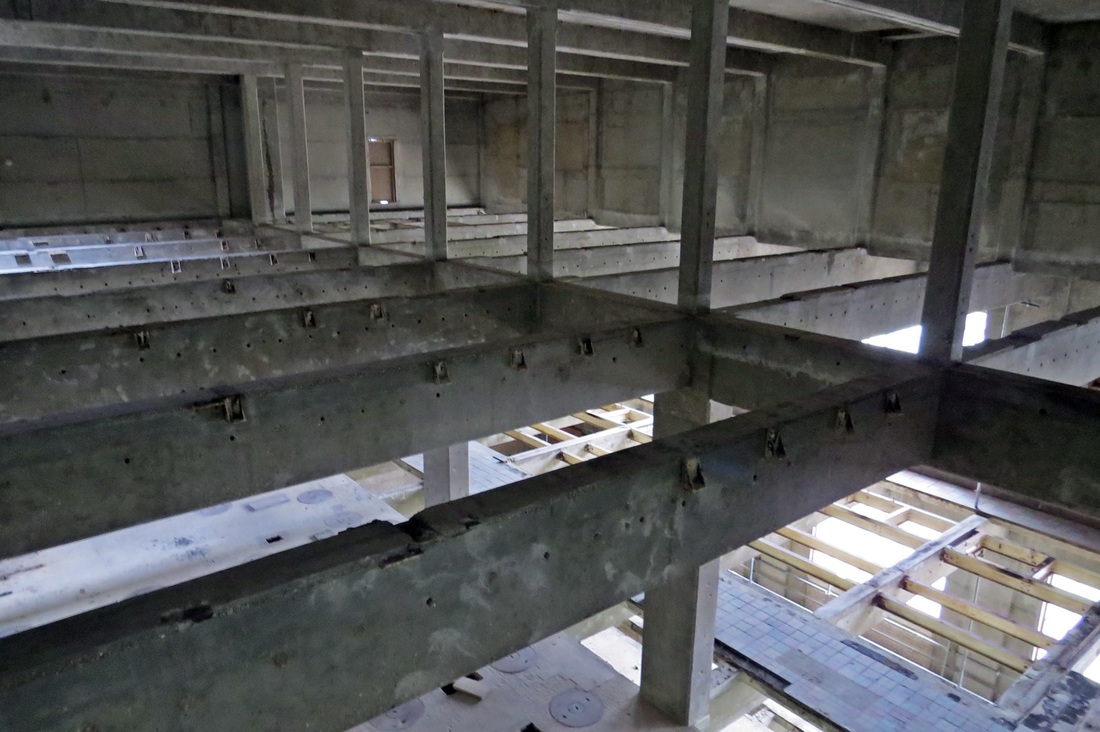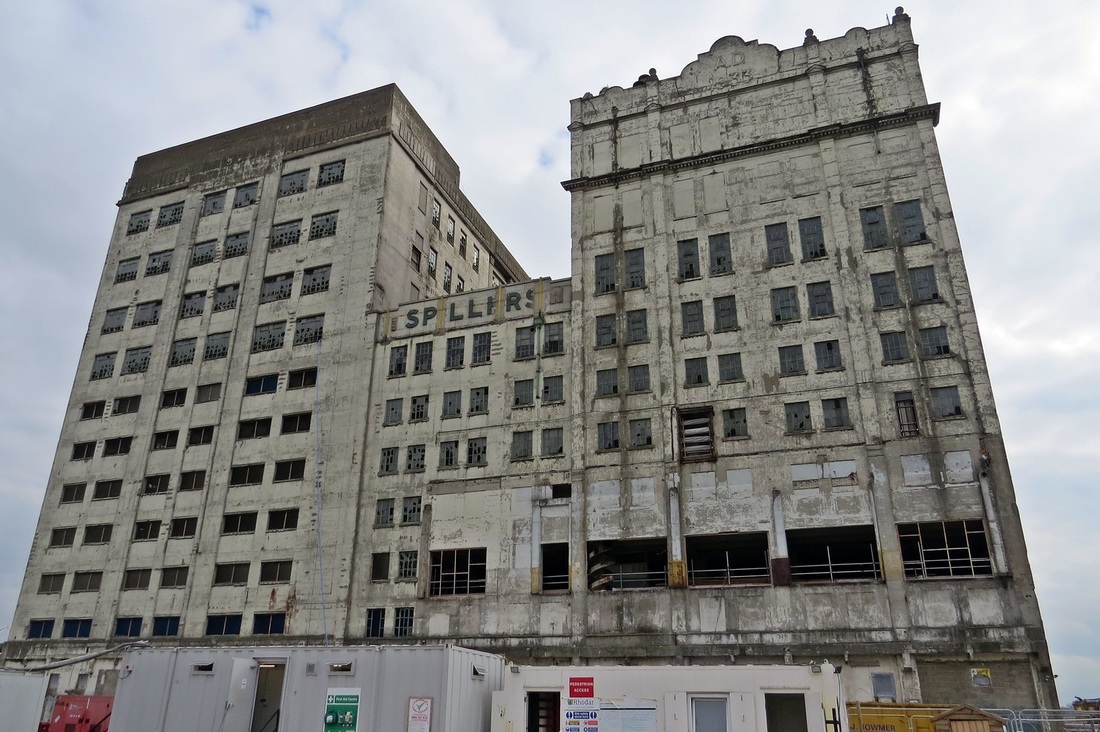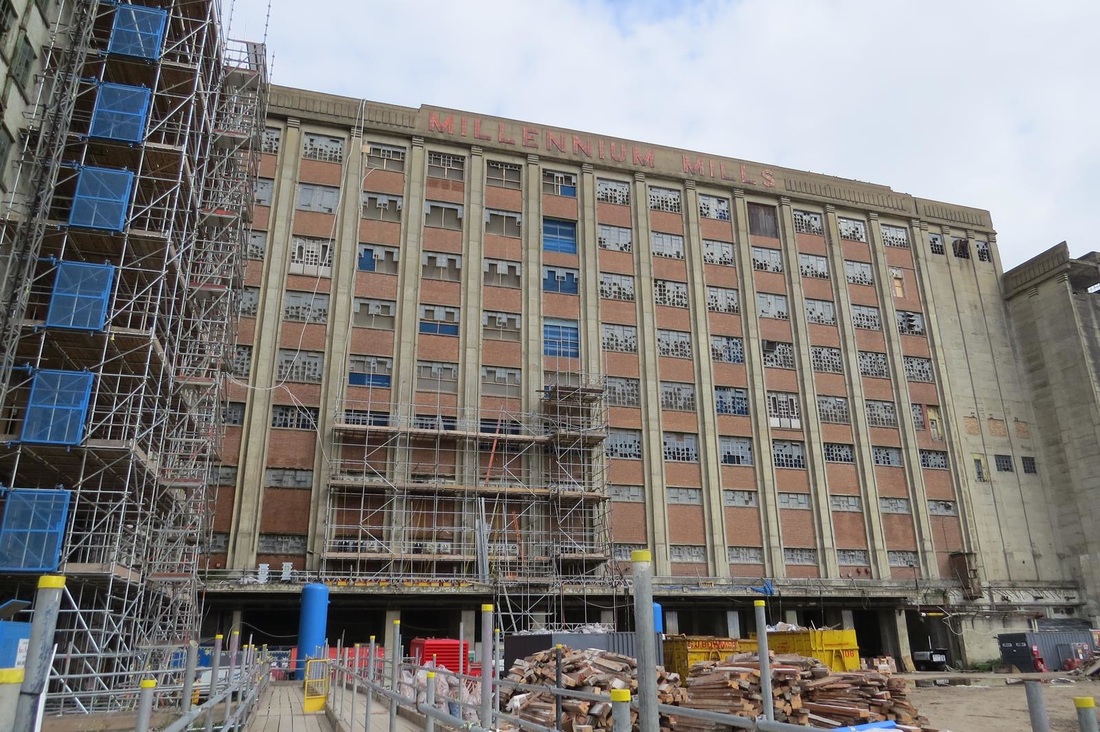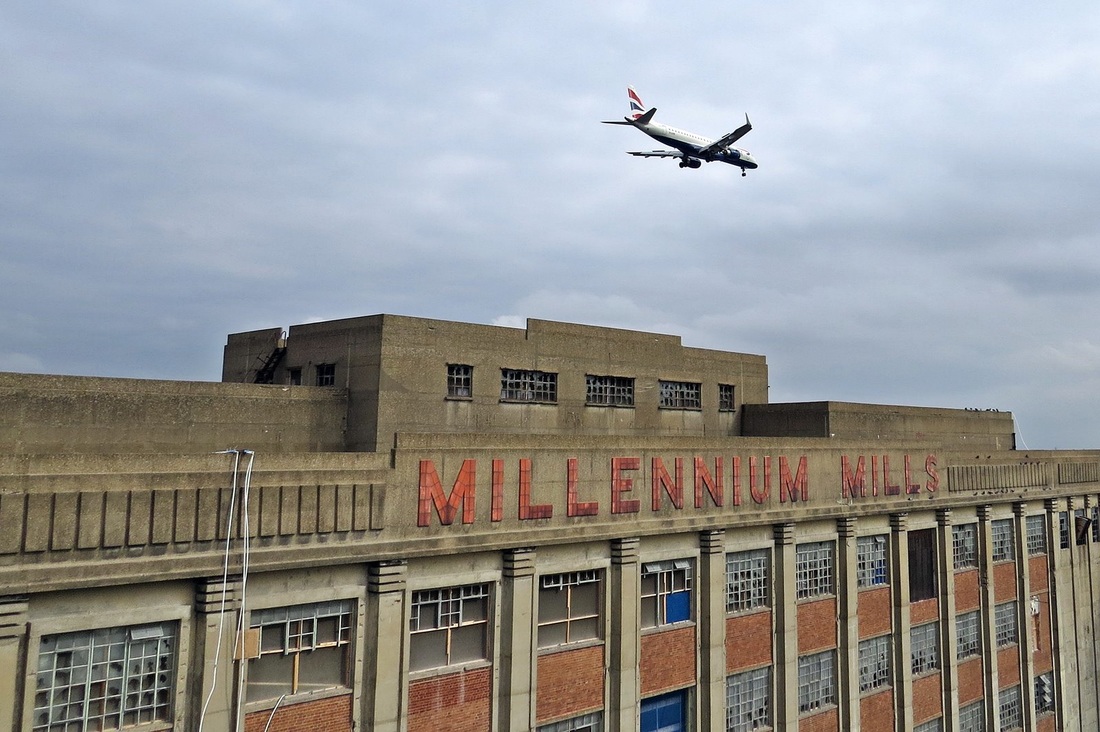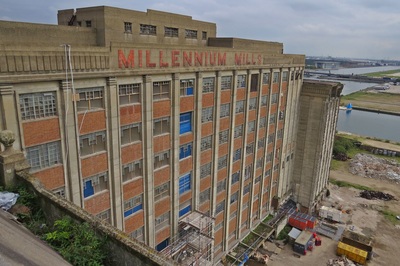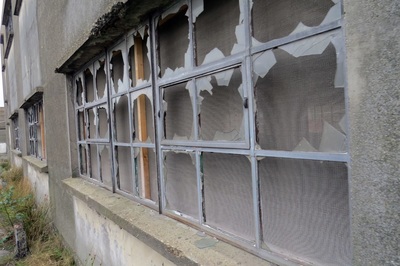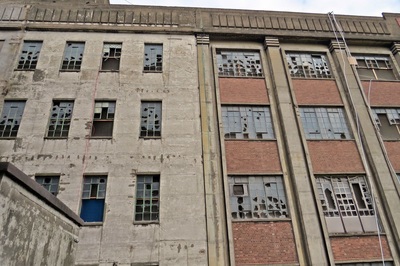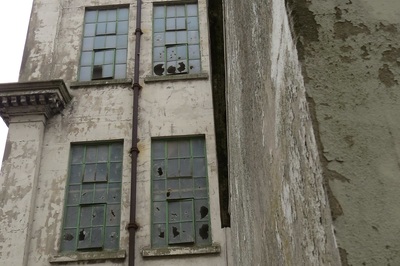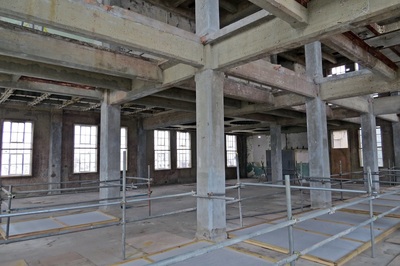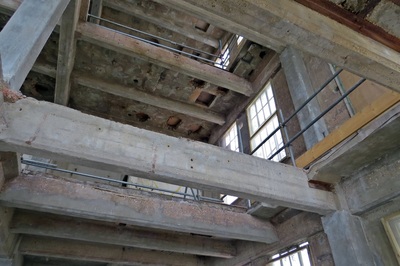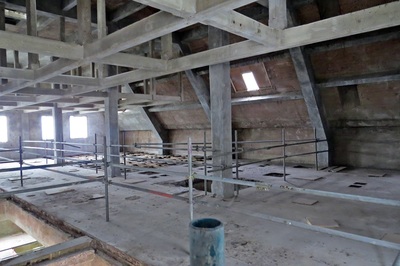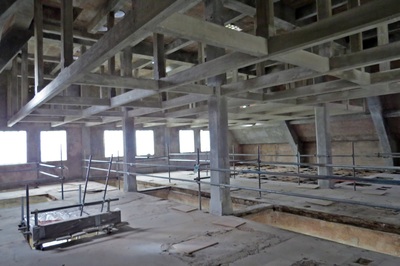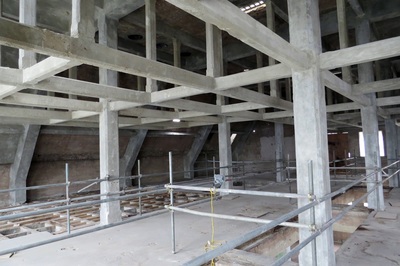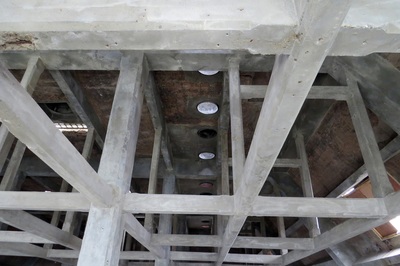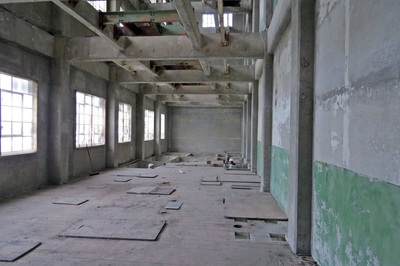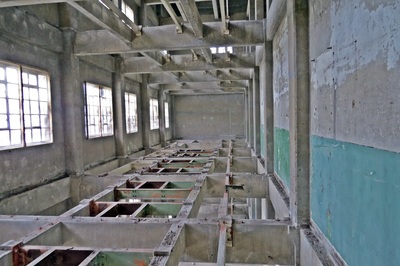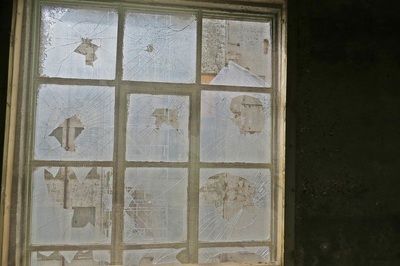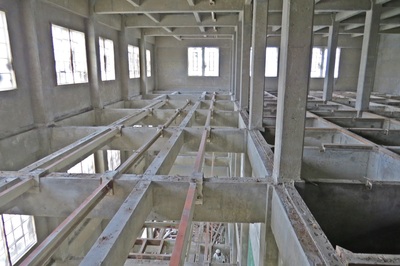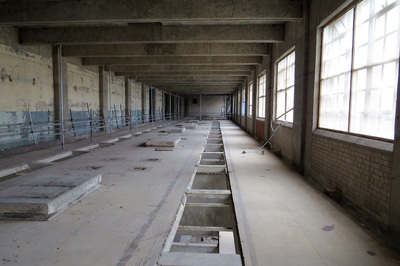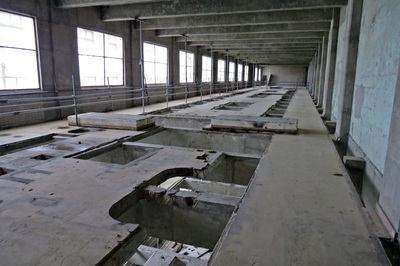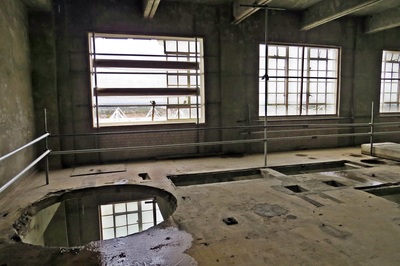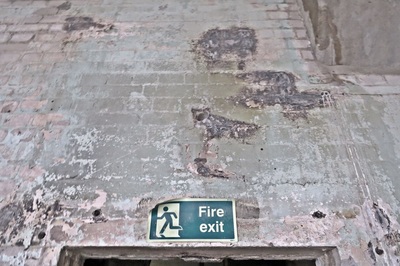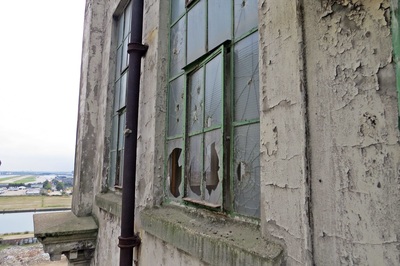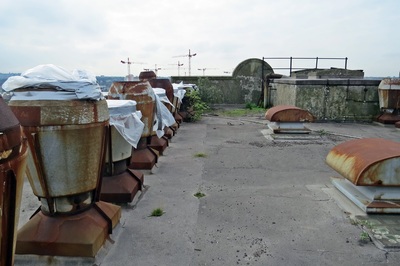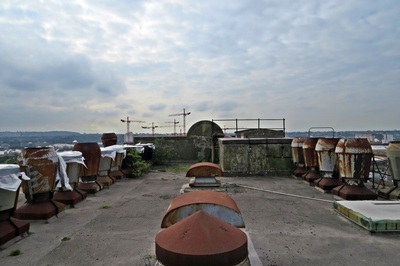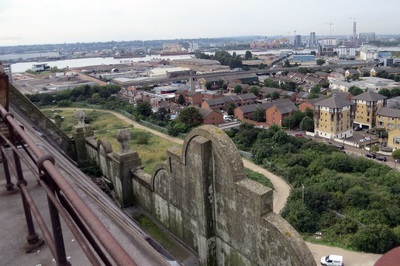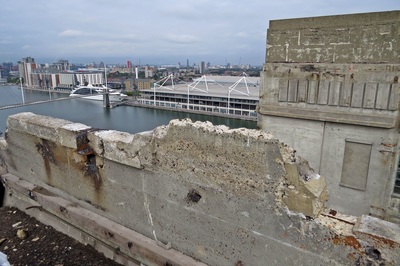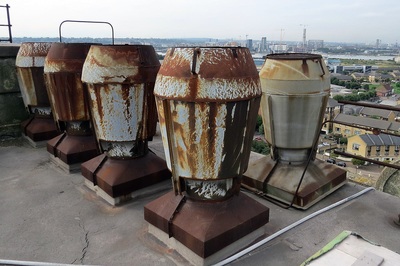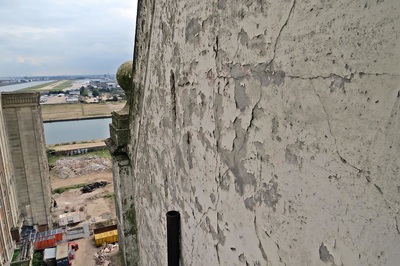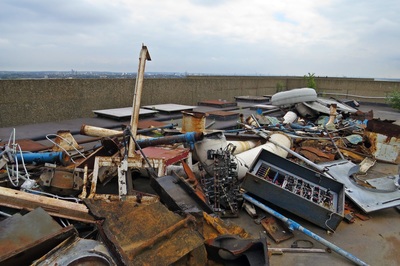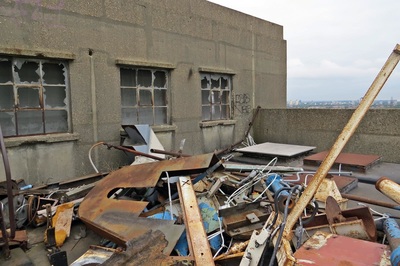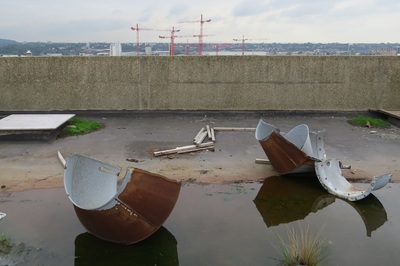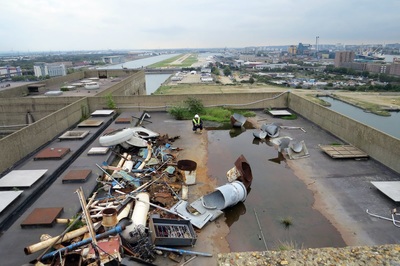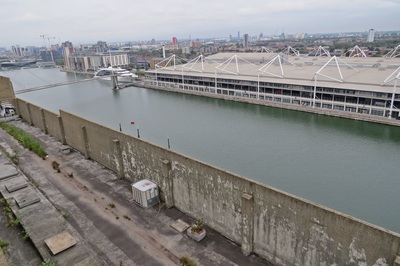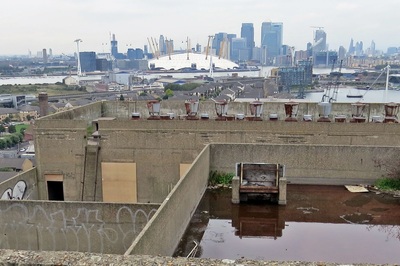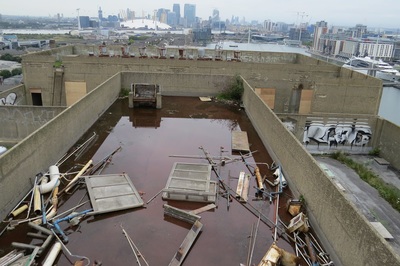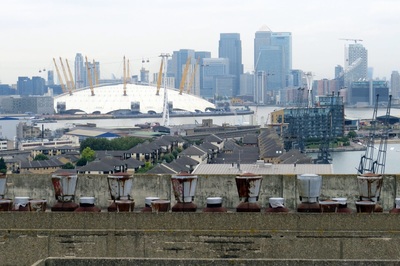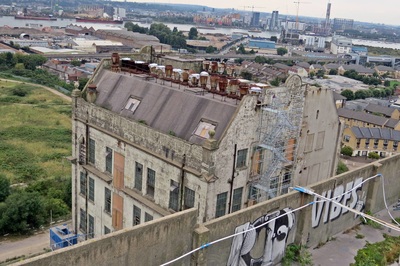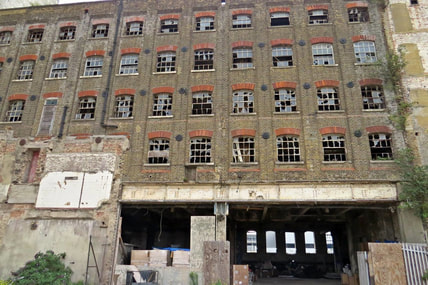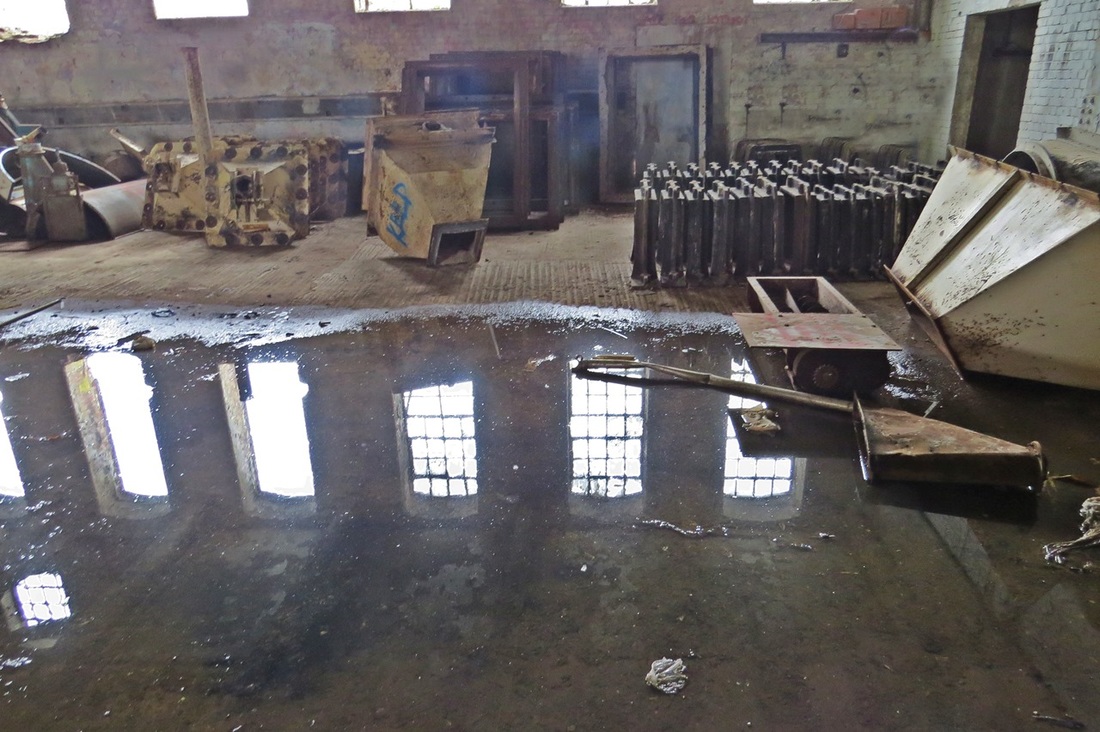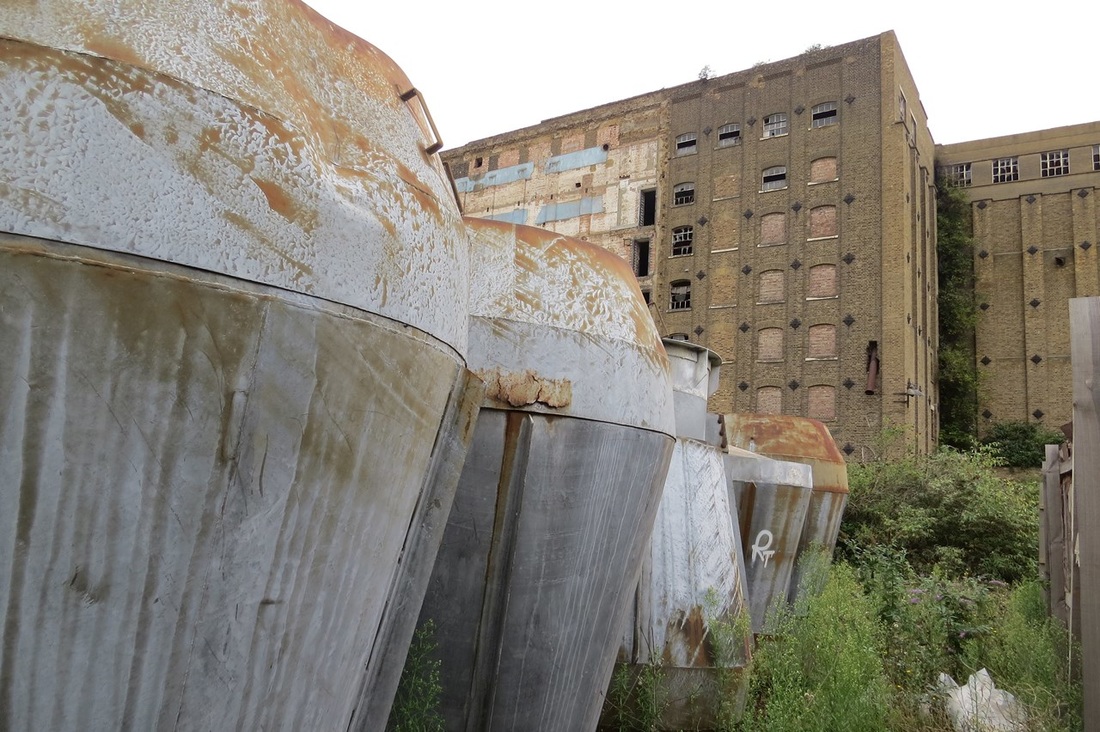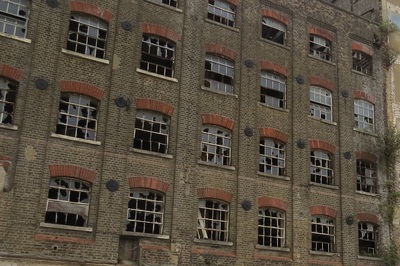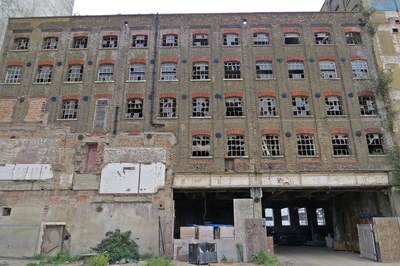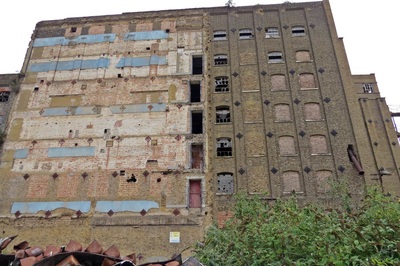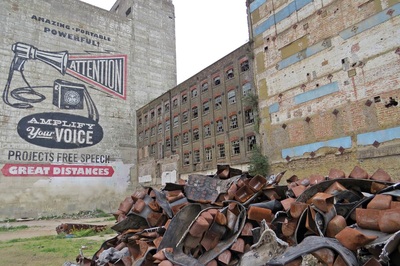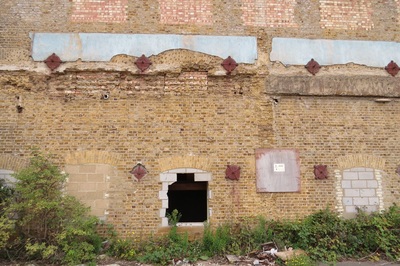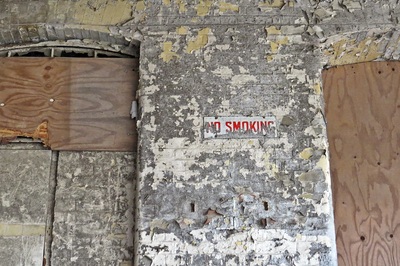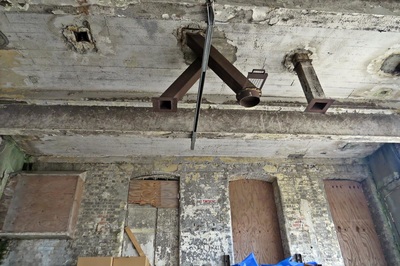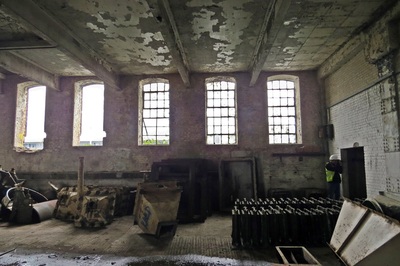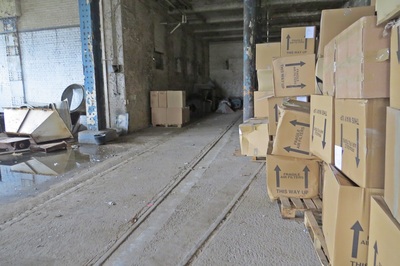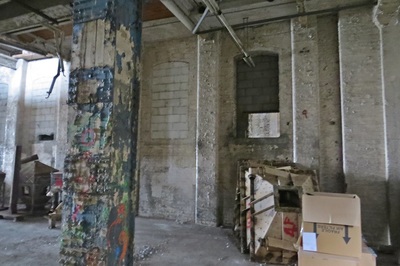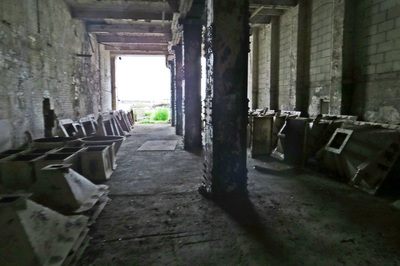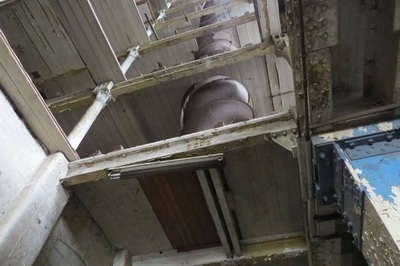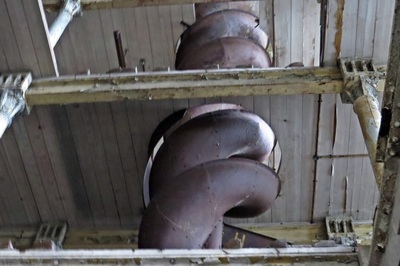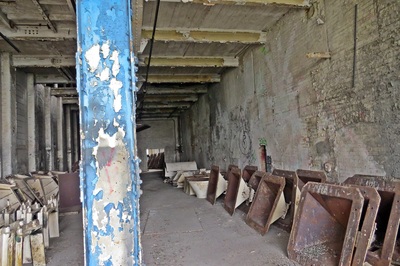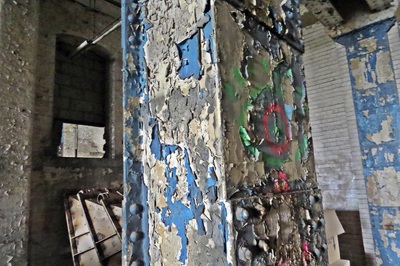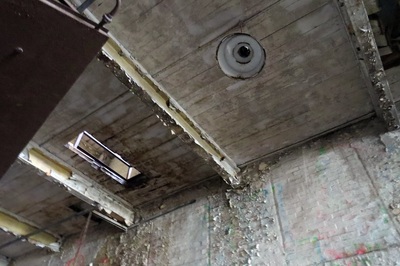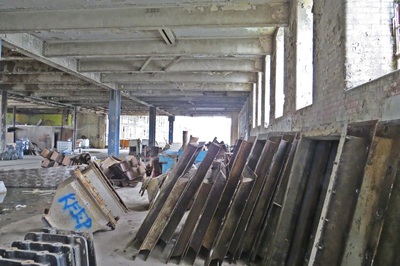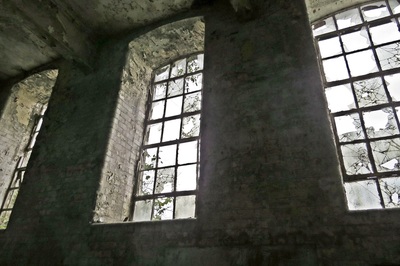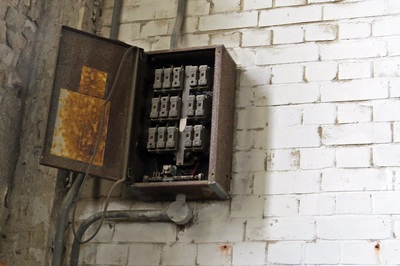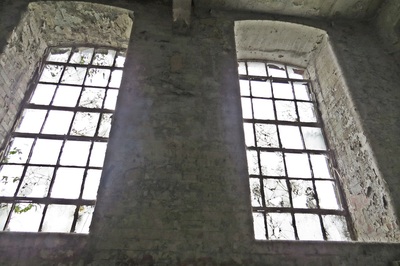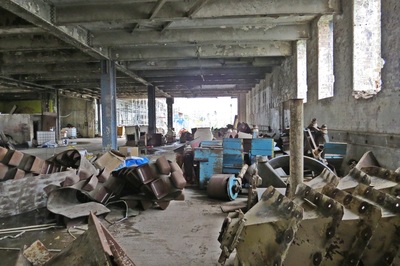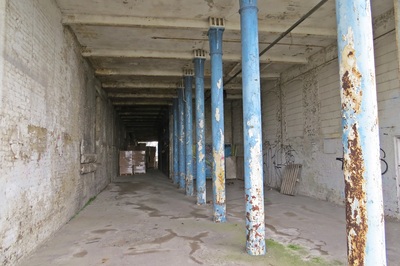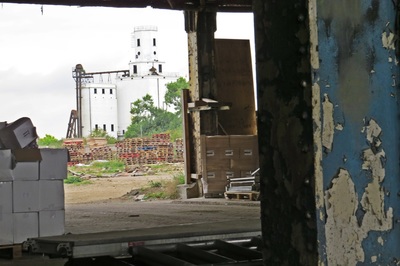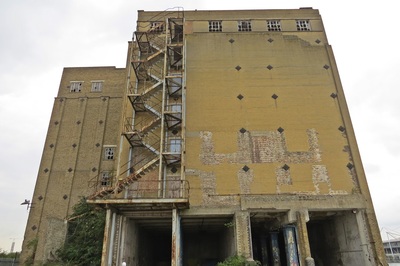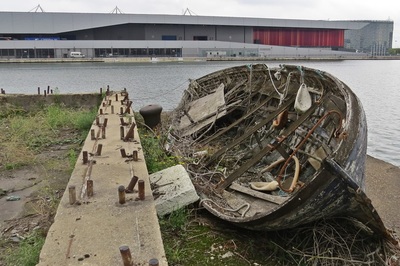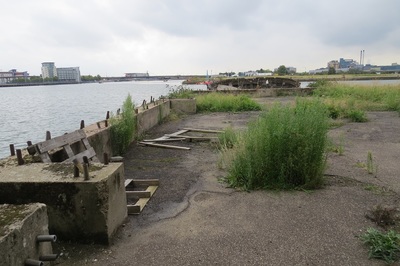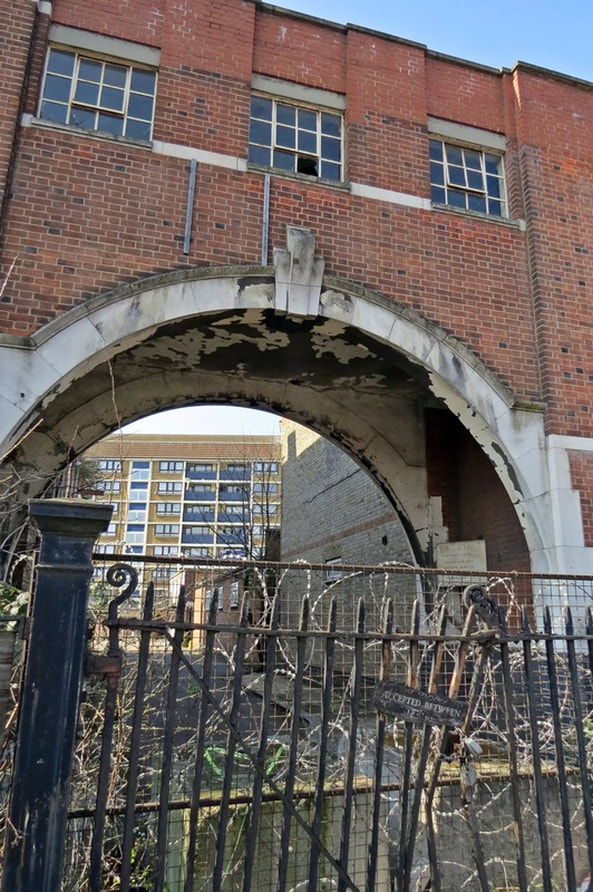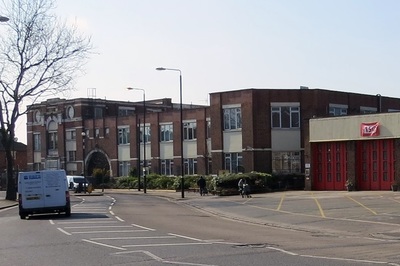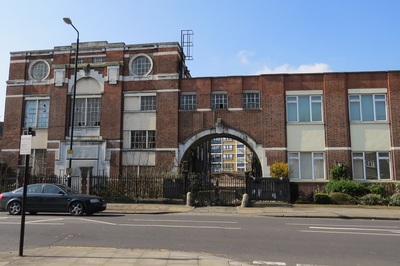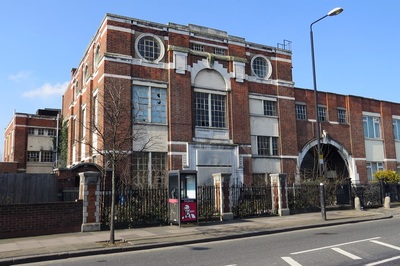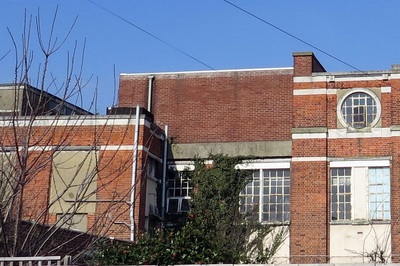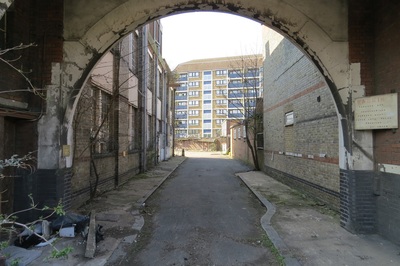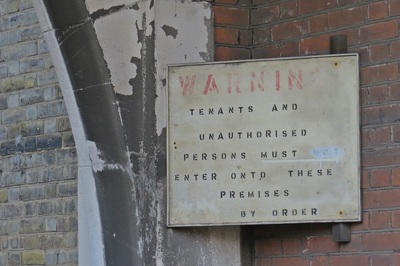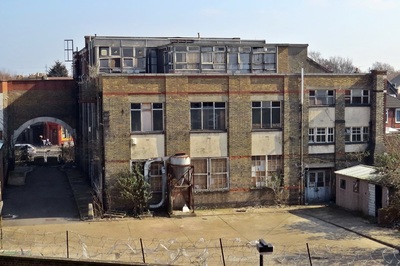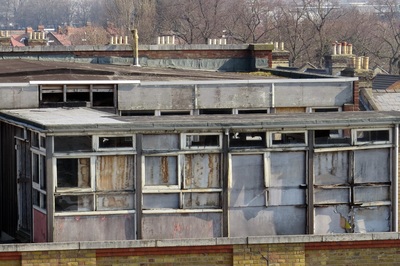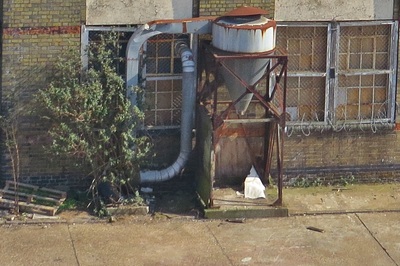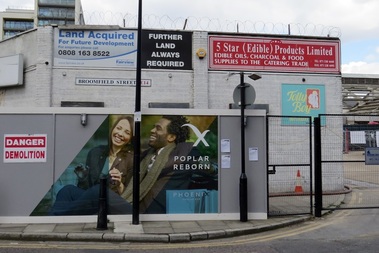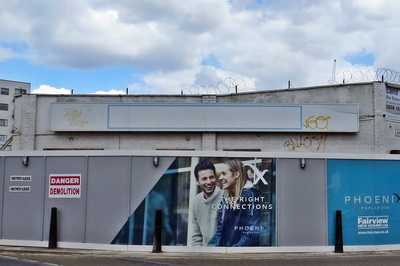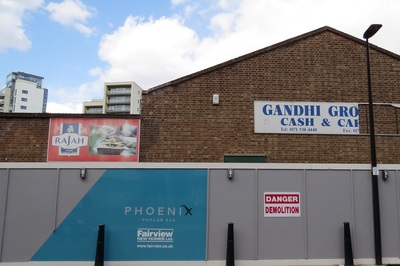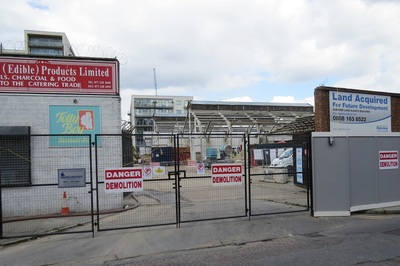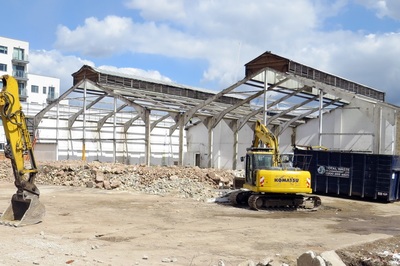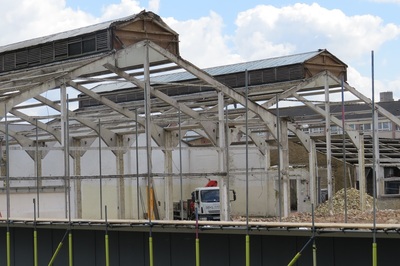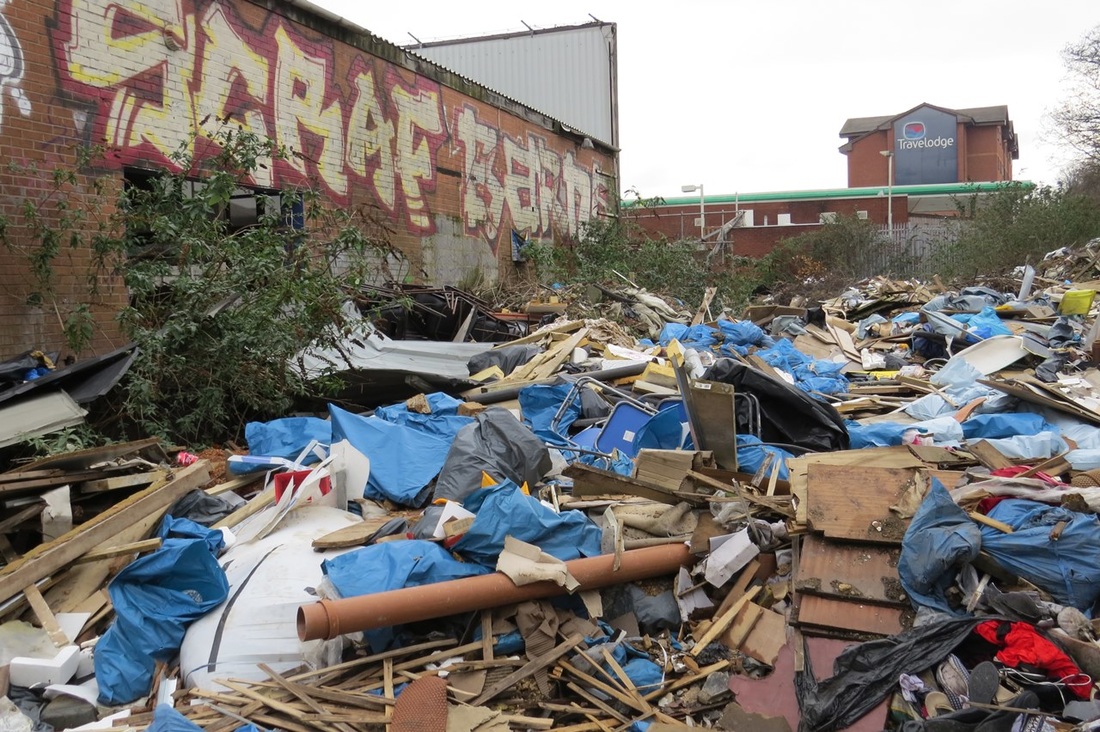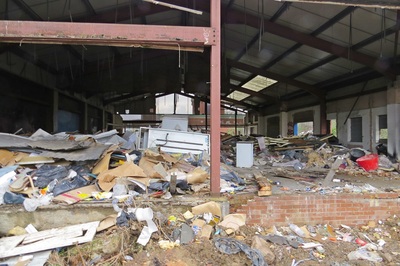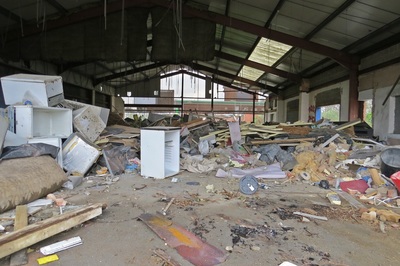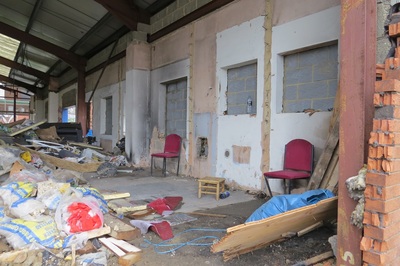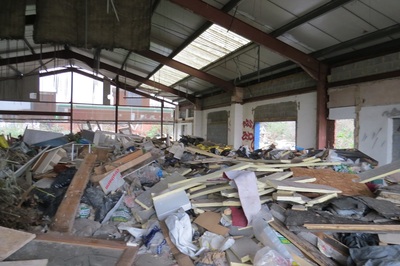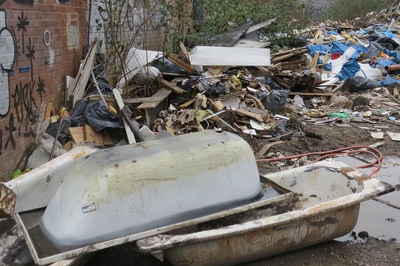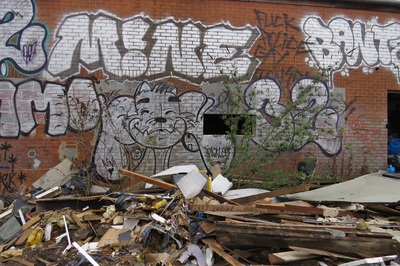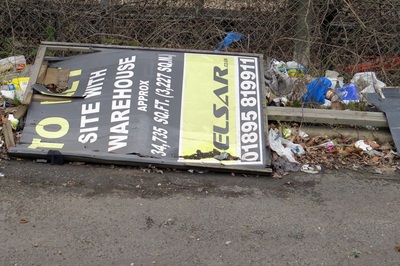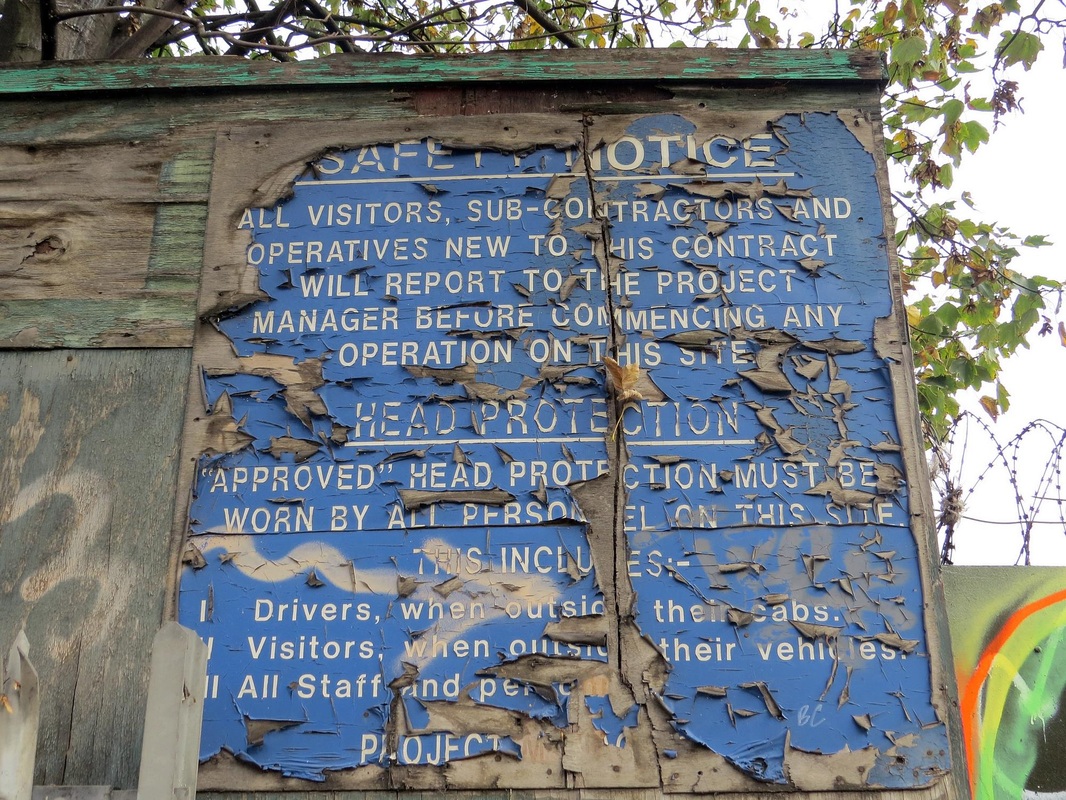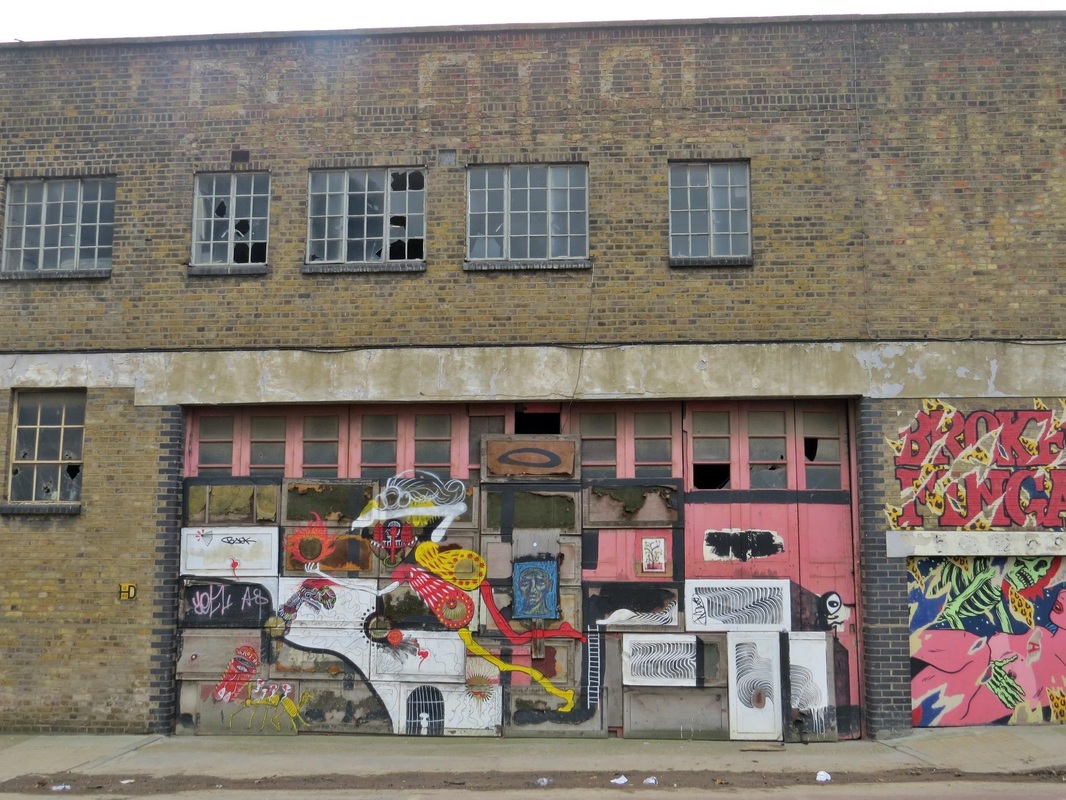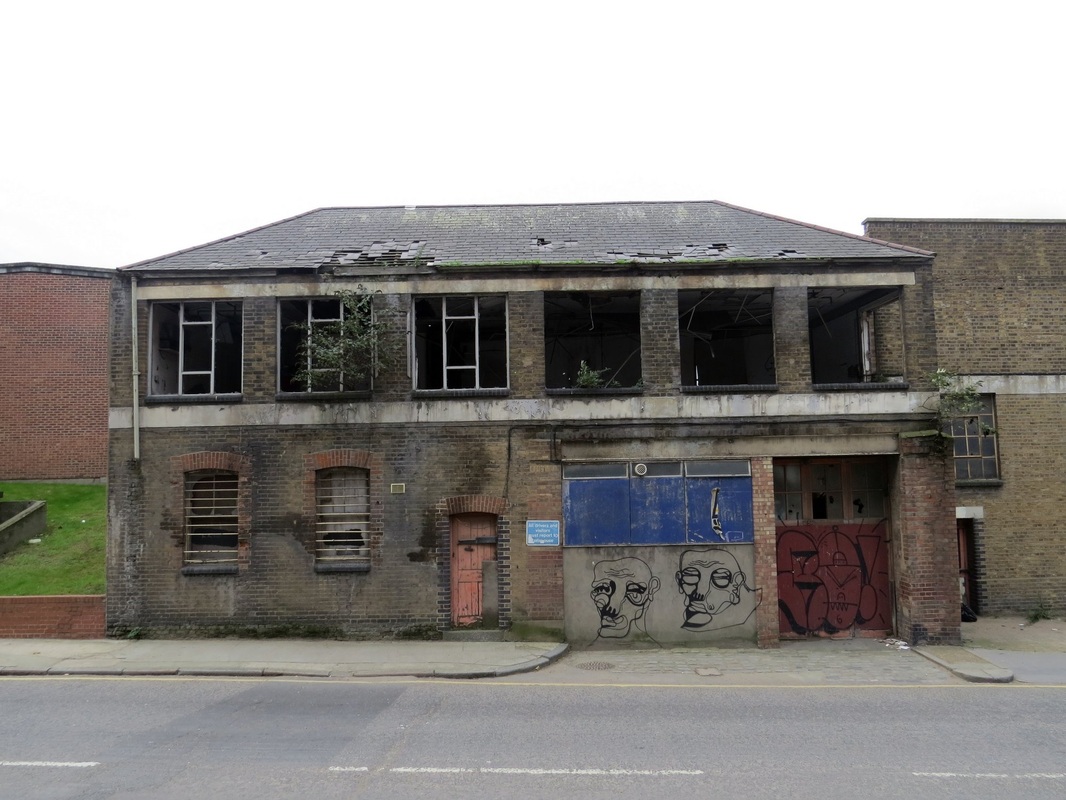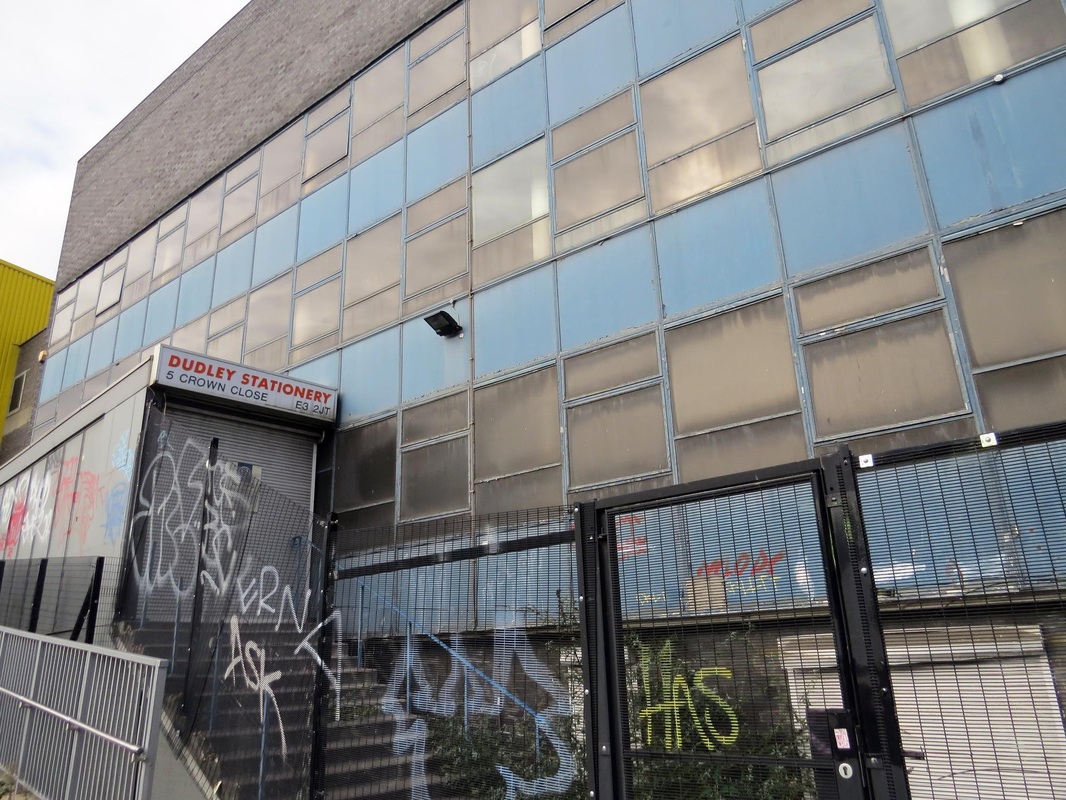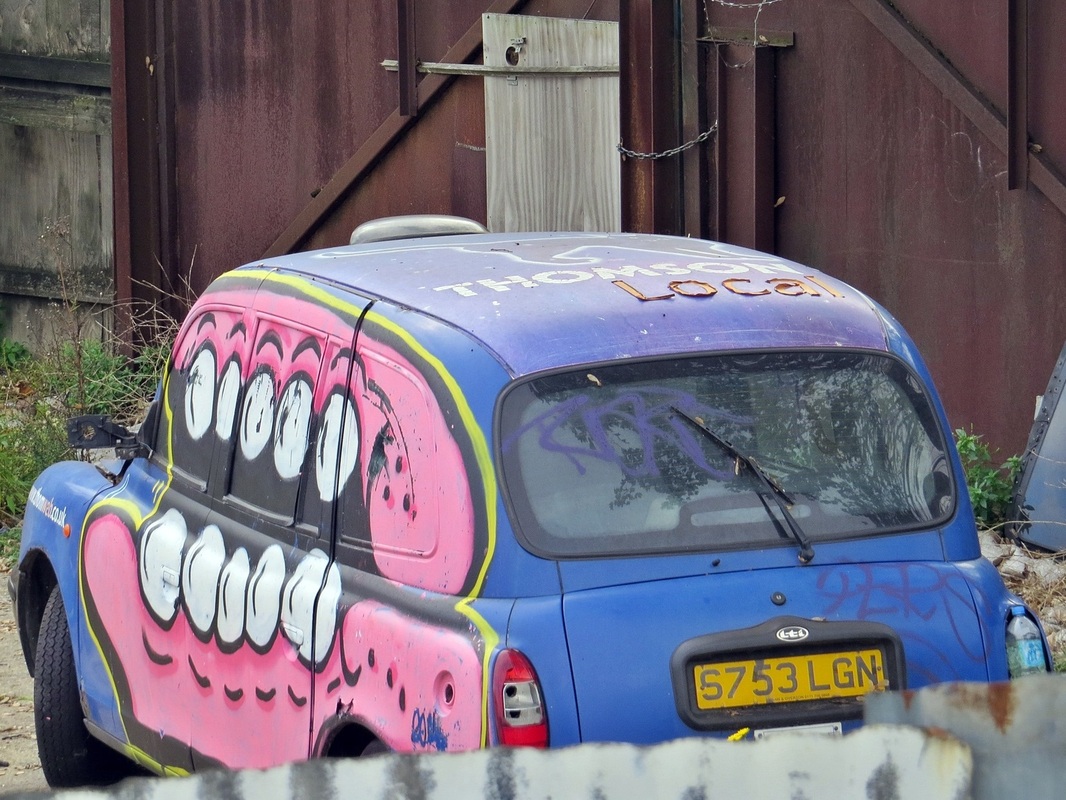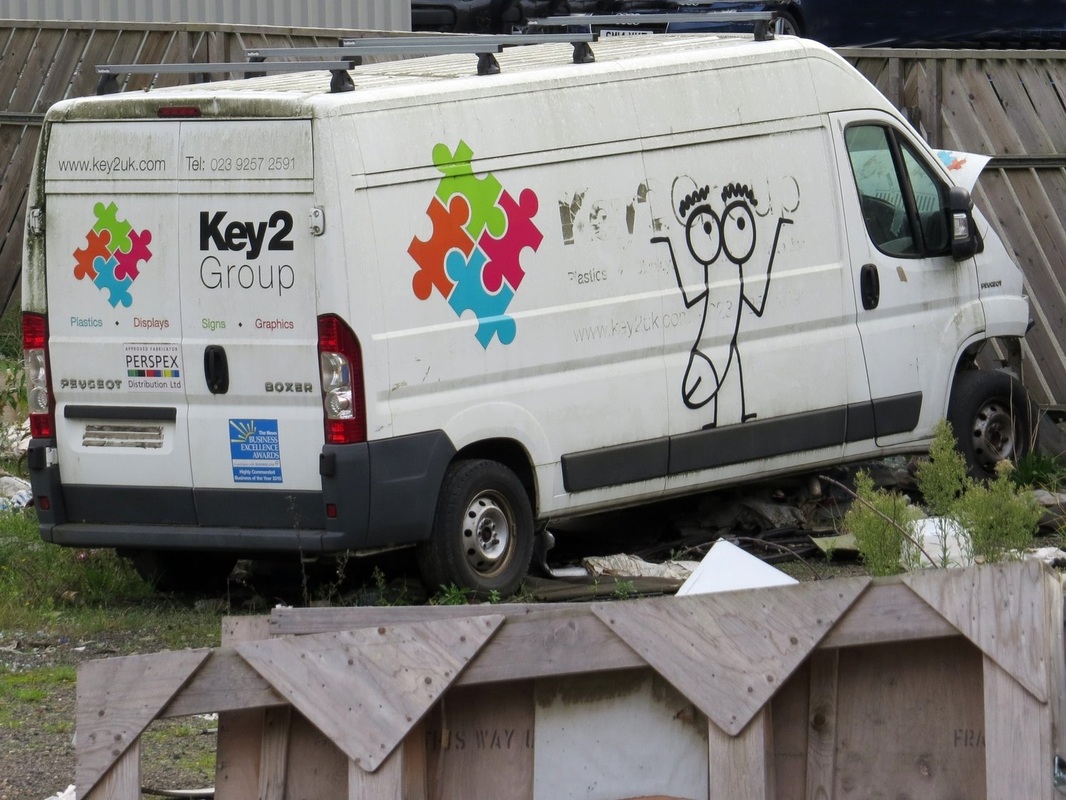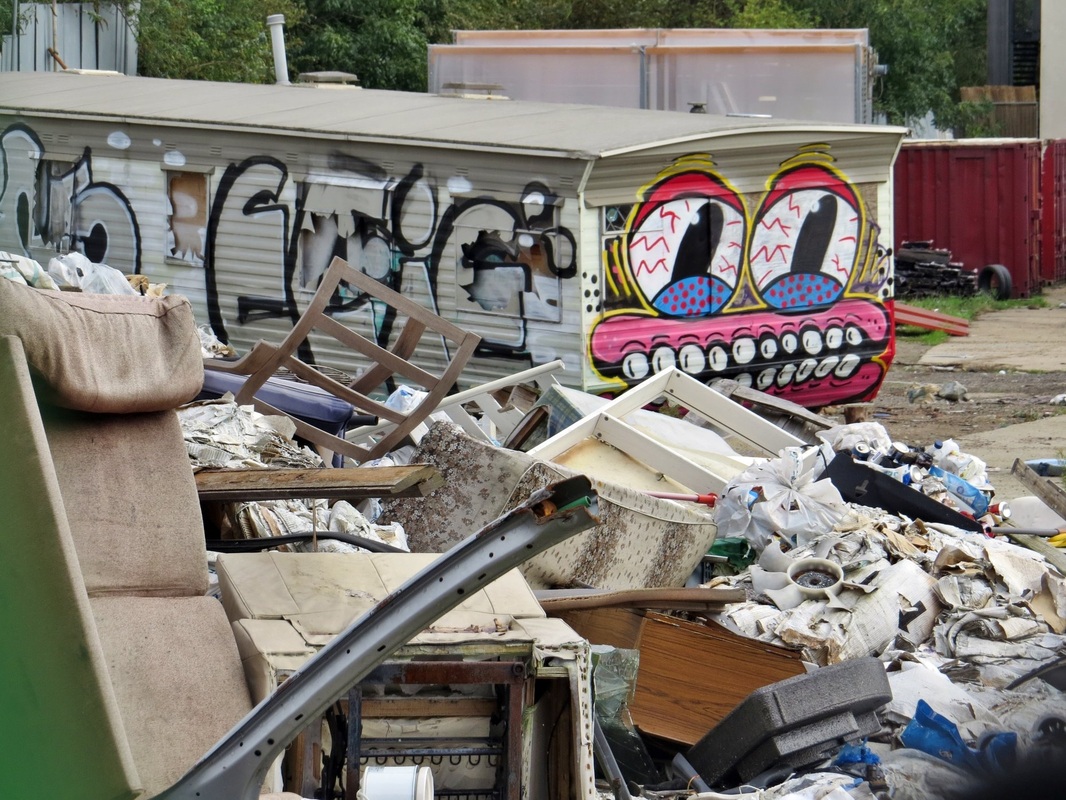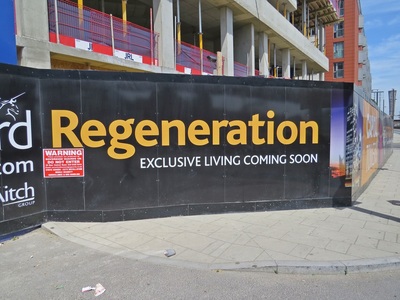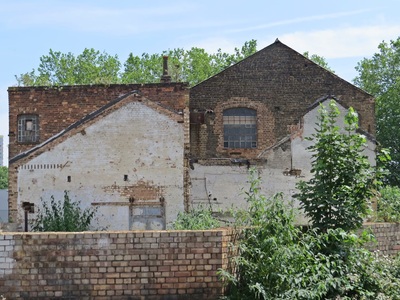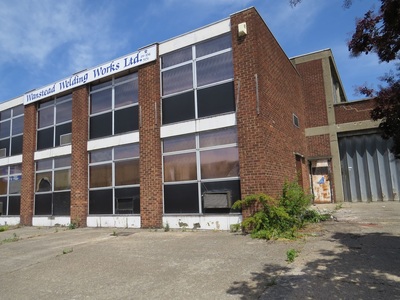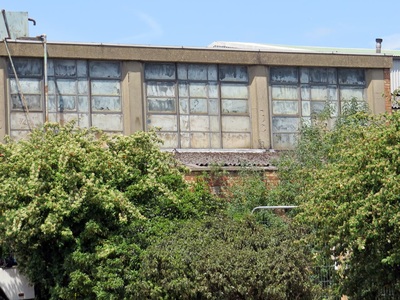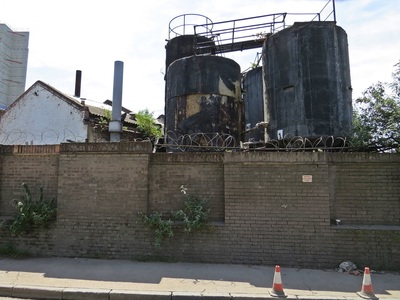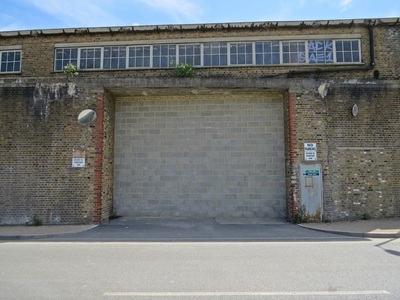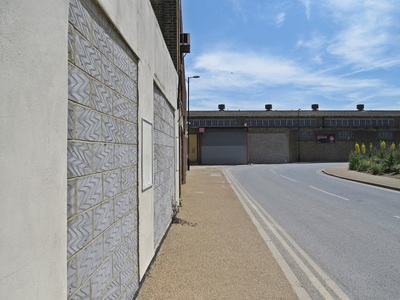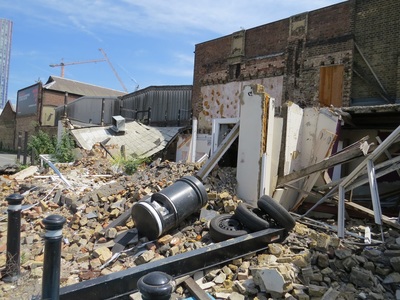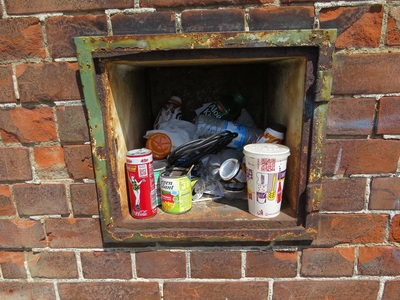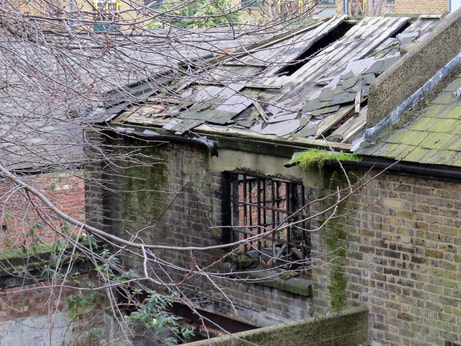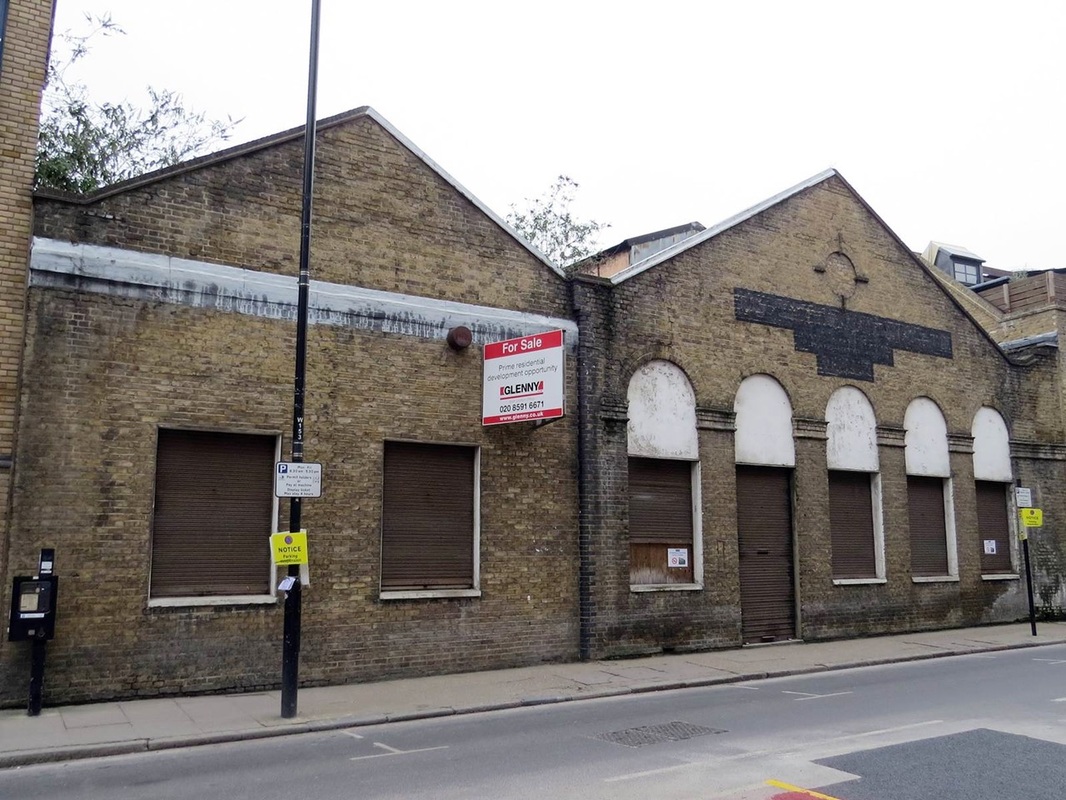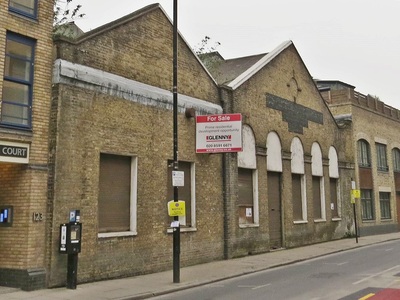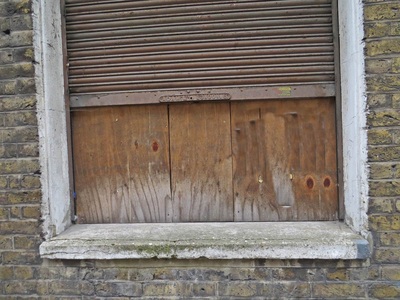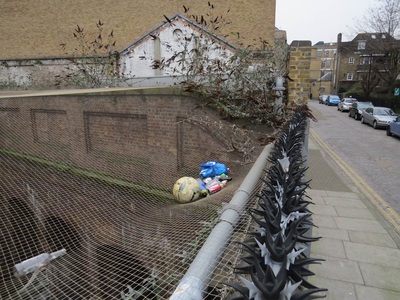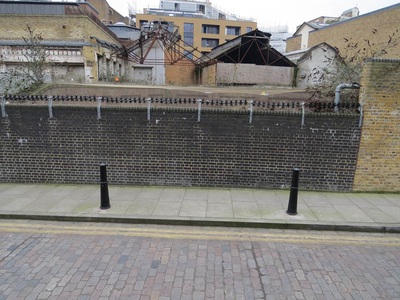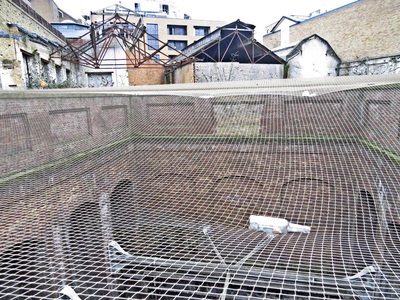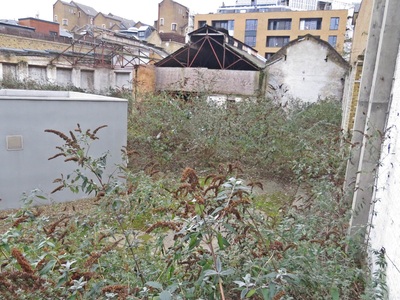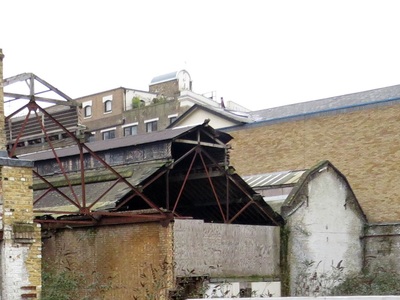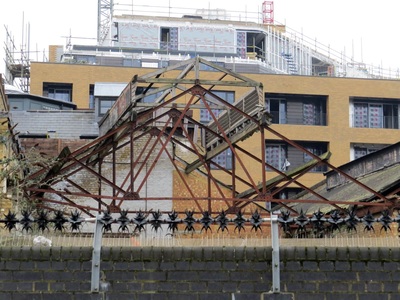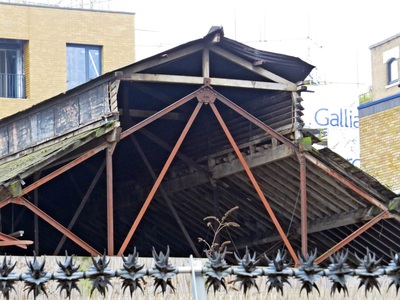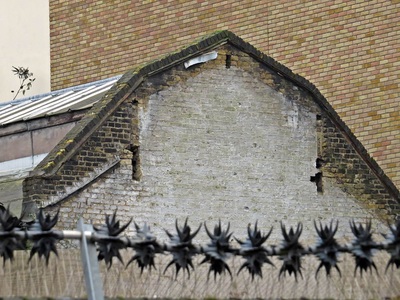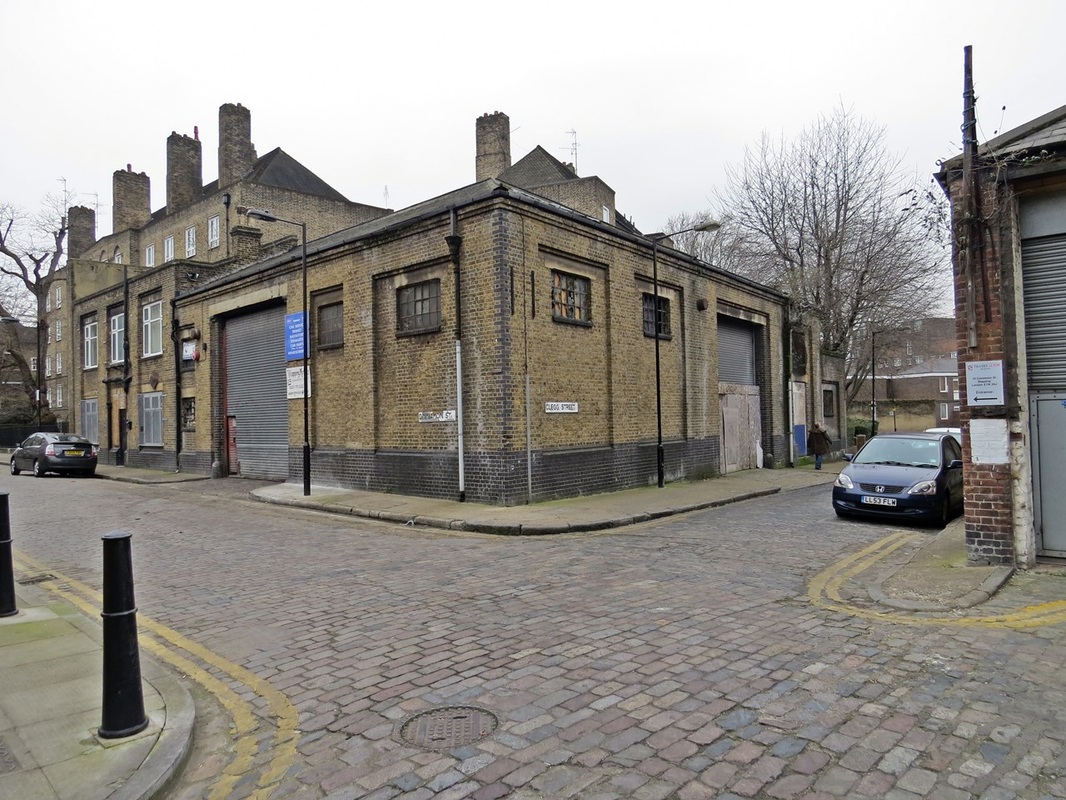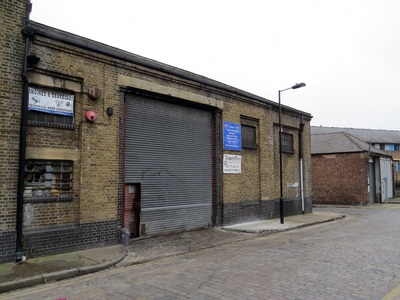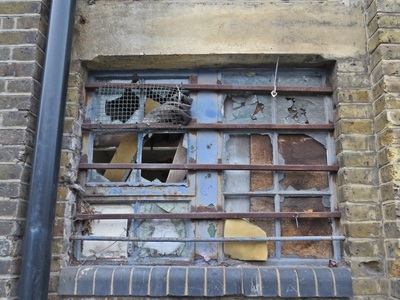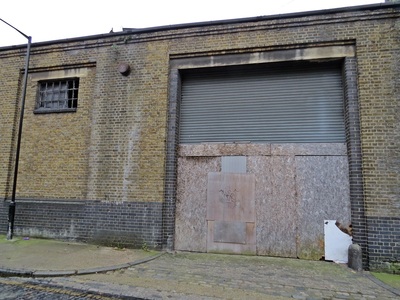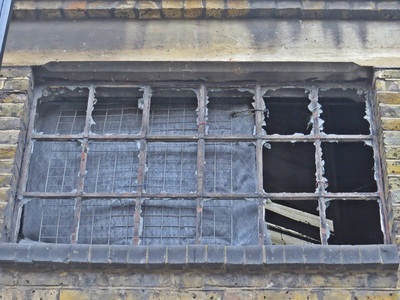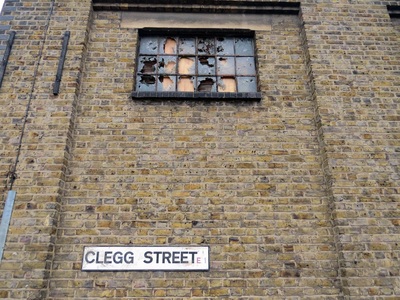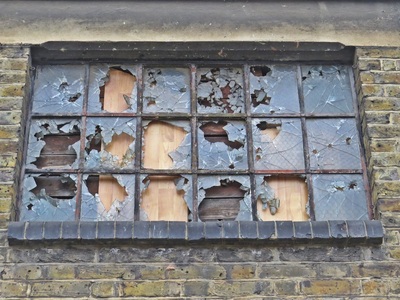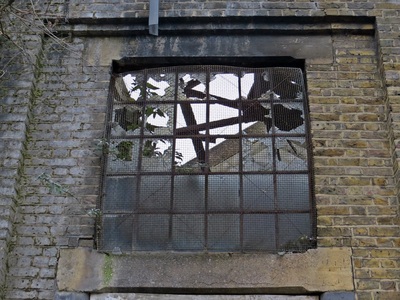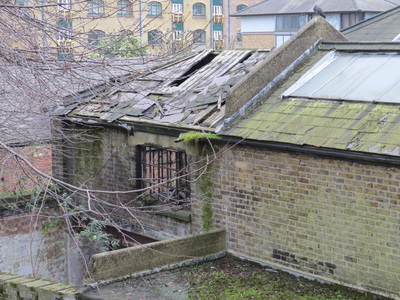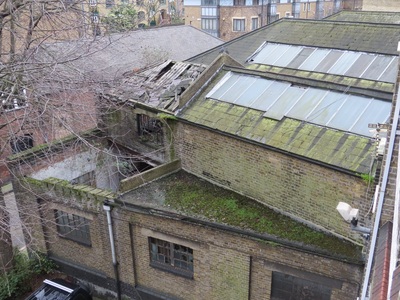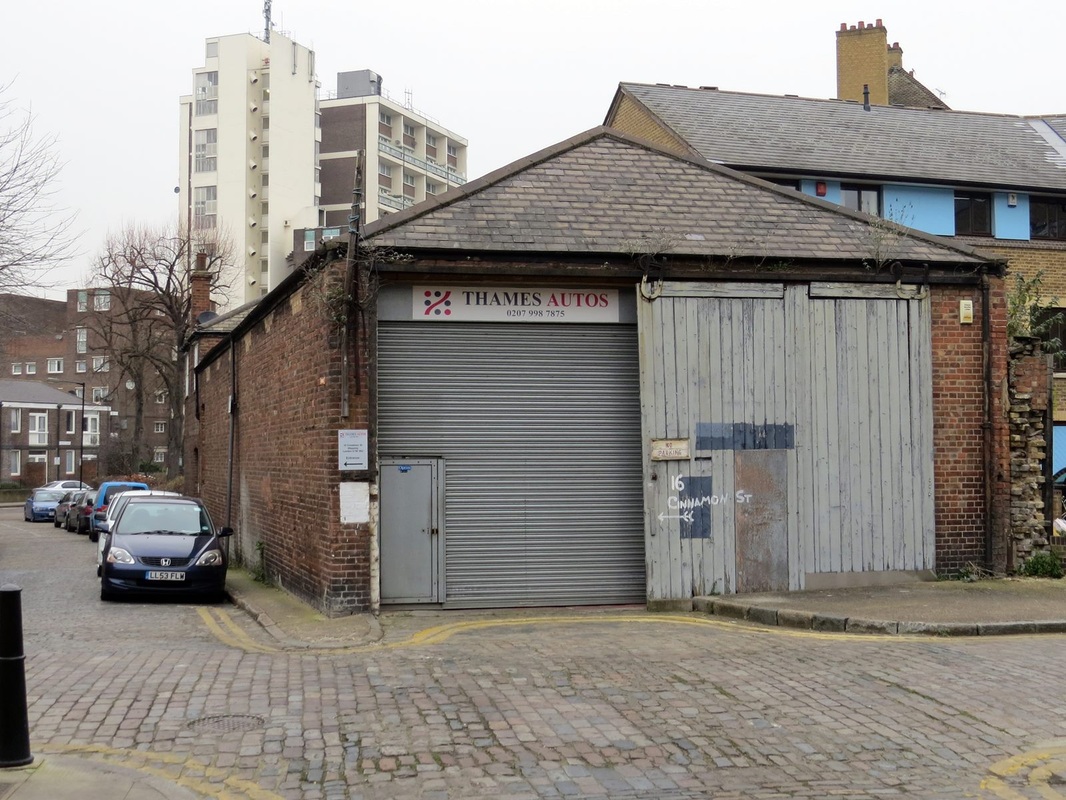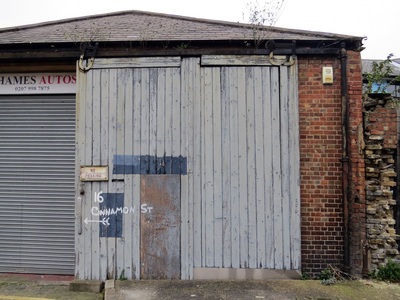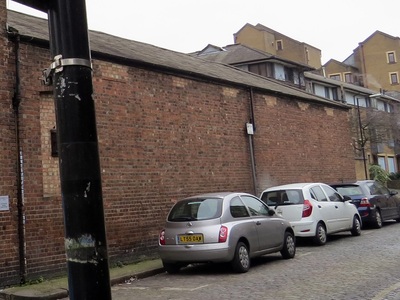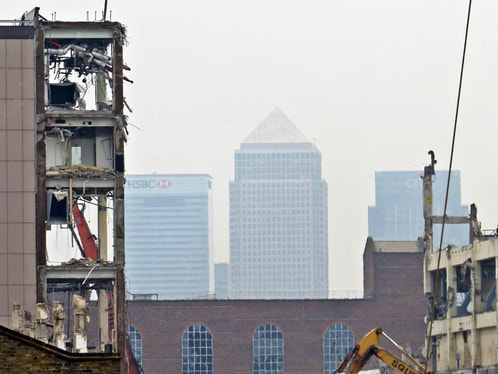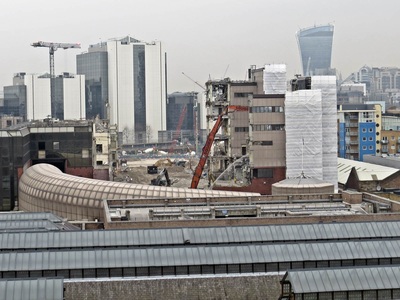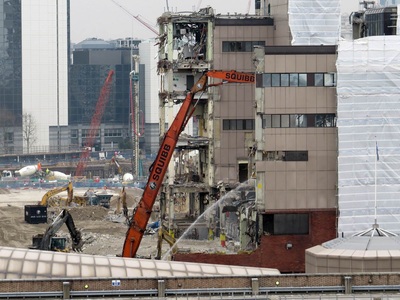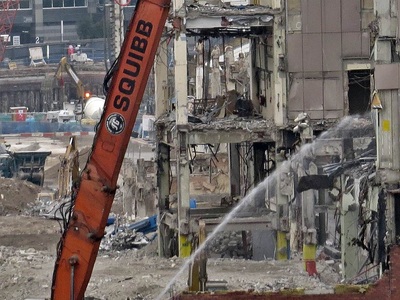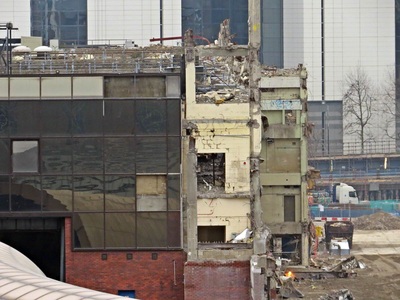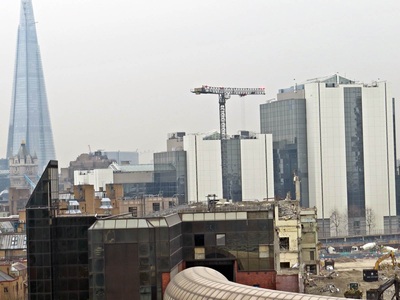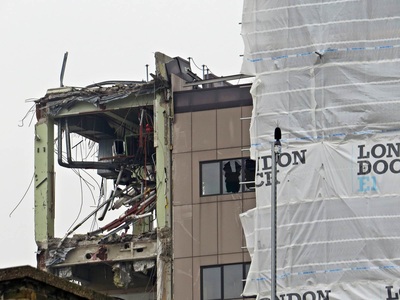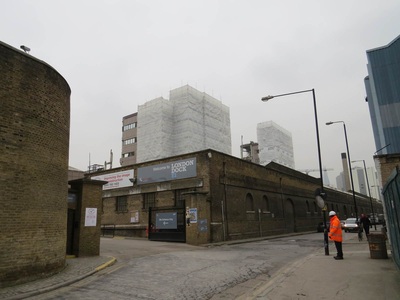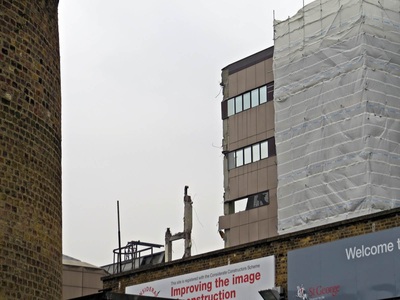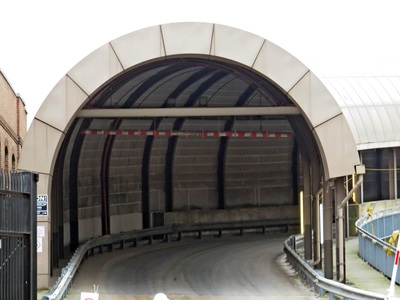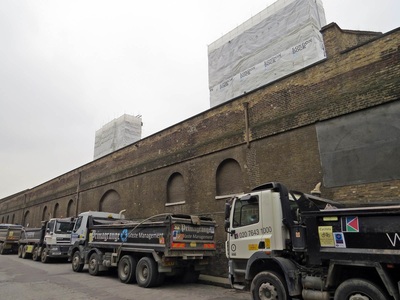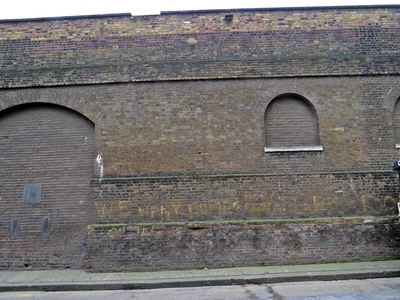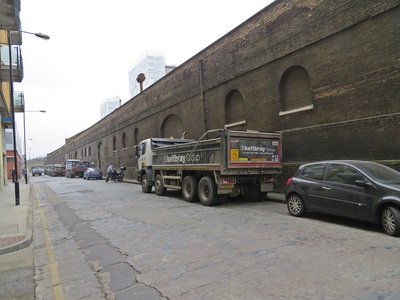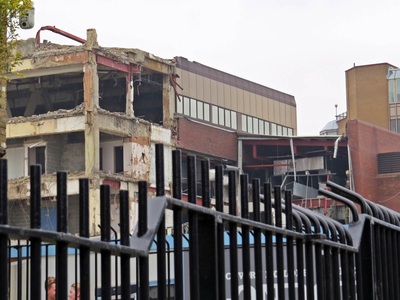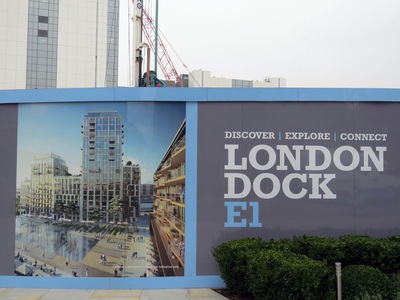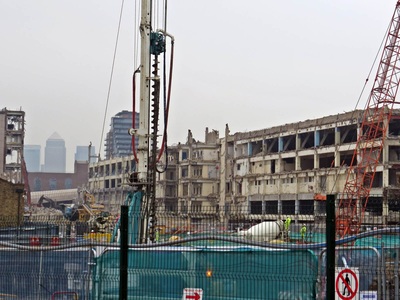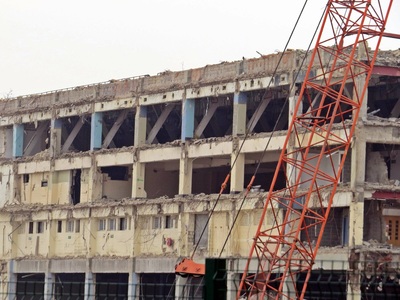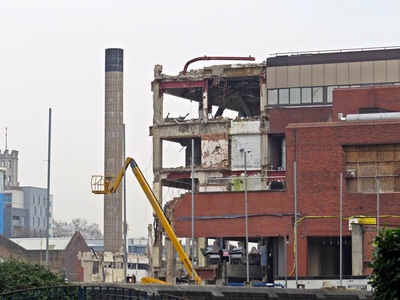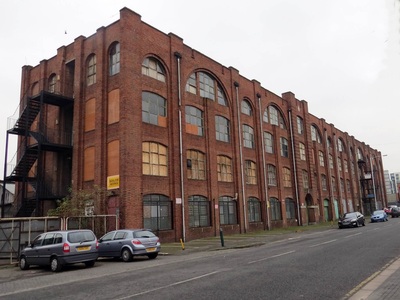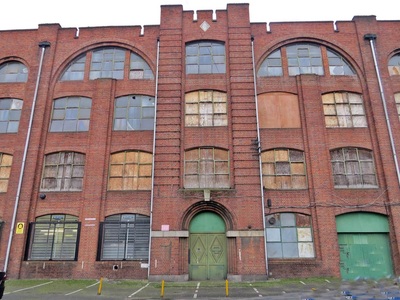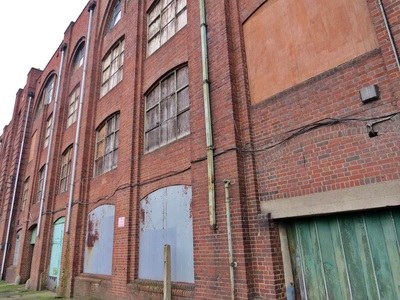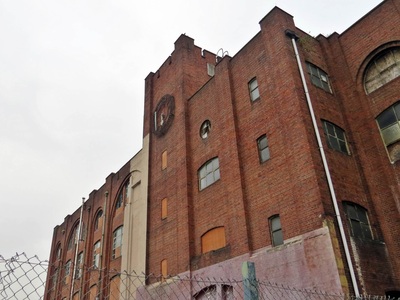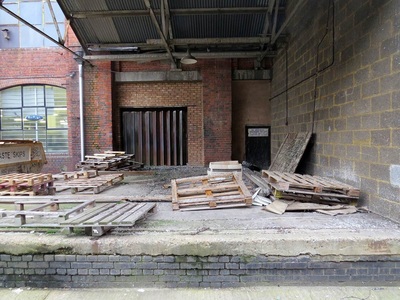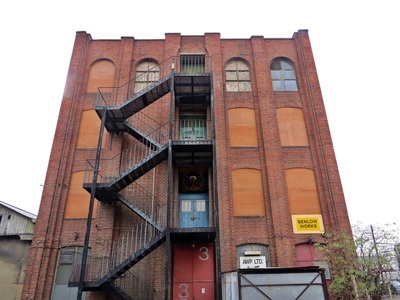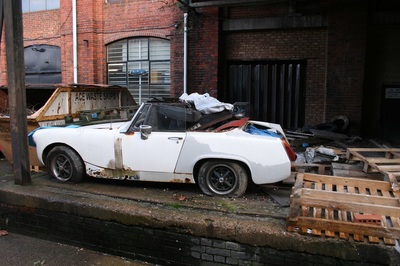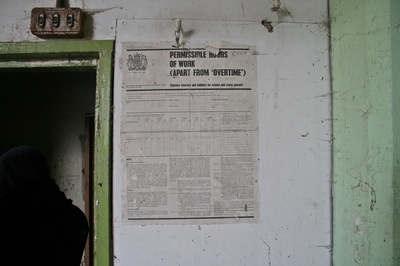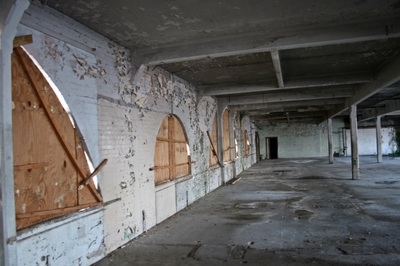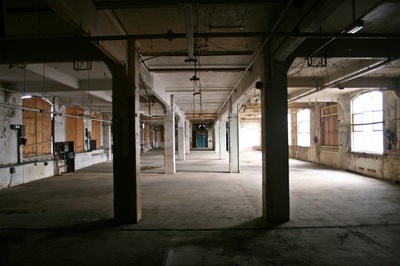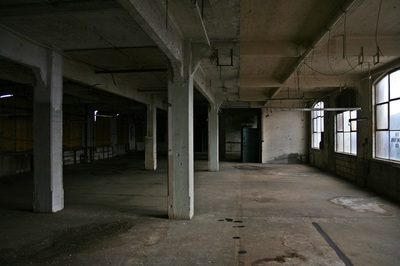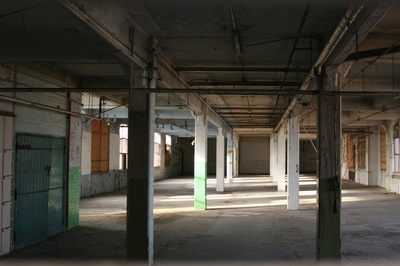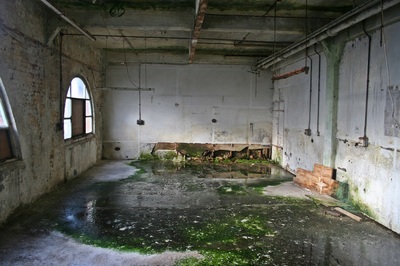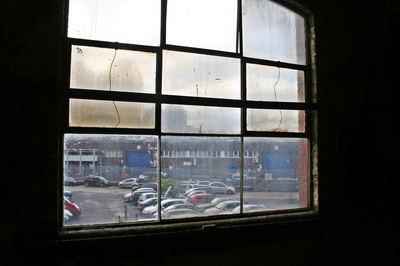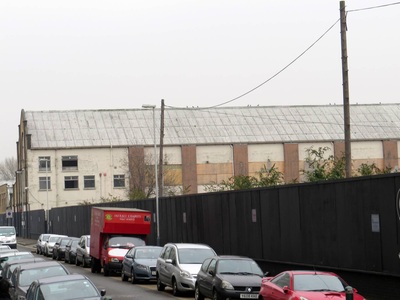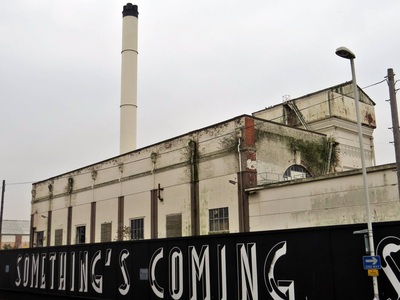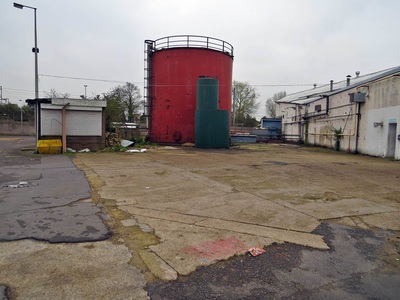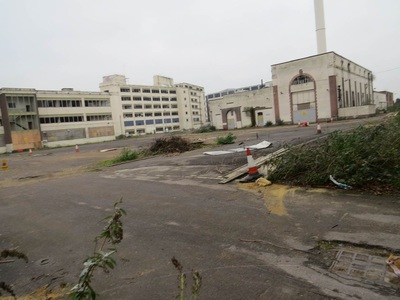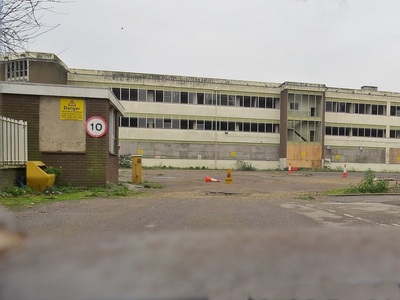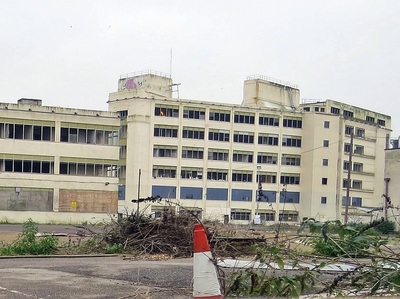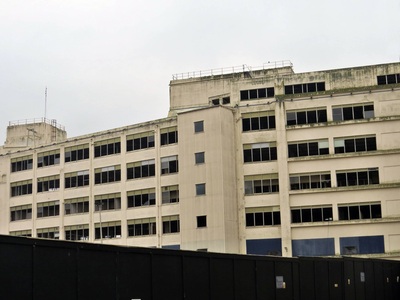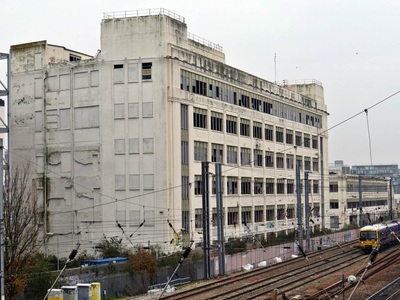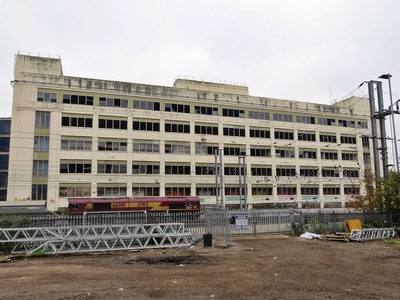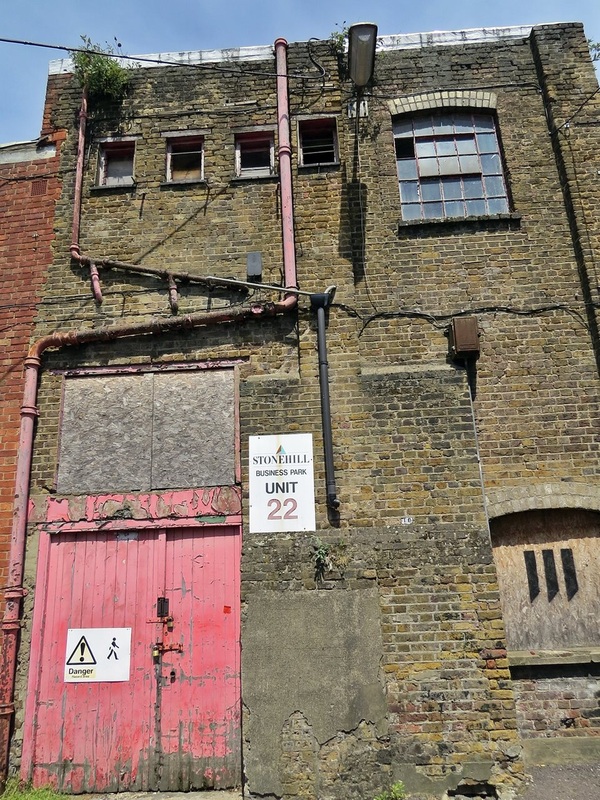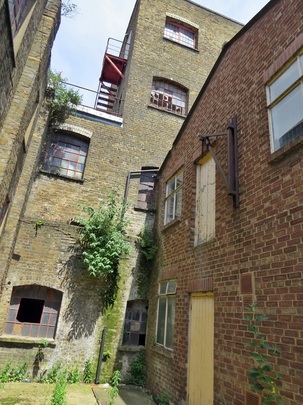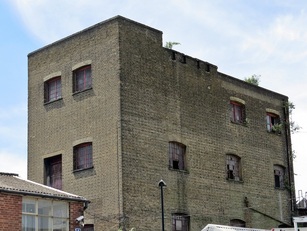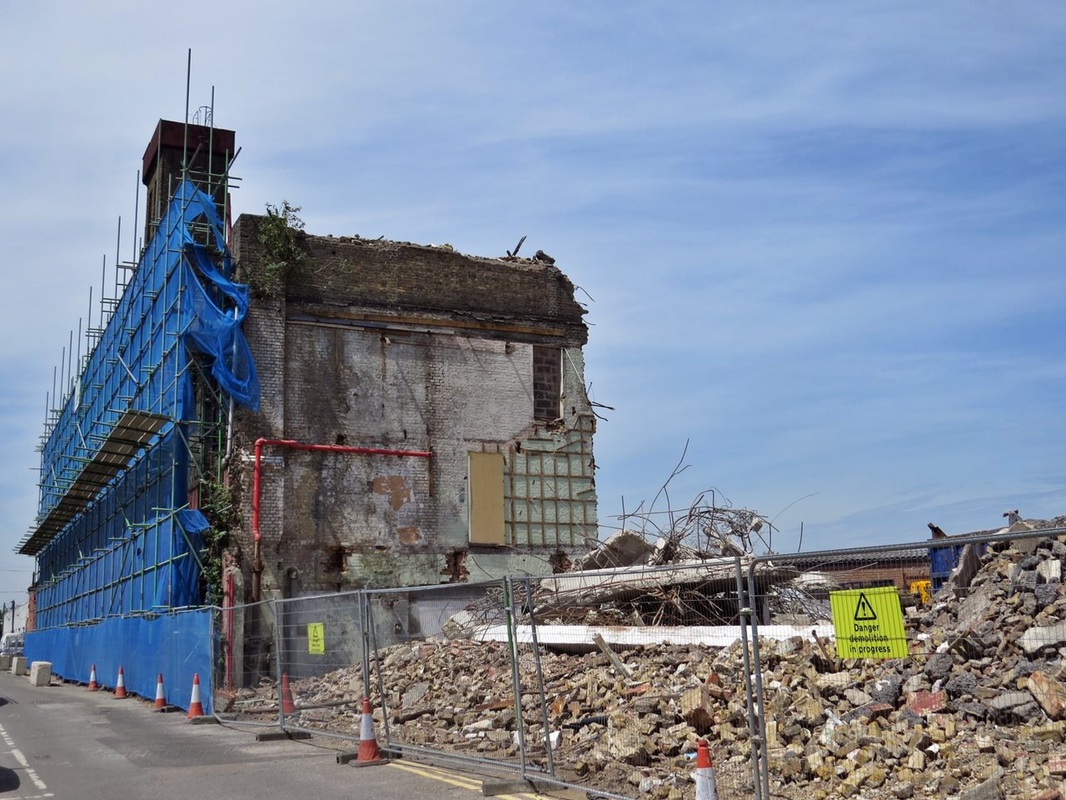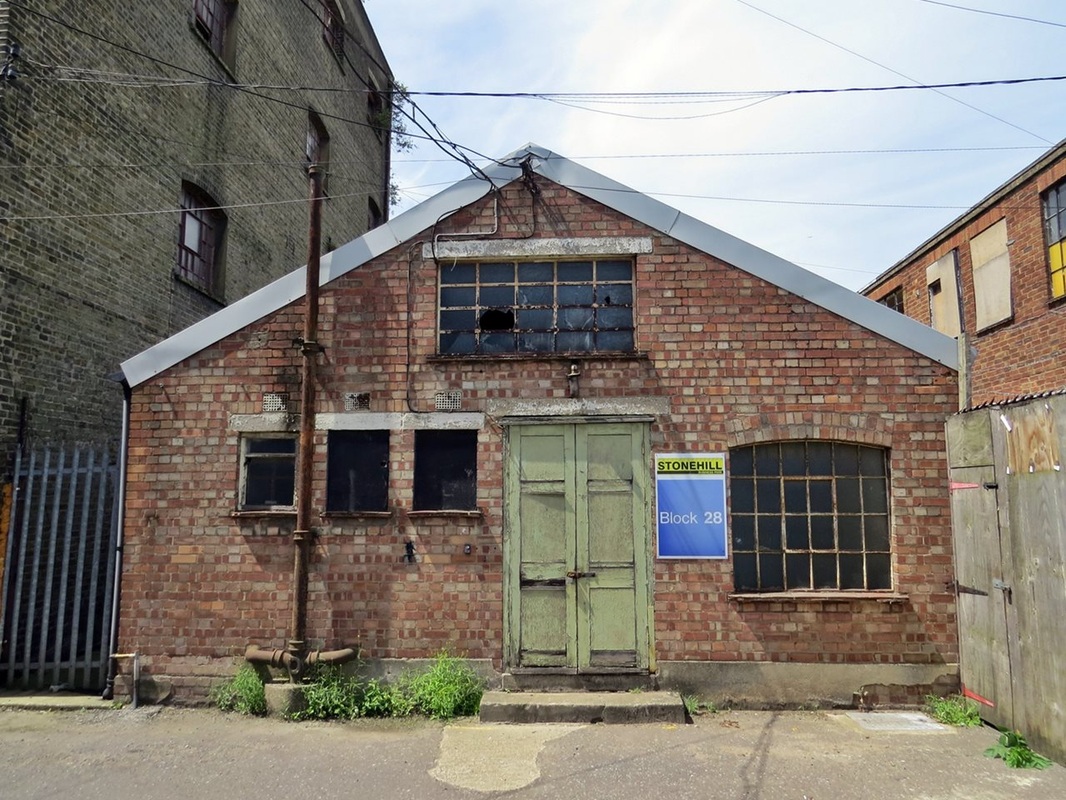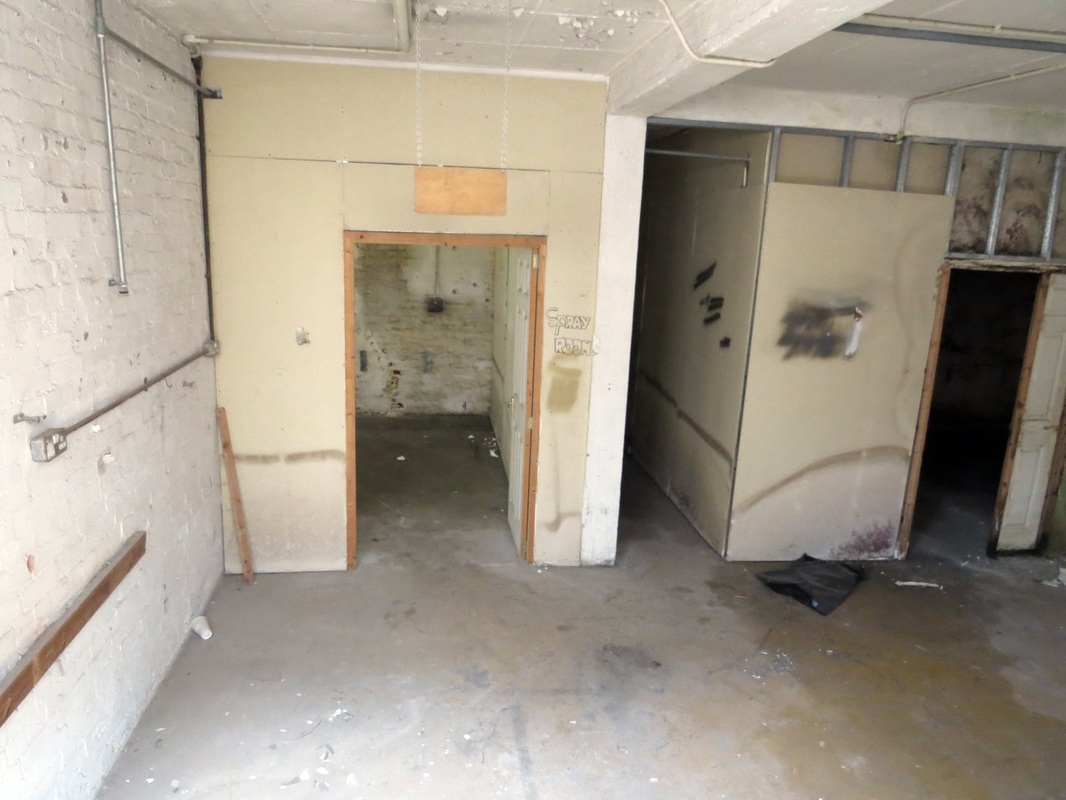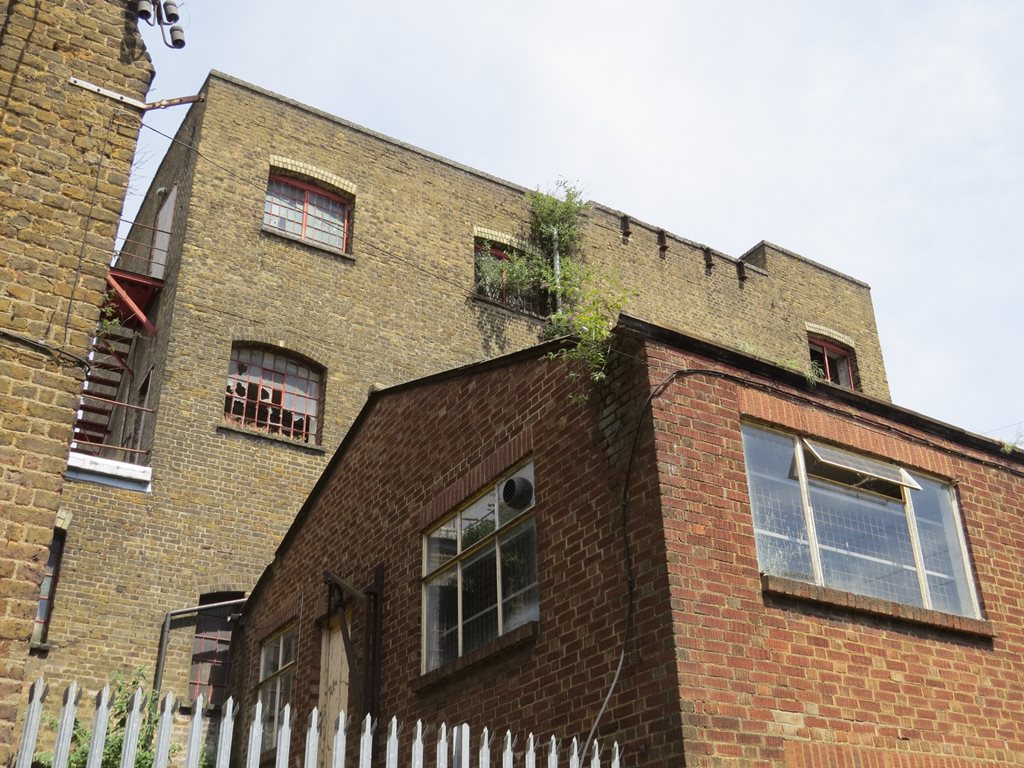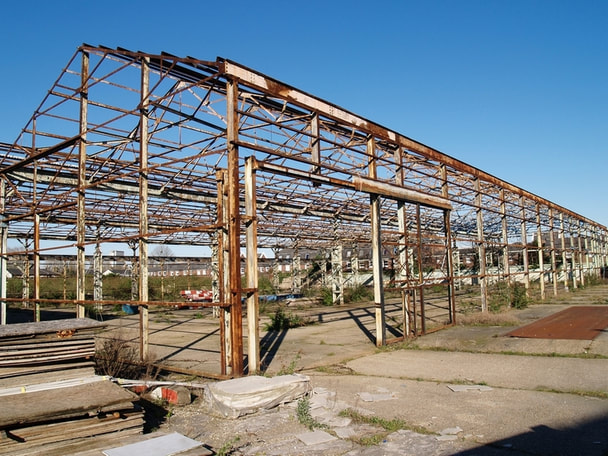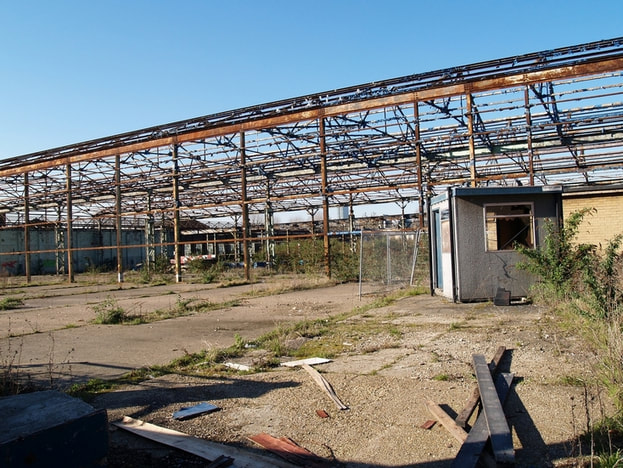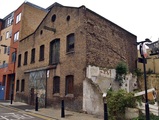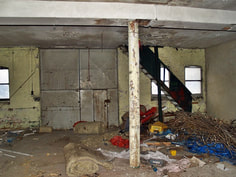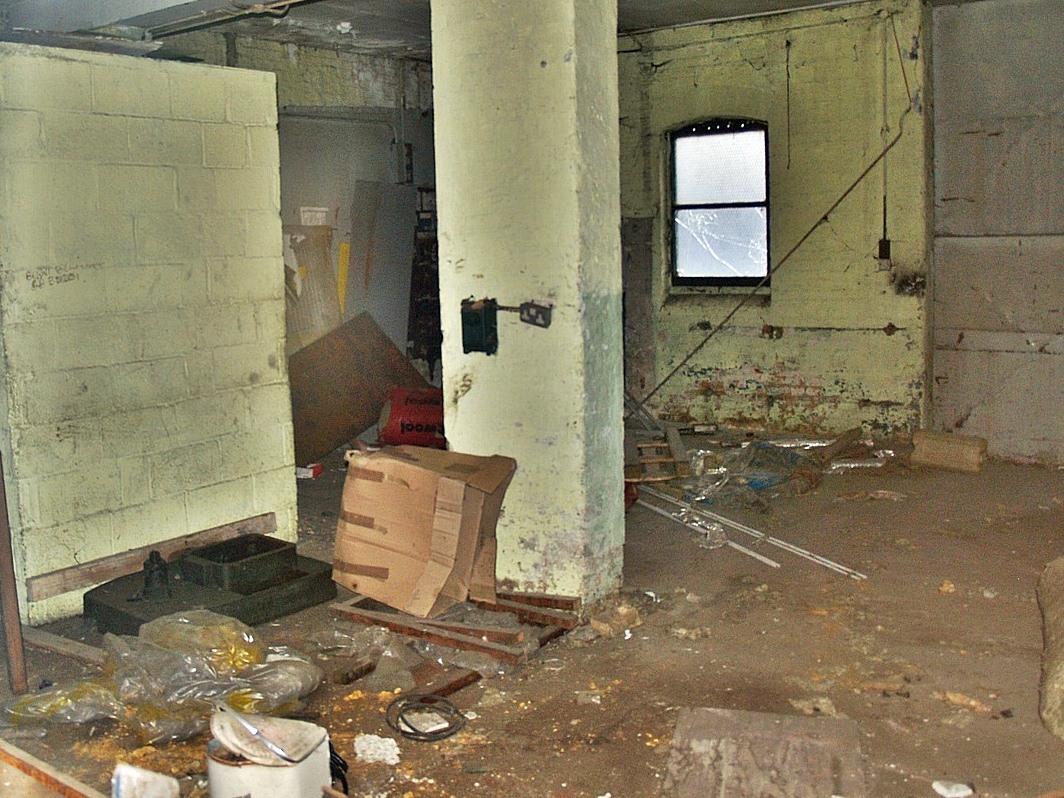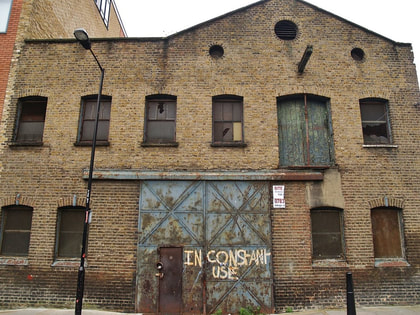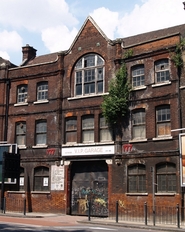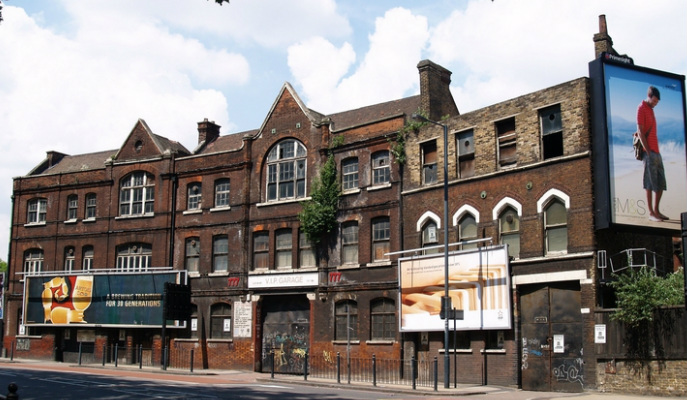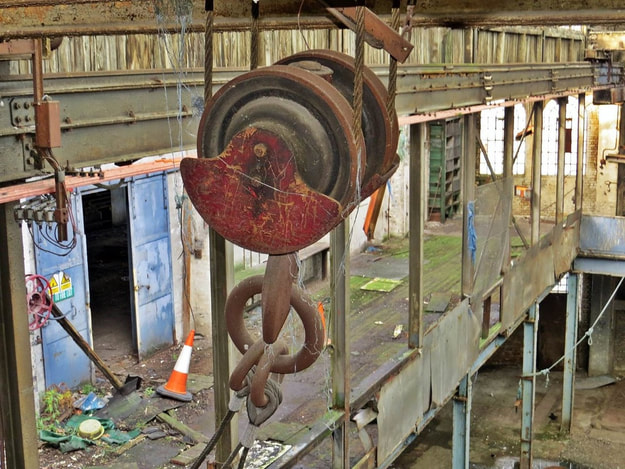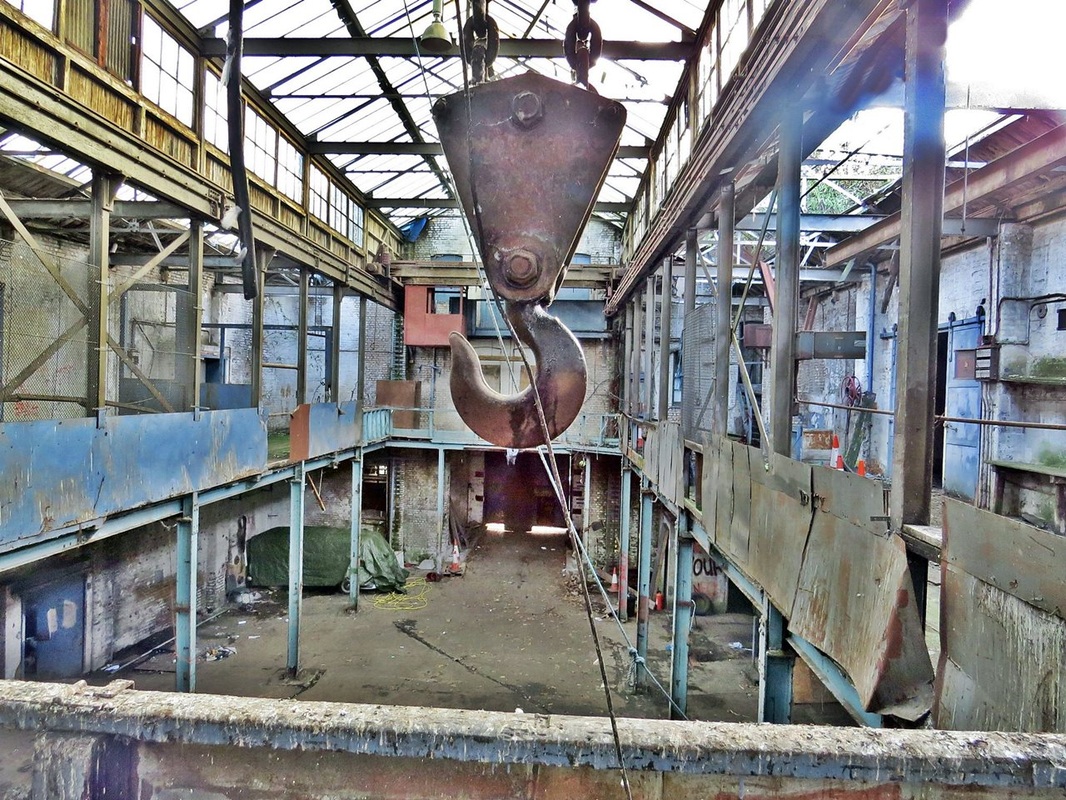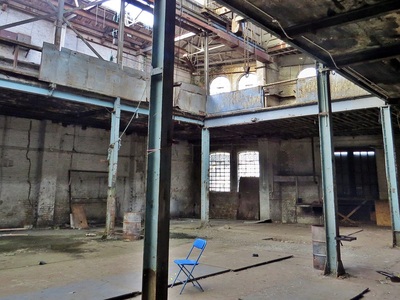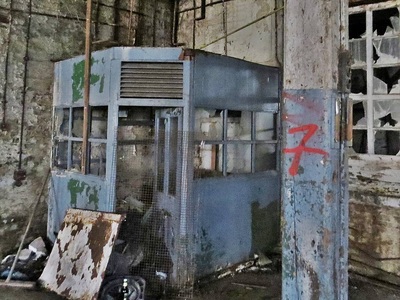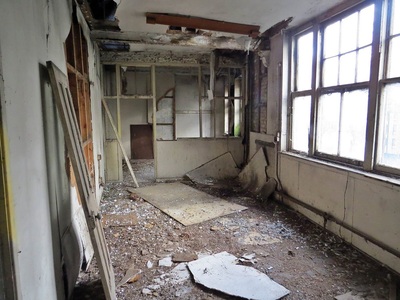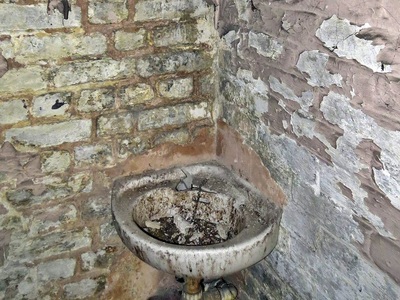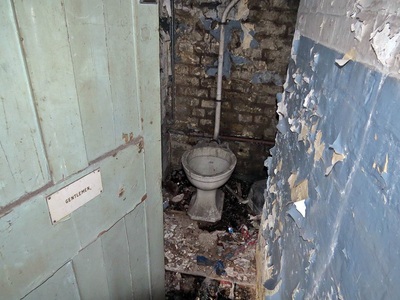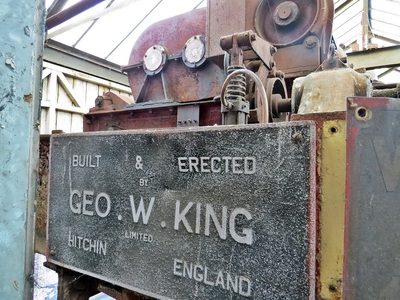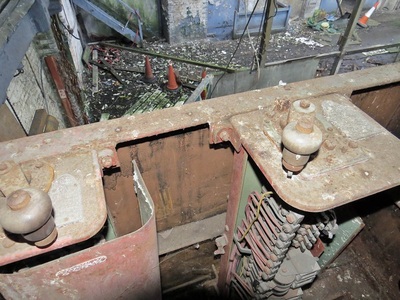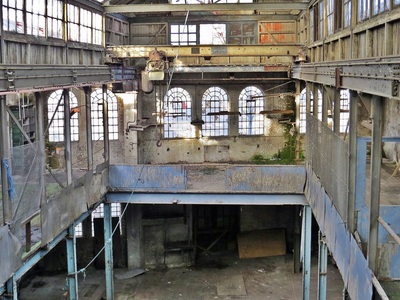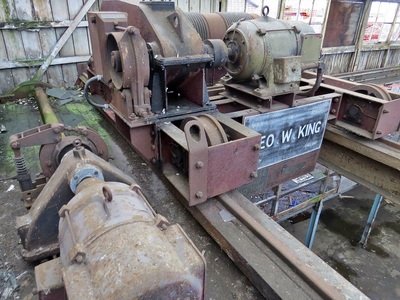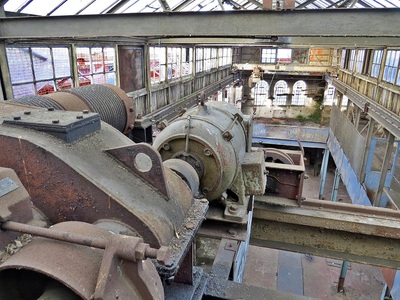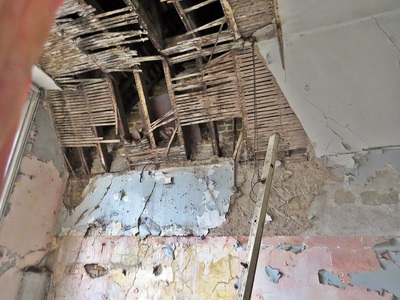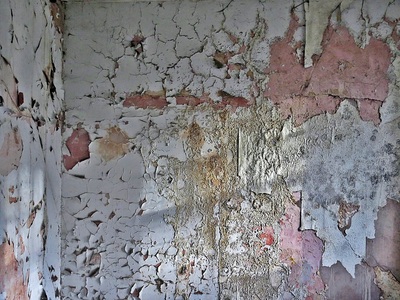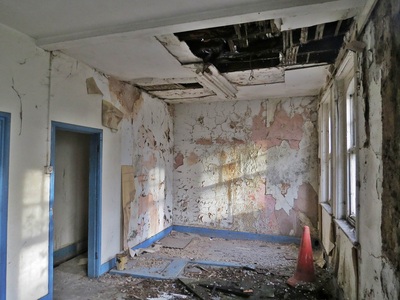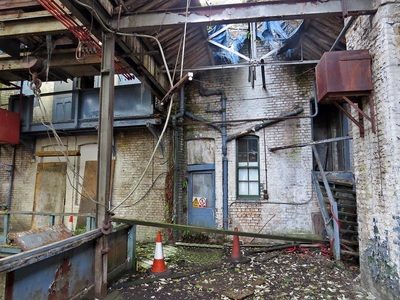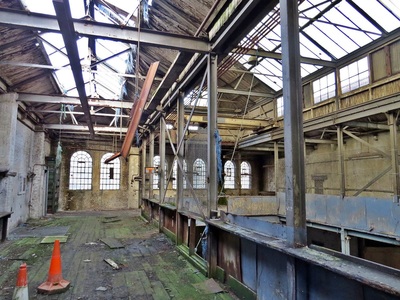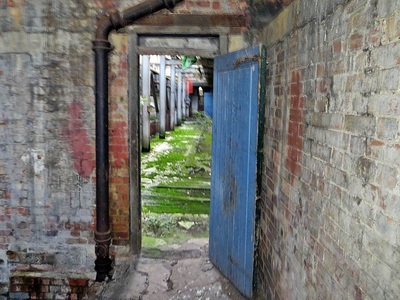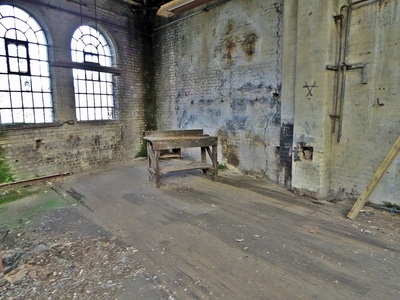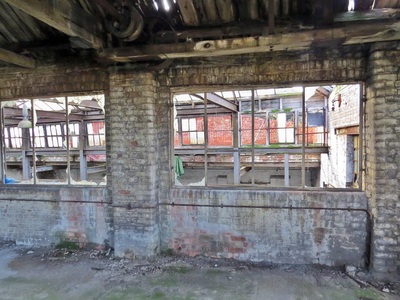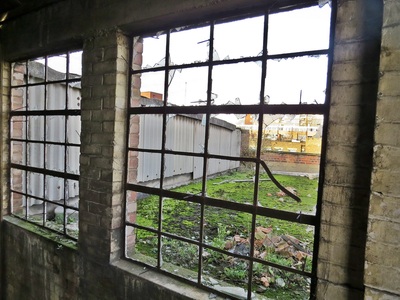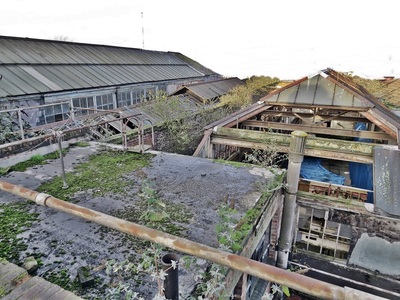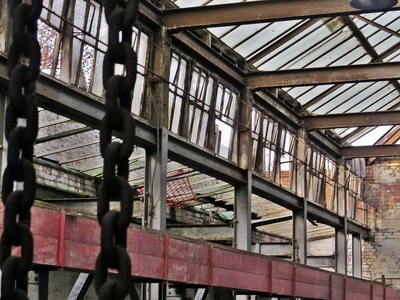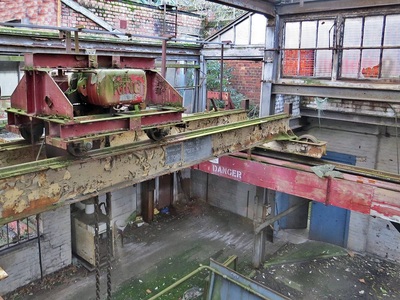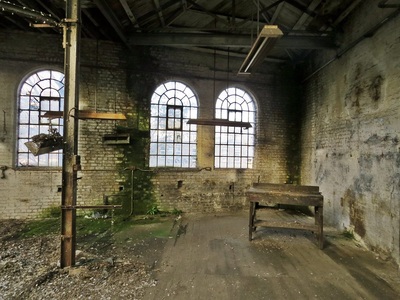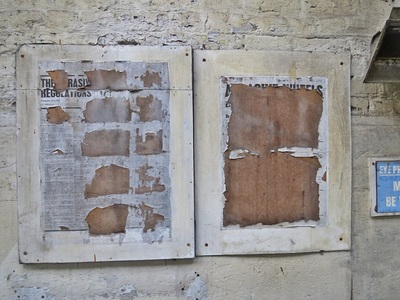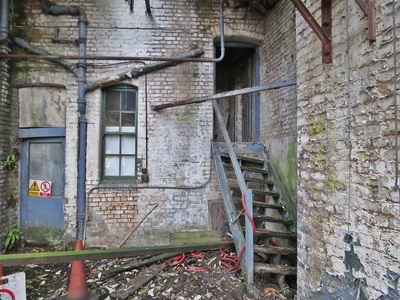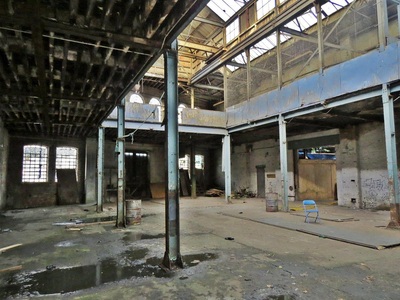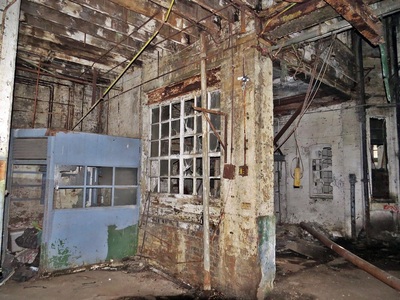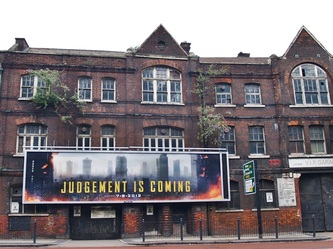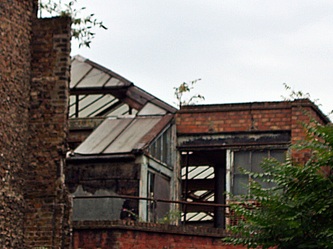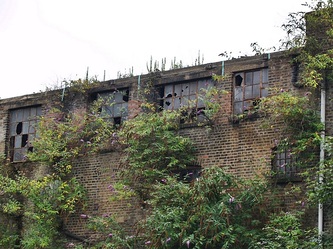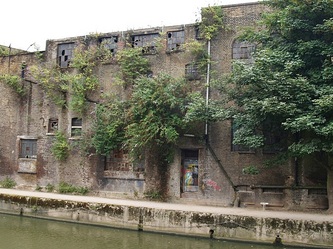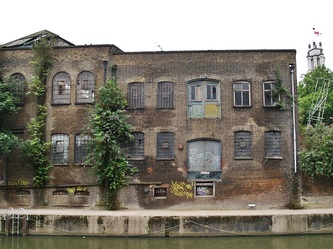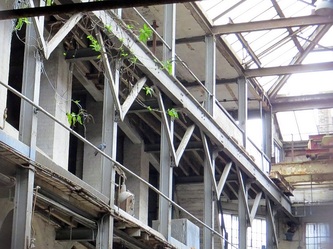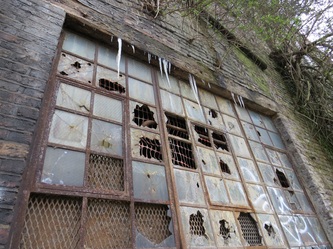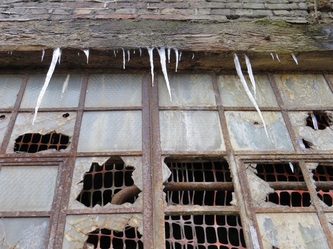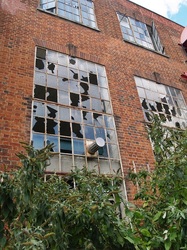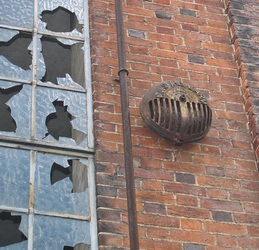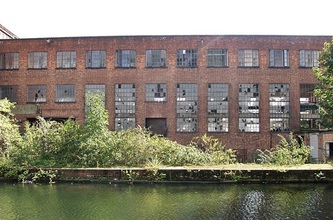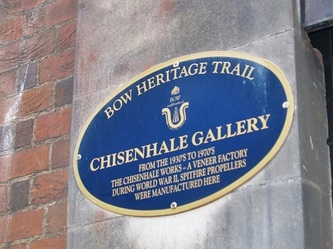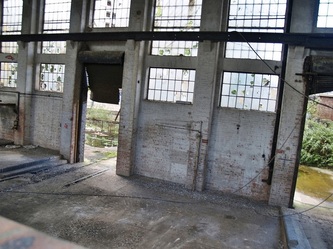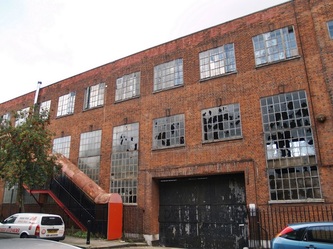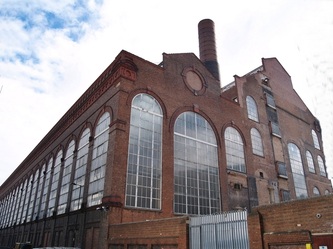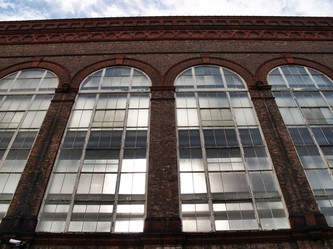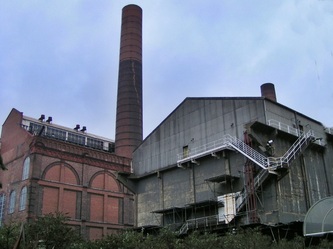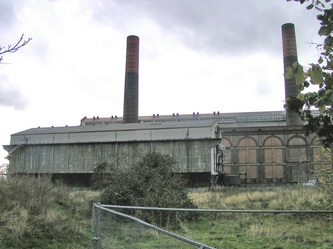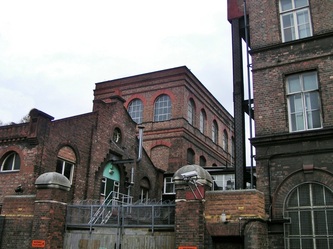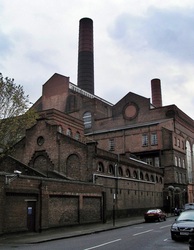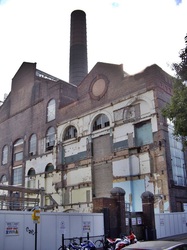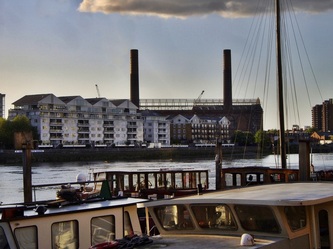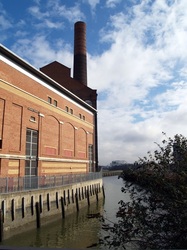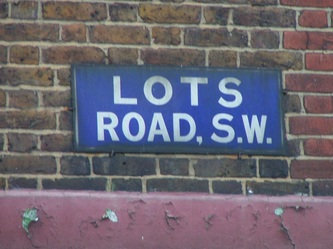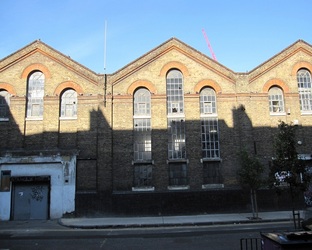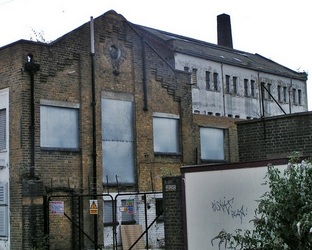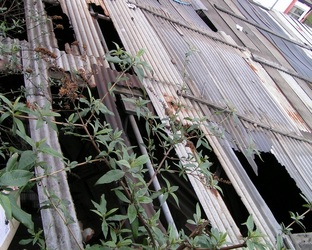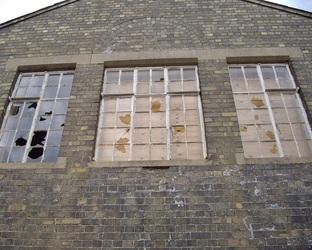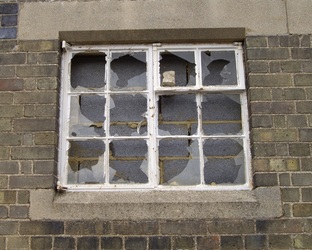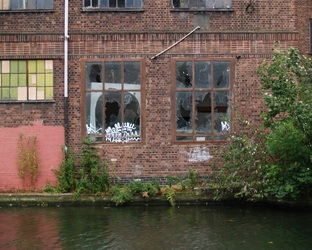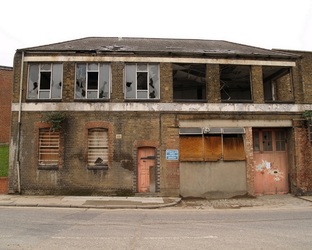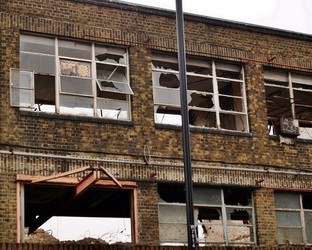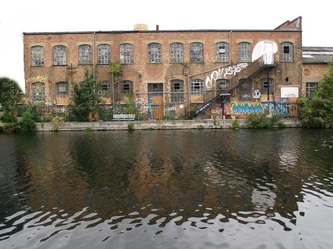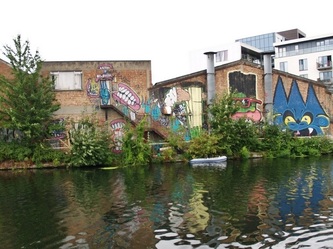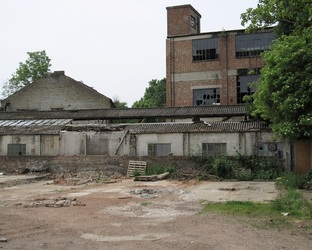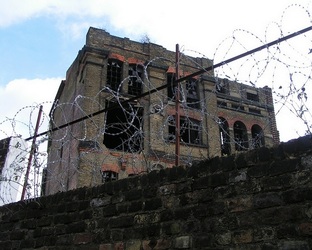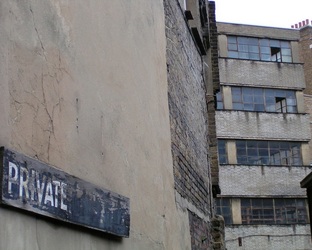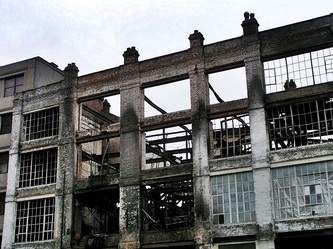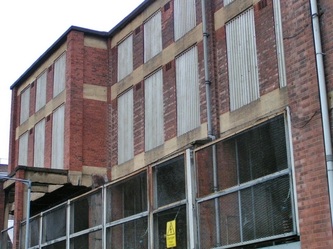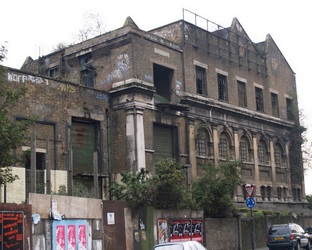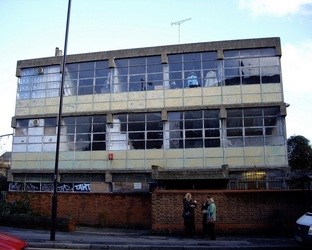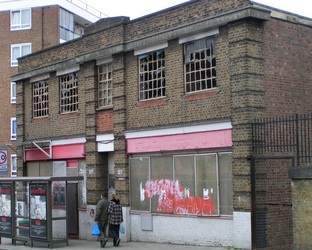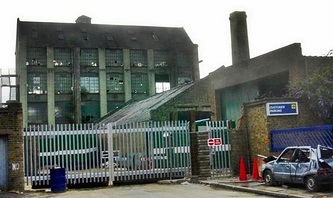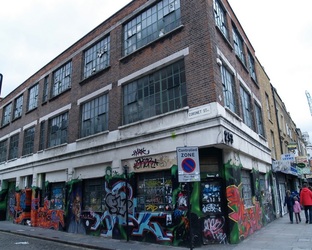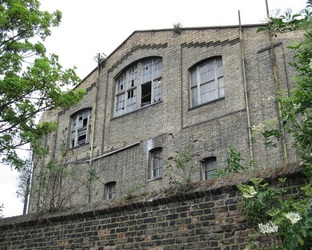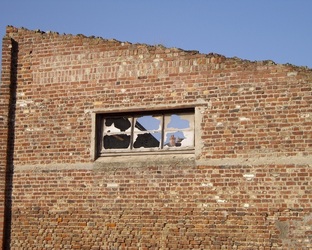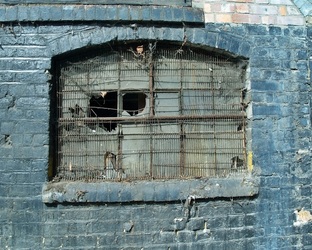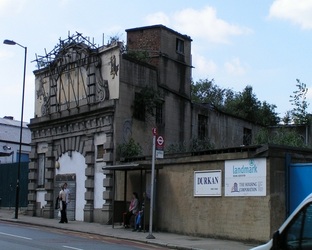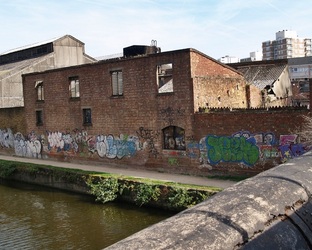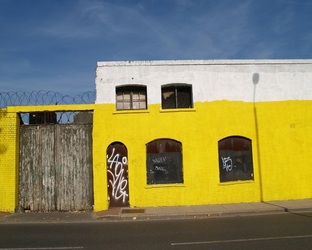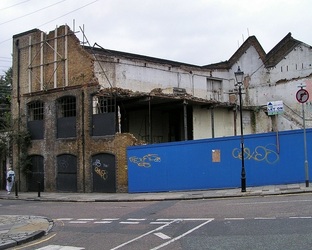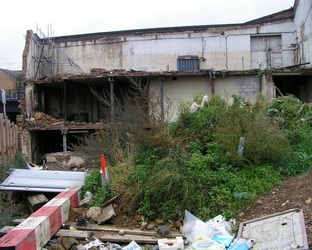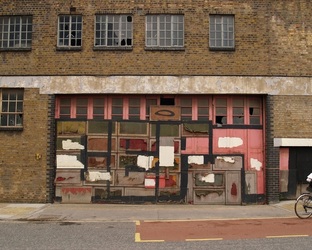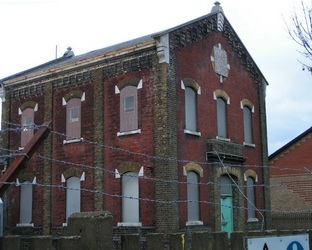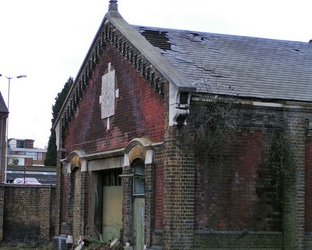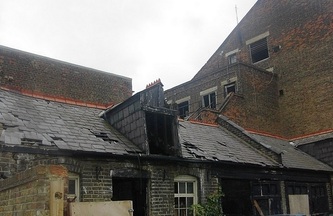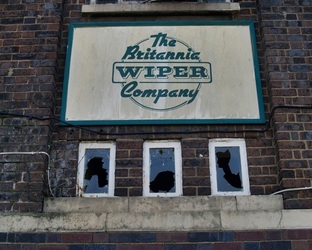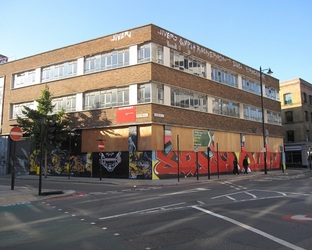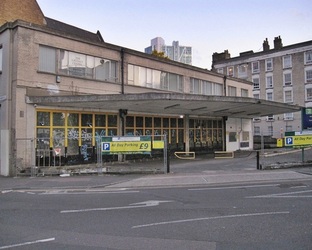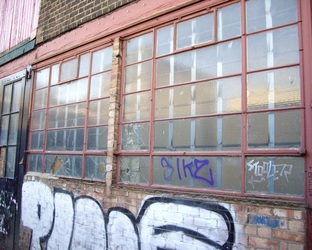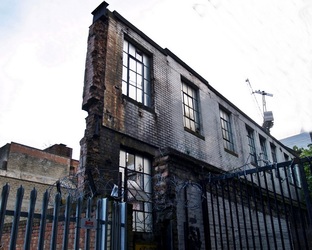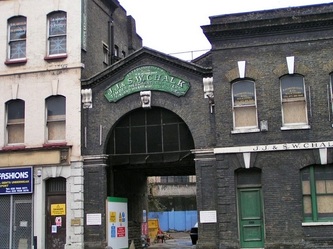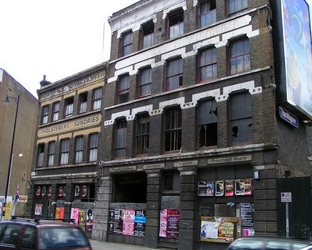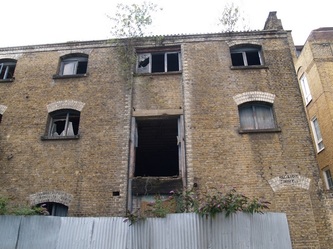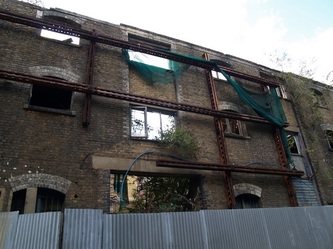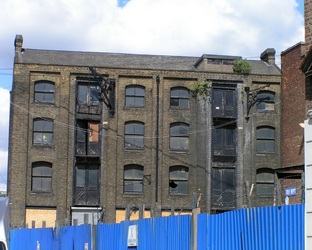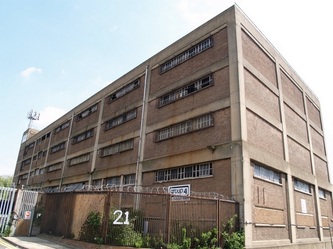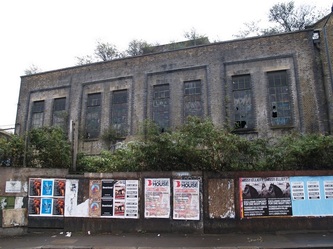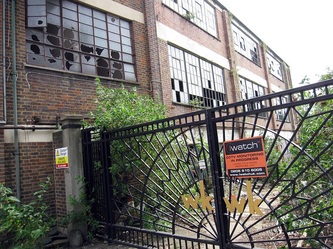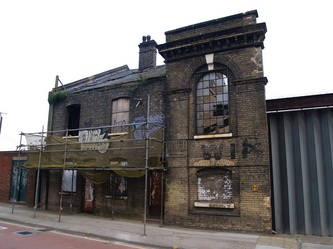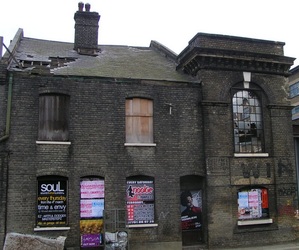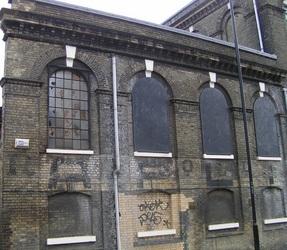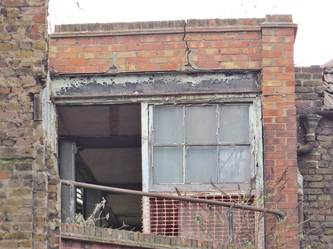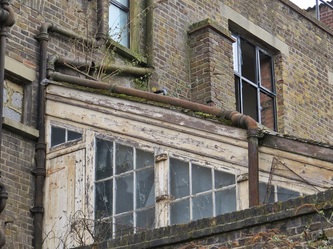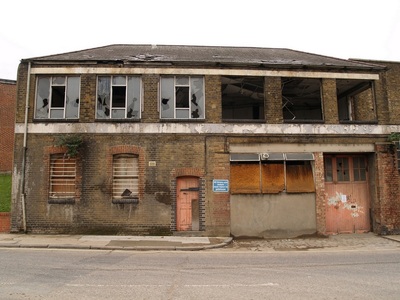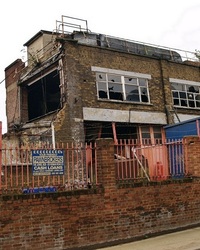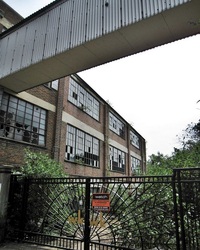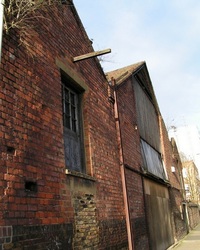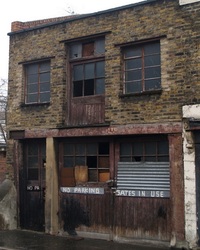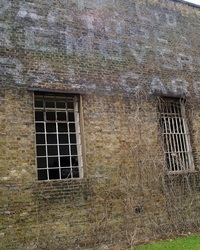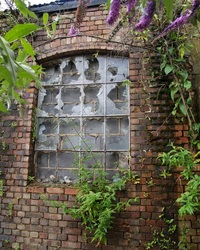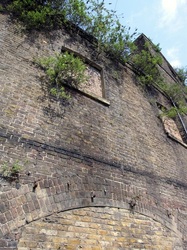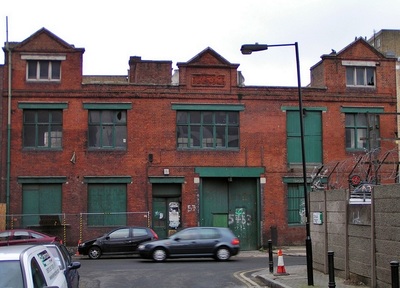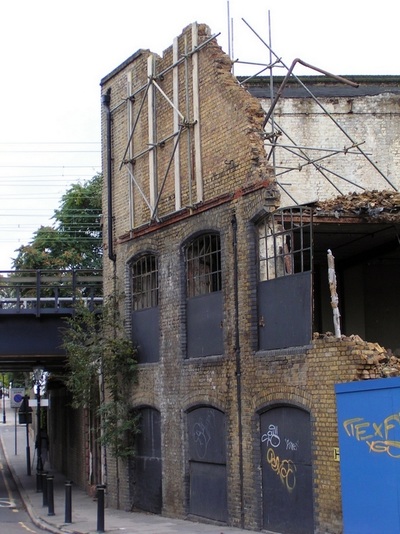Harefield Chalk Quarry Works - Harefield, UB9
Along the Grand Union Canal right on the edge of the London Borough of Hillingdon just before you get to Hertfordshire is this former quarry works. Many have labelled this on the net as the Harefield Limeworks though on various old maps from the 1870s to the 1970s the site is only identified as a chalk quarry and there seems to be no historical documents about any limeworks. Chalk is a type of limestone, but I have as yet to find any historical reference to limestone or burning chalk to form quick lime (calcium oxide). What we can agree on is that these days everyone nicknames it the Hanging Monkey due to the large monkey dangling from a chain high up the high steel frame of an old building overlooking the Canal.
There is evidence of shafts and chutes where the chalk was loaded onto waggons on a narrow gauge railway. Some track is still visible inside a dangerous looking tunnel. The site was accessible by road and by canal.
The chalk pits in this vicinity doubled as alien landscapes in TV productions and were used for filming Blakes 7 during the 1970s and Doctor Who episodes The Three Doctors (William Hartnell, Patrick Troughton & Jon Pertwee, 1972) and Earthshock (Peter Davison,1982). Since the pits closed they were used as a landfill site which has subsequently closed. Nobody knows just how the stuffed monkey got there or more recently the Superman bear with a mask and a cape suspended in a kayak from one of the gilders with attached flag with the inscription 'TEAM GB'
Recent proposals to demolish the existing derelict industrial building and constructing 9 four-storey residential town houses were refused.
The chalk pits in this vicinity doubled as alien landscapes in TV productions and were used for filming Blakes 7 during the 1970s and Doctor Who episodes The Three Doctors (William Hartnell, Patrick Troughton & Jon Pertwee, 1972) and Earthshock (Peter Davison,1982). Since the pits closed they were used as a landfill site which has subsequently closed. Nobody knows just how the stuffed monkey got there or more recently the Superman bear with a mask and a cape suspended in a kayak from one of the gilders with attached flag with the inscription 'TEAM GB'
Recent proposals to demolish the existing derelict industrial building and constructing 9 four-storey residential town houses were refused.
West Hendon, NW9 - East German Trade Union Federation
This building at 110-124 West Hendon Broadway built in the 1930s was an attractive local landmark with it's Art Deco features, ornate tiling and floral clock in the gardens on the slope to the front. It was originally the premises of Edmunds Walker & Co who were a distributor of car parts here from the 1930s until the late 1960s.
Most interestingly, from the 1970s the building was the UK headquarters of The Free German Trade Union Federation (the Freier Deutsche Gewerkschaftsbund - the FDGB, an East German organisation) which was then dissolved in 1990 due to German reunification. During its existence in Hendon, local gossip was that it was a front for an espionage operation.
From 1993 to 2002 the building was named Philex House after Philex who are a distributor of electronics who are now based elsewhere outside of London. Their present website refers to their old premises as 'a former East German Embassy.'
The building was later occupied by Bergin, a distributor of plastic products, and finally, it became the Tile Factory Outlet, a retailer of wall and floor tiles.
Now the building is derelict and the floral clock is overgrown. The whole site is a magnet for fly-tippers. During my visit the (recently stepped up) on site security explained that unscrupulous builders and house clearance operators had been using this site as an unauthorised dumping ground. Apparently, council officers ordered a clean-up as a result of health and safety concerns.
Most interestingly, from the 1970s the building was the UK headquarters of The Free German Trade Union Federation (the Freier Deutsche Gewerkschaftsbund - the FDGB, an East German organisation) which was then dissolved in 1990 due to German reunification. During its existence in Hendon, local gossip was that it was a front for an espionage operation.
From 1993 to 2002 the building was named Philex House after Philex who are a distributor of electronics who are now based elsewhere outside of London. Their present website refers to their old premises as 'a former East German Embassy.'
The building was later occupied by Bergin, a distributor of plastic products, and finally, it became the Tile Factory Outlet, a retailer of wall and floor tiles.
Now the building is derelict and the floral clock is overgrown. The whole site is a magnet for fly-tippers. During my visit the (recently stepped up) on site security explained that unscrupulous builders and house clearance operators had been using this site as an unauthorised dumping ground. Apparently, council officers ordered a clean-up as a result of health and safety concerns.
Terry writes to Derelict London: "As someone who as a kid passed the East German mission in West Hendon regularly, never once in 20 yrs did I or any of my mates ever see anyone come in or leave the building,the curtains were always closed.Yet, the clock at the front always worked and kept time and the plants were always kept in good nick, yet we never saw a gardener. There were plenty of rumours about spies, and one nutcase said bombs were stored there.Then all of a sudden, a philco sign I think was put up, and still nobody was seen, the van was parked but never moved. Once again it was put out that Russians had taken over the place, blimey some had vivid minds. All in over 30 years never once did I see anybody enter or leave."
Food Waste Works - Silvertown, E16One of the best known firms has recently left Silvertown. John Knights part of the PDM/Saria/ReFood Group started out in candle manufacturing over 135 years ago then Knight's Castile Soap & Primrose Soap (one of the most popular brands in the world) and evolved into a full-time food renderer. Until recently the plant processed more than 100,000 tonnes a year of food chain by-products, from local butchers, abattoirs and other meat producers producing renewable power, pet food ingredients, edible fats as well as ingredients for the organic chemical manufacturing. The Silvertown plant has relocated to Dagenham freeing up a large patch of valuable land beside the River Thames in an area that is seeing much regeneration though the immediate surroundings are still very industrial (for the moment, at least) with Tarmac works and the Tate & Lyle Golden Syrup factory. The aromas from the latter two are nothing compared to that smell from Knight's. In 2012, they were fined £120K after Newham Council received about 300 complaints from members of the public alleging odours from John Knight. According to the Council website, there were scores of complaints to the council from residents over a period of summer months. One described the stench as “a repugnant, distasteful, rancid odour that smells exactly like meat that has gone off ... a distinctive, rancid, pungent smell of rotten flesh”. The pictures here are of a small depot just outside the main site. |
Update: Derelict Export Packers - Brickfield Rd,
|
Silvertown, E16 - Junction of Hartmann Rd and Connaught Rd
Demolished in 2019 and a Marriott Hotel is under construction. Handy for City Airport.....
Brentford Regeneration Project
|
Since this website started in 2003 I have posted various photos of dereliction in and around Brentford High Street. Many new builds have been created around the area and plans are well underway to redevelop the rest of the area. According to the Evening Standard earlier in 2016: "Regeneration will transform Brentford’s high street and waterfront while new homes include factory and warehouse conversions with loft-style flats for young Londoners. Regeneration is set to wake up the high street......" Here are some photographs taken late in 2016 before it all changes: |
Brentford High Street
Wilson and Kyle Factory - Brentford High Street
Wilson & Kyle were an engineering company set up in nearby Catherine Wheel Yard in the 1920s then moved to these buildings on the High Street in 1950s and closed in 1998 and the site remains derelict - for the moment at least.They made/serviced fuel injectors for diesel engines.
Catherine Wheel Road, Brentford
Brent Way, Brentford
Dock Road, Brentford
Millennium Mills - Silvertown, E16
The immediately adjacent building to the Millennium Mills is the former Rank Hovis Premier Mill.
EAST HAM E6 - Disused Chemical Factory
This building was built for Burgoyne Burbidges and Co. who have a history of more than 260 years.Now based in Mumbai the company specialise in chemicals, solvents, dyes, amino acids etc. It originally began producing glassware and chemicals & drugs for Pharmacists in Moorgate moving to this East Ham site in 1892. After Burgoyne Burbidges left the site was a Newham Council Depot in the late 70s & early 80s. It had both stores and offices used for training. Much of this large factory site was demolished to make way for flats. Part of the main front building was taken over as a fire station and some has been left derelict as you can see in these photographs taken in 2016. It has been padlocked and chained for years I took photographs here in 2003 and nothing has changed. Travellers settled on the site in approximately 2001 but were evicted. The site is on the books of a film location agency who occasionally hire it out. |
Poplar, E14 - Phoenix Works
|
Originally a dog biscuit factory, the Phoenix works was until recently used for a wholesale food trade business. I walked by 5 Star (Edible) Products Ltd and Gandhi Cash and Carry frequently over the last few years and wondered how much longer it would be before this prime canalside site (next to the Limehouse Cut) gets bought up by developers. The site had a shisha bar operating under a tent from 4pm to 4am every day, seven days a week though this was closed by the police due to pressure from local residents.
Now Fairview Homes have taken over the site and demolition is well underway with hoardings proclaiming "Poplar Reborn" |
P & S Motors - Park Royal, W3This used car showroom occupied a prominent position on the A40 Western Avenue. In 2008, the Financial Services Authority cancelled the permission granted to P & S to carry on regulated activities and the company lost a legal wrangle lasting 7 years as the non-franchised car retailer used the Mercedes-Benz logo without its permission.
P & S went into liquidation in 2013 and the building has since been partly demolished/fallen apart and now the victim of some heavy fly-tipping. Nice view of the Travelodge though... There appear to be no current planning applications for this site. The "To Let" sign remains discarded within the site. |
Wick Lane - Bow E3 |
I was up near the Olympic Stadium and just off the Greenway I was surprised to find a couple of ancient industrial buildings that have been derelict since way before the Olympic bid was even proposed along. Just round the corner is a more recently vacated 1970s block last occupied by Dudley Stationers. A safety notice in the advanced state of decay fronts a fenced off disused piece of land with the odd abandoned vehicle - a taxi cab, white van and a mobile home, all adorned with graffiti (or should that be Streetart?) What certainly is old school graffiti is the Will You Marry Me? (I need a European Passport) daubed along the length of a fence fronting onto Wick Lane. I walked the pre Olympic site frequently in the early 2000s and fondly remember the Carpenters Road fridge mountain, the Pudding Mill River albeit clogged with tyres and the scores of abandoned cars & engine parts along Marshgate Lane. All that decay was cleared away and the Pudding Mill River culverted to make way for the stadium but as you can see from these pictures taken late in 2014, there are still pockets of dereliction and reminders of the area's pre Olympic landscape. |
Close to the Olympics 2012 site in 2015
Back in 2003 when I first started this website I loved wandering around the semi derelict industrial areas off Stratford High Street. I imagined all of this to be swept away by the regeneration but as you can see below there are a few areas around Marshgate Lane and Cooks Road in Stratford.
The Final Derelict parts of Wapping, E1As the London Docks declined after the Second World War and eventually closed in 1969, the Wapping area became run down, with some of the docks filled in, and various buildings left to decay. During the 1980s the London Docklands Development Corporation transformed the area when the warehouses started to be converted into luxury flats and new build homes on the site of the infilled Western Dock. These days there are just a few pockets of dereliction remaining in Wapping but not for much longer... More information about the decline of all the docks in London together with tracing modern-day clues as to their existence can be found in my London's Lost Rivers book. I also give a 3 hour walking tours of the Wapping area. |
125-129 Wapping High St - Wapping E1This former warehouse fronting Wapping High Street (opposite Wapping Station) was trading as Jacob Alex & Co, Paper Stock Merchants, 'all classes of Waste Paper Cleared. All Waste cleared guaranteed to be re-pulped.' in 1910-1911. In 1946, they were Jacob Alex & Co, Rags & Waste Papers. The rear of the building has been partially demolished. The rear is visible from the street behind though securely protected by a wall and heavy-duty spikes. Immediately the other side of the wall after a massive drop is the vent shaft of the railway line of the Thames Tunnel now used by the Overground. So, in other words, don't bother climbing that wall! Application has been made to retain the facade fronting Wapping High Street & redeveloping the site into a retail unit and 27 residential units. |
13-15 Cinnamon St - Wapping, E1The original buildings are believed to have been terraced housing according to a map dated 1875, but an 1894 map shows the plot as cleared and identified as ‘Recreation Ground’. The plot remains undeveloped until at least 1921. According to the planning documents this building is still in occasional use as storage for vehicles, although it is noted that it is not confirmed whether this use is indeed lawful. Application has been made to demolish the building and construct flats. |
14-16 Clegg St (Thames Autos) - Wapping, E1Situated on the site of a previous warehouse (that was built in 1860 & called the Messrs Innes Bros Warehouse) this is an early twentieth century single storey warehouse though inside there is a stairwell indicating that indicates there was originally another floor. Occupied by the Wapping Packers in the 1970s and last occupied by Thames Autos. Despite the address the main entrance of the building is actually on Cinnamon Street.
Application has been made to demolish the building & redeveloping the site into 4 town houses. |
Demolition of Fortress Wapping (News International) E1Rupert Murdoch moved his News International printing and publishing works into Wapping in 1986. The plant was nicknamed "Fortress Wapping" when sacked print workers effectively besieged it, mounting round-the-clock pickets and blockades in an ultimately unsuccessful attempt to thwart the move from Fleet Street to Wapping. More than 400 police officers were injured, and more than 1,000 arrests made during the dispute. The works have now closed, and most buildings are being demolished to make way for the London Dock development - 1,800 new homes with a centrepiece tower 25 storeys high. The development will preserve a docks-era Grade II-listed rum warehouse, which will be retained and converted into restaurants, cafés and small offices. |
HAYES, UB3 - BENLOW WORKS (The Orchestrelle/Aeolian Pianola Piano Factory)
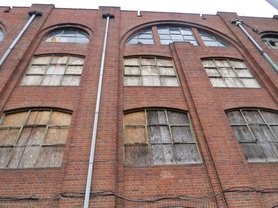
Purchased from a farmer in 1908 this factory building was erected the following year.
The original purpose of the factory was to produce Orchestrelle organ players - a reed organ constructed on the principle of the mechanical player piano and designed to imitate the effect of an orchestra. Aeolian also had a manufacturing plant in Gotha, Germany. In 1912, the Orchestrelle Company was transformed into a public limited company registered in Britain, and after the Great War it expanded considerably, By 1920 it had effectively changed its name to Aeolian, in line with the American parent company.
A perforated music roll factory was erected in 1910, and a six-storey building and was built at in rear in 1920 to accommodate a piano factory. These buildings were demolished in 1977.
Trade declined in the early 1930s and this original building from 1909 was bought after the Second World War by a property owner named Benny Lowenthal, and he renamed it the Benlow Works after himself. Over the years Kraft Cheese and Walls Sausages and Meat Pies used the premises.
Today this Edwardian Grade II listed building looks in a sorry unloved state with many broken and boarded up windows. Partially derelict, there are some parts of the building still in use by a sheet metal works. According to English Heritage, recent temporary repairs have been undertaken by the owner, so that the building is in a weather tight condition but no solution has been agreed for future use as yet.
The original purpose of the factory was to produce Orchestrelle organ players - a reed organ constructed on the principle of the mechanical player piano and designed to imitate the effect of an orchestra. Aeolian also had a manufacturing plant in Gotha, Germany. In 1912, the Orchestrelle Company was transformed into a public limited company registered in Britain, and after the Great War it expanded considerably, By 1920 it had effectively changed its name to Aeolian, in line with the American parent company.
A perforated music roll factory was erected in 1910, and a six-storey building and was built at in rear in 1920 to accommodate a piano factory. These buildings were demolished in 1977.
Trade declined in the early 1930s and this original building from 1909 was bought after the Second World War by a property owner named Benny Lowenthal, and he renamed it the Benlow Works after himself. Over the years Kraft Cheese and Walls Sausages and Meat Pies used the premises.
Today this Edwardian Grade II listed building looks in a sorry unloved state with many broken and boarded up windows. Partially derelict, there are some parts of the building still in use by a sheet metal works. According to English Heritage, recent temporary repairs have been undertaken by the owner, so that the building is in a weather tight condition but no solution has been agreed for future use as yet.
Below are some pics of the Benlow Works taken by Michael Davern in November 2015
HAYES, UB3 - THE OLD VINYL FACTORY
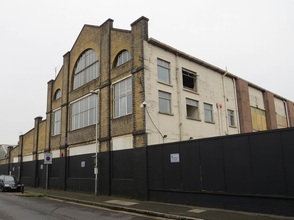 The decaying Old Vinyl Factory 2014
The decaying Old Vinyl Factory 2014
This site in Hayes was created in 1907 for The Gramophone and Typewriter Company, an American manufacturer of the first domestic gramophone players. The "record players" in those days were carefully crafted in wooden cabinets. As the company grew it began to press its own records (using a shellac-based compound before vinyl was introduced) and released them under the new label His Master’s Voice (HMV). More buildings were added as manufacturing expanded despite a break during the First World War for munitions production.
By 1929 the site covered more than 58 acres, with 7,500 people employed there & in 1931 the company merged with the Columbia Gramophone Company, to create Electric and Musical Industries Ltd (EMI). The manufacture of radios, televisions, fridges and other domestic appliances followed plus the world’s first airborne radar system – used to win the Battle of Britain, was developed here. The site was bombed in 1944, killing 37 workers.
In 1952 EMI released its first vinyl 33rpm albums as well as 7 inch singles.In 1962 EMI subsidiary Parlophone signed the Beatles whereby all the records were manufactured here by an on-site workforce which totalled 14,000 people. The Rolling Stones, The Beach Boys, Elvis Presley & Cliff Richard were just some of the other acts to have records pressed at this plant.
EMI moved its operations elsewhere in the mid-1970s and many of the buildings on the site moved over to defence electronics development and production. Two buildings on the site (not pictured here) were g were renovated in recent years and now occupied as high spec offices served by a substantial surface car park
Plans propose to turn the derelict part of the site (pictured here) into a phased £250 million programme to create a mixed-use development - business space, up to 510 new homes, a multiplex cinema, restaurants, cafés and bars, car parking and landscaped public space.Some of the older industrial buildings will be refurbished and brought back into use. The Powerhouse will become the home of the new combined heat and power scheme for the entire site, and the home of a live music venue and a museum celebrating The Old Vinyl Factory’s industrial and cultural history.
http://www.theoldvinylfactory.com/
By 1929 the site covered more than 58 acres, with 7,500 people employed there & in 1931 the company merged with the Columbia Gramophone Company, to create Electric and Musical Industries Ltd (EMI). The manufacture of radios, televisions, fridges and other domestic appliances followed plus the world’s first airborne radar system – used to win the Battle of Britain, was developed here. The site was bombed in 1944, killing 37 workers.
In 1952 EMI released its first vinyl 33rpm albums as well as 7 inch singles.In 1962 EMI subsidiary Parlophone signed the Beatles whereby all the records were manufactured here by an on-site workforce which totalled 14,000 people. The Rolling Stones, The Beach Boys, Elvis Presley & Cliff Richard were just some of the other acts to have records pressed at this plant.
EMI moved its operations elsewhere in the mid-1970s and many of the buildings on the site moved over to defence electronics development and production. Two buildings on the site (not pictured here) were g were renovated in recent years and now occupied as high spec offices served by a substantial surface car park
Plans propose to turn the derelict part of the site (pictured here) into a phased £250 million programme to create a mixed-use development - business space, up to 510 new homes, a multiplex cinema, restaurants, cafés and bars, car parking and landscaped public space.Some of the older industrial buildings will be refurbished and brought back into use. The Powerhouse will become the home of the new combined heat and power scheme for the entire site, and the home of a live music venue and a museum celebrating The Old Vinyl Factory’s industrial and cultural history.
http://www.theoldvinylfactory.com/
Stonehill Business Park - Edmonton, N18Here are a few pictures of a business park or trading estate ( as we used to call them) that has a few derelict parts, some demolition in process but the majority is still a thriving magnet for industry - a prominent industrial/commercial estate with a bus depot, scaffolders, demolition contractors, skip hire, vehicle salvage and ... a nightclub in one of the warehouses. |
Below are mainly exterior pictures of 777 Commercial Road. Some of these were taken of the back of the building from the Limehouse Cut
COLINDALE - The Hyde Workshop
Ive no idea of what this place was used for as there weren't any clues or debris around.
LIMEHOUSE - Incomplete Demolition
These industrial units one of which was a small printworks was halfway through being flattened when the demolition company went bust and the site was left unfinished for a couple of years. The site was cleared by 2015 and the building of flats on the site has been completed.
BOW E3 - Chisenhale Works

Morris Cohen built the Chisenhale Works building (called CHN Veneers) at the height of the Second World War in 1943 to produce veneer for the construction of Spitfire cockpits, as well as propellers and plywood for Mosquito aircraft. The works closed in 1972 and the building was then bought by the London Borough of Tower Hamlets.
In 1980, a group of artists and a dance collective took over the lease at Chisenhale Works as the Arts Place Trust after being forced to relocate from their studio building in Butler’s Wharf in Docklands. During the winter of 1980–1, the artists renovated part of the derelict building and created 40 studios. X6 Dance, meanwhile, established Chisenhale Dance Space in the derelict Black Horse Brewery building adjacent to Chisenhale Works.
Although many parts of the old works pictured here still remain derelict, there appear to be no plans to redevelop them.
In 1980, a group of artists and a dance collective took over the lease at Chisenhale Works as the Arts Place Trust after being forced to relocate from their studio building in Butler’s Wharf in Docklands. During the winter of 1980–1, the artists renovated part of the derelict building and created 40 studios. X6 Dance, meanwhile, established Chisenhale Dance Space in the derelict Black Horse Brewery building adjacent to Chisenhale Works.
Although many parts of the old works pictured here still remain derelict, there appear to be no plans to redevelop them.
CHELSEA - Lots Road Power Station
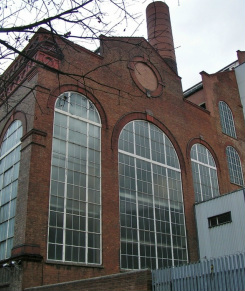
Built between 1902 and 1905, on what was originally waste ground known as 'the Lots'. Its primary purpose was to provide power to the District Line and three other underground lines run by the Underground Electric Railway company. It was built to run on coal, conveniently shipped in via the river (Chelsea Harbour is built on the site of the old wharves). In 1915, with the closure of the Stockwell power station, Lots Rd also began supplying power to the City and South London Railway systems. Between 1920 and 1925, the capacity of the station was increased from 63 to 92 megawatts and in 1928, the Central Line also obtained its power from Lots Rd. Major modernisation took place in 1963 when the number of chimneys were reduced from four to two and the power station was converted to run on oil. An adjacent building, on the corner of Lots Road, was built to cope with the additional requirements for more power. In 2000, with power due to be obtained from the National Grid supply, London Underground decided to sell the power station to developers Circadian and redevelopment is now well underway.
www.lotsroadpowerstation.co.uk
www.lotsroadpowerstation.co.uk
This is a gallery of some derelict factories and warehouses north of the river (click to enlarge):
Paul Talling's Derelict London - all photographs are copyright © 2003-2024
Click the envelope icon to join the mailing list for occasional news on website updates, new book releases and Paul's guided walking tours. Follow Derelict London on Facebook and Twitter
Please do not contact me with property/ filming/photo shoot location queries
Click the envelope icon to join the mailing list for occasional news on website updates, new book releases and Paul's guided walking tours. Follow Derelict London on Facebook and Twitter
Please do not contact me with property/ filming/photo shoot location queries

